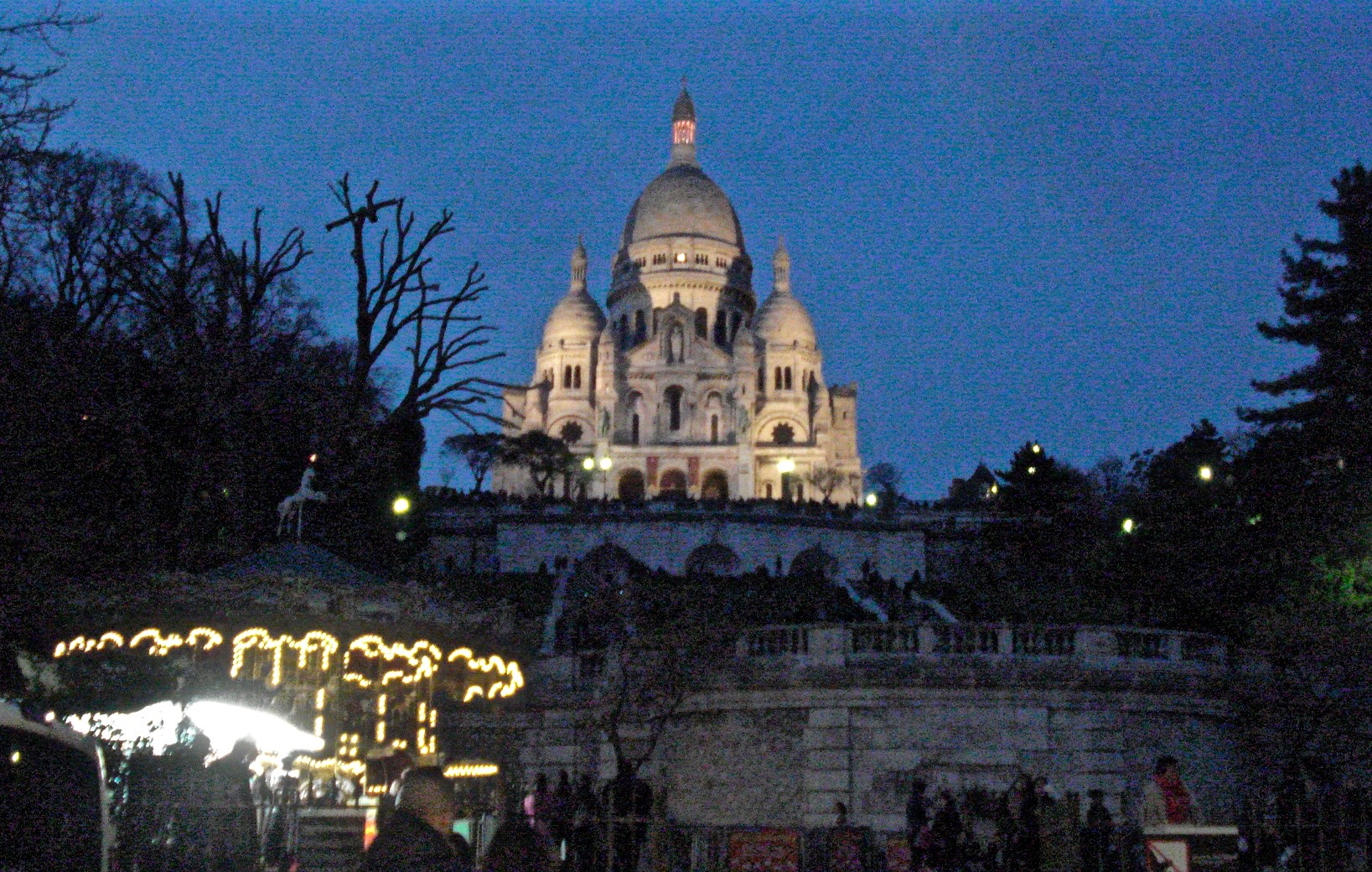Our Christmas Trip to Paris and Strasbourg
Our Christmas Vacation to Paris and Strasbourg
December 28, 2015
Paris
When I was a kid in Salt Lake City, we sometimes visited a fancy department store called The Paris. That is all I knew about Paris until we once visited Paris, Idaho, near the Utah border, and I got to walk around in the real town, or so I thought. But for this travelogue, we’re talking about Paris, France--whoa--the real thing! For the first time in Beth’s life, she had no other people to worry about and take care of at Christmas time, and so we decided to break with tradition and spend Christmas in France. Ethan, John, Beth, and I arrived in Paris on Friday morning, December 18, and after checking into our hotel, Le Littre in Montparnasse region, which was once the hangout for assorted jazz and blues musicians right after the French Revolution, we headed out to see what we could see. (Just kidding about the French Revolution; well, not actually about the French Revolution—that was no kidding matter, but about the timing of the musicians hanging out at our hotel. I don’t actually know when it was. Actually, I don't know if they really hung out at our hotel; Beth just told me that they did.)
When we visit a city we walk a lot; we wear ourselves out; but we also use the subway a lot. After recently using the underground in London and now the Metro in Paris, I have to say that Boston’s subway system seems simple and quaint by comparison. But we became experts navigating the Paris Metro. We tried to visit as many neighborhoods as we could. As you may know, Paris city proper is divided into neighborhoods called arrondissements. In the past I have been confused because the first arrondissement borders on the eighth and the fifth on the thirteenth, and so on. What kind of arrangement is that? But now I get it. Paris is an escargot. The first arrondissement is on the right bank of the Seine where the Louvre and Jardin des Tuileres are located; then next to it going clockwise is the second and then the third and so on, and they spiral out around each other forming concentric circles like a snail shell, each swirl getting further from the center. Our hotel was in the sixth arrondissement, almost bordering on the 15th, and our first stop on that first Friday was Luxembourg Gardens. We tried to get near the Palais du Luxembourg but quickly learned that there were both police and military guards with assault weapons everywhere in Paris, and most state buildings were restricted. (I suppose that provided a greater sense of security.) So instead of visiting the Palais, we had the first of many pastries at the first of many patisseries. (good trade off, don’t you think?)
On we walked to that wonderful bookstore on the Left Bank, Shakespeare and Company, where the likes of Ernest Hemingway, Ezra Pound, and James Joyce used to hang out and get their English fixes. It is a cramped, tiny bookstore, with old sofas, tiny reading rooms and an upstairs piano badly in need of tuning, which doesn’t stop people from playing it. Ethan played a little Summertime while we sat on a worn sofa and listened, before buying a few books. On our last trip to Paris, I read Hemingway’s A Moveable Feast, about his time in Paris. It was most appropriate. On this trip, I read a book that my friend, David Schactman, had recommended, A Little Paris Bookshop by Nina George, about a bookseller who lived on a barge on the Seine until he went on a journey down the canals and rivers of France. It was also most appropriate for this trip.
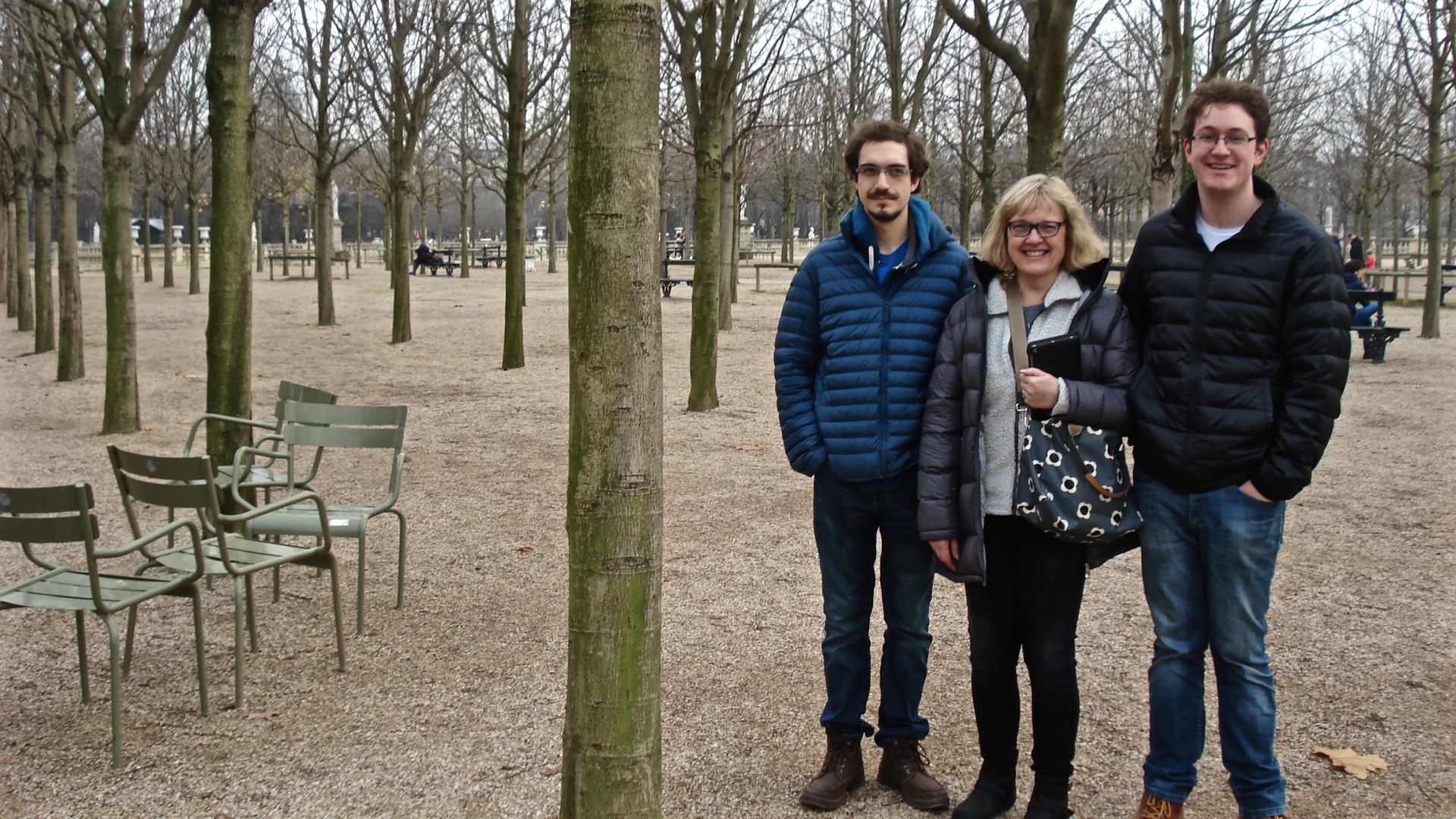
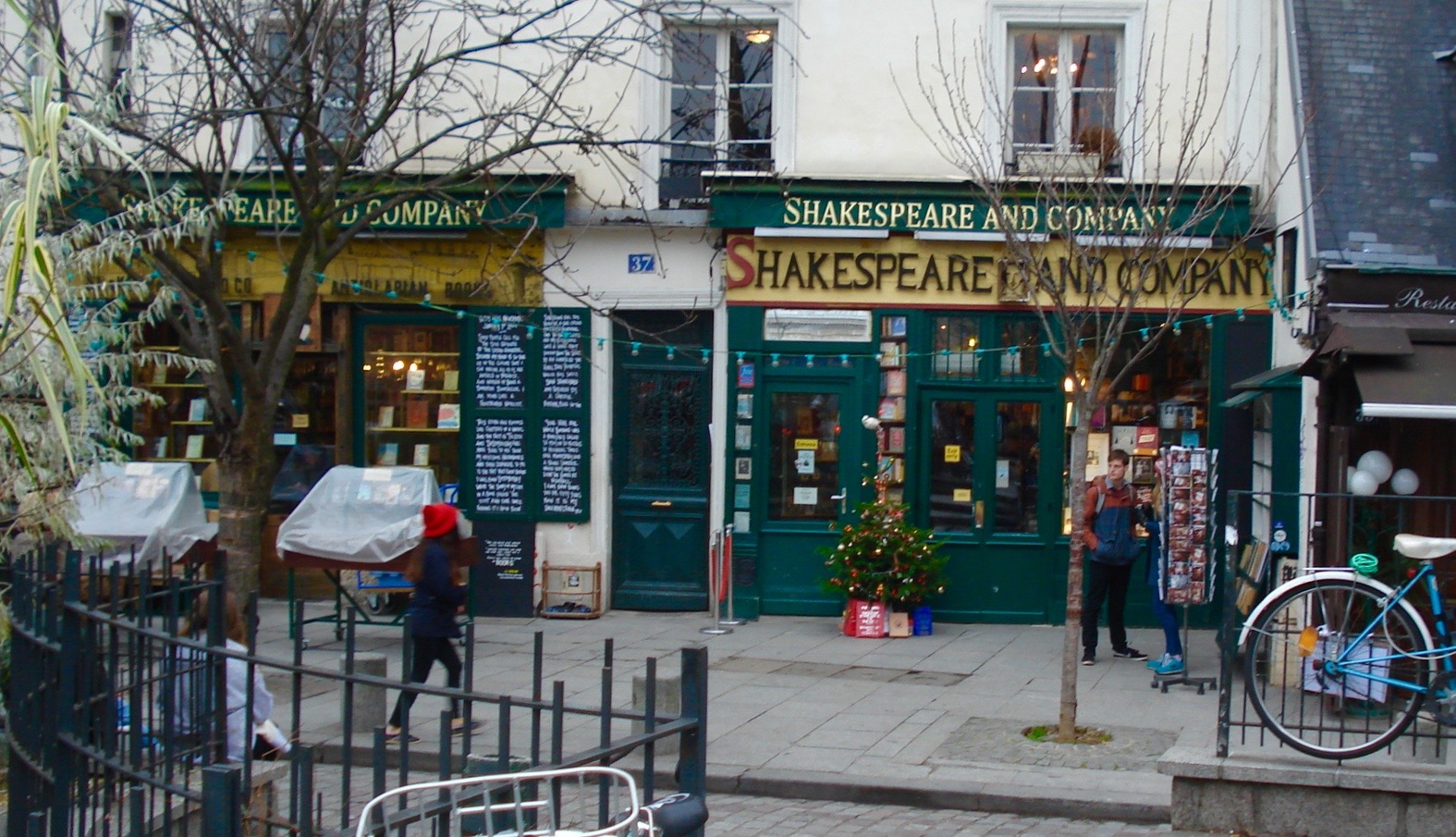
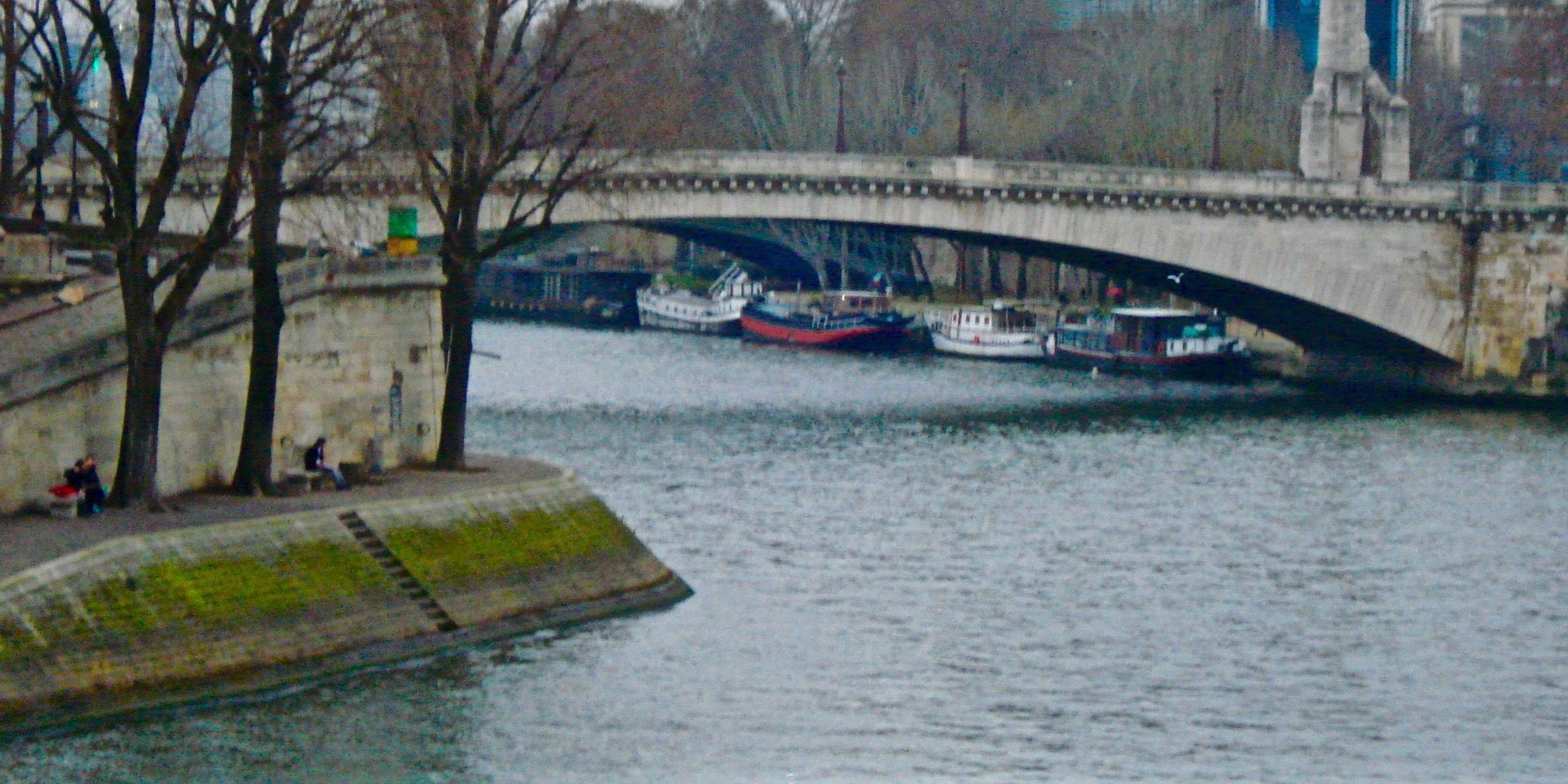
We crossed over the Seine to the Ile de Cite and visited the Notre-Dame Cathedral. Usually one of us would be the tour guide for each of our destinations. It was my turn for the Notre-Dame. Here is what you need to know about it: first, it has beautiful stained glass windows, particularly the large rose windows over the entrance in the nave and in the right and left transepts; second, outside it has flying buttresses (to hold up all that massive, 10-story high stonework); third, it has a lot of gargoyles; and, fourth, there is a small apartment up in the bell tower where Quasimodo lived. (He was the building assistant to Victor Hugo, the architect who started the building in 4 BC--just kidding, it was in 1163, but that’s still pretty old). Quasimodo lived a rather miserable life, what with the annoying, loud ringing of the cathedral bells.
We also visited Saint Chapelle nearby, which houses my favorite stained glass windows in all the world (well at least in the world I have seen so far). Ethan was our tour guide. Ethan said that the Saint Chapelle was an old church started in 1973, long before John and Ethan were even in high school. The architect was MaisOui Francais, who found a way to hold up all the stained glass as a tribute to his favorite color—blue.
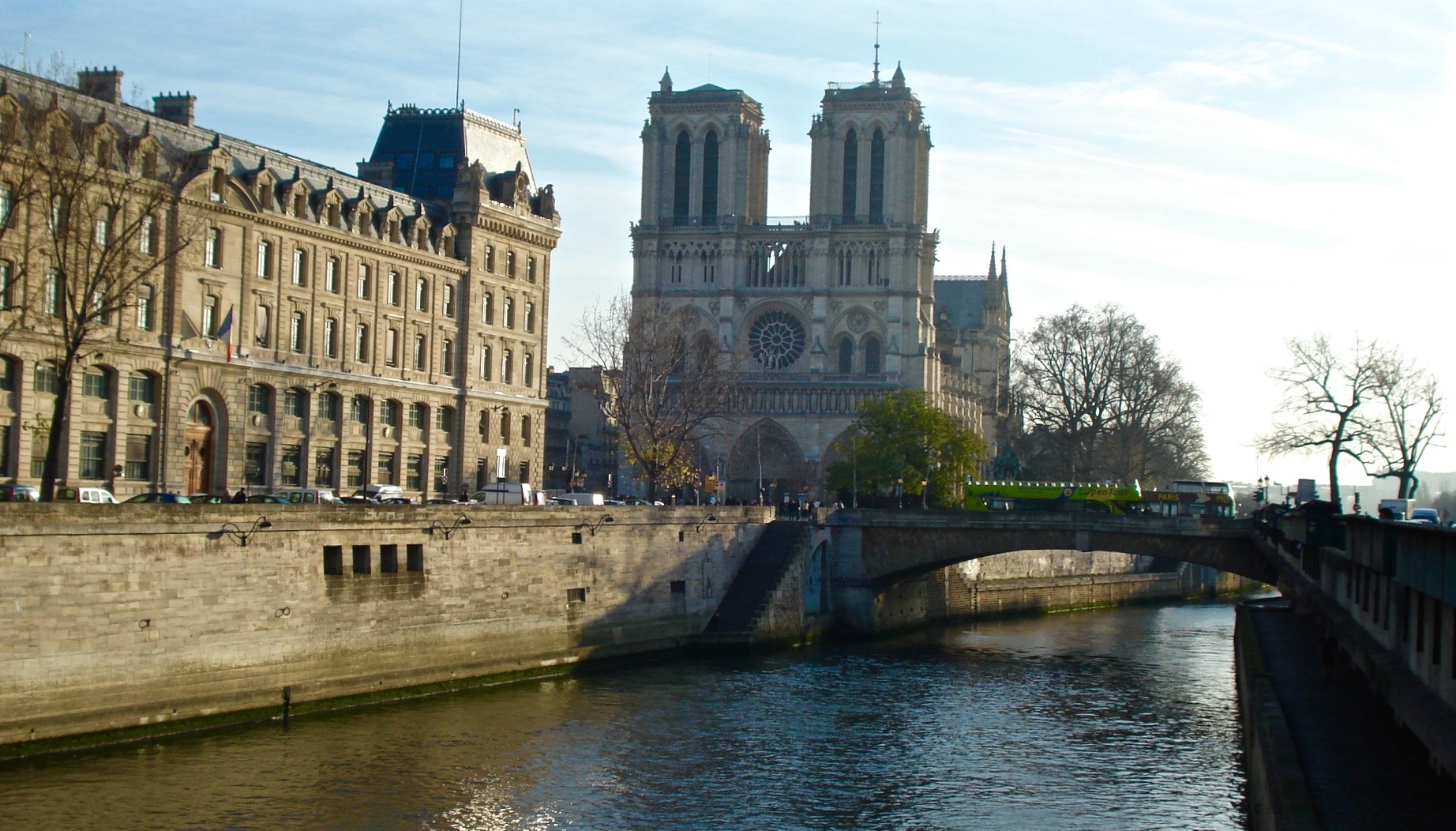
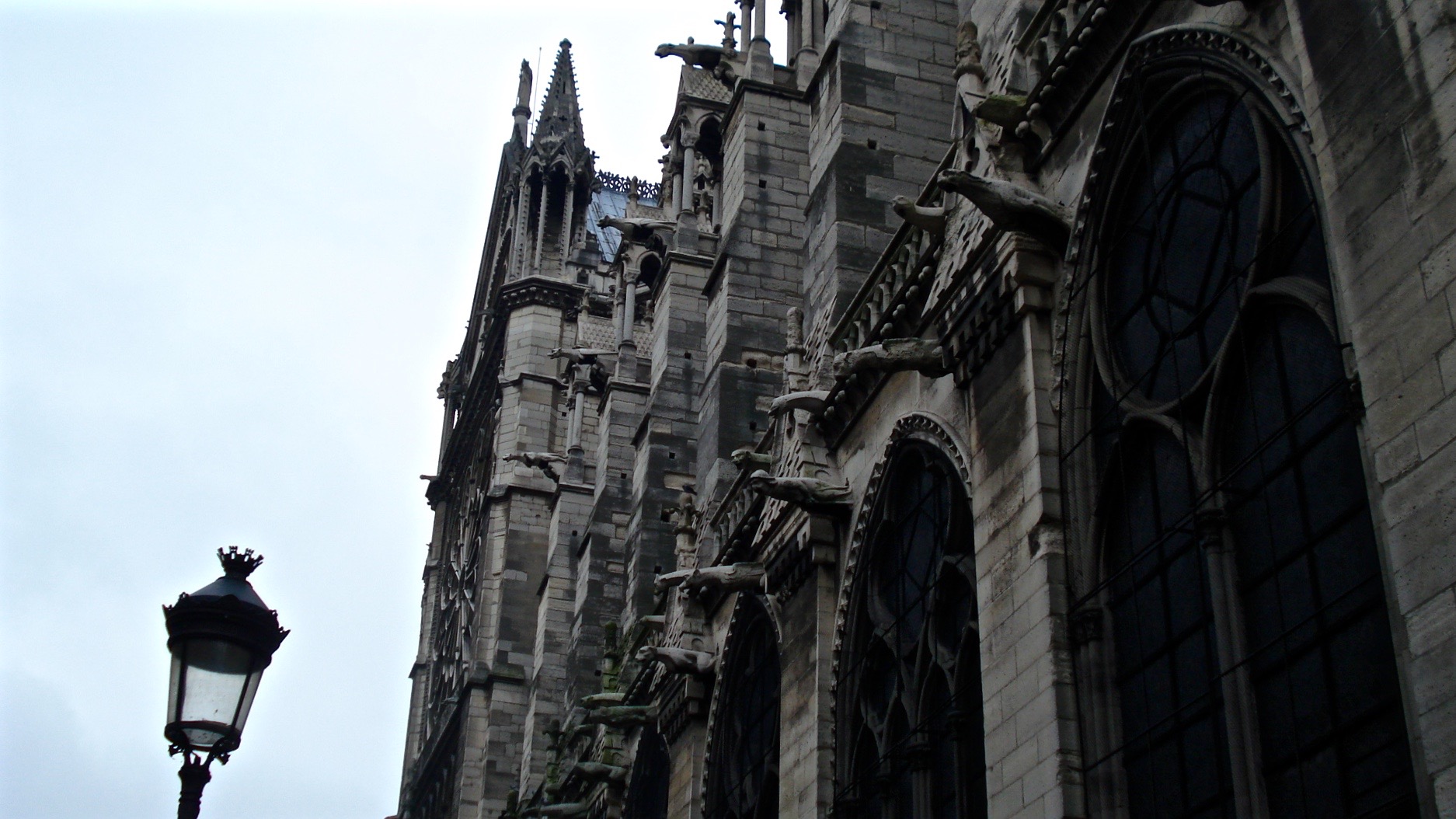
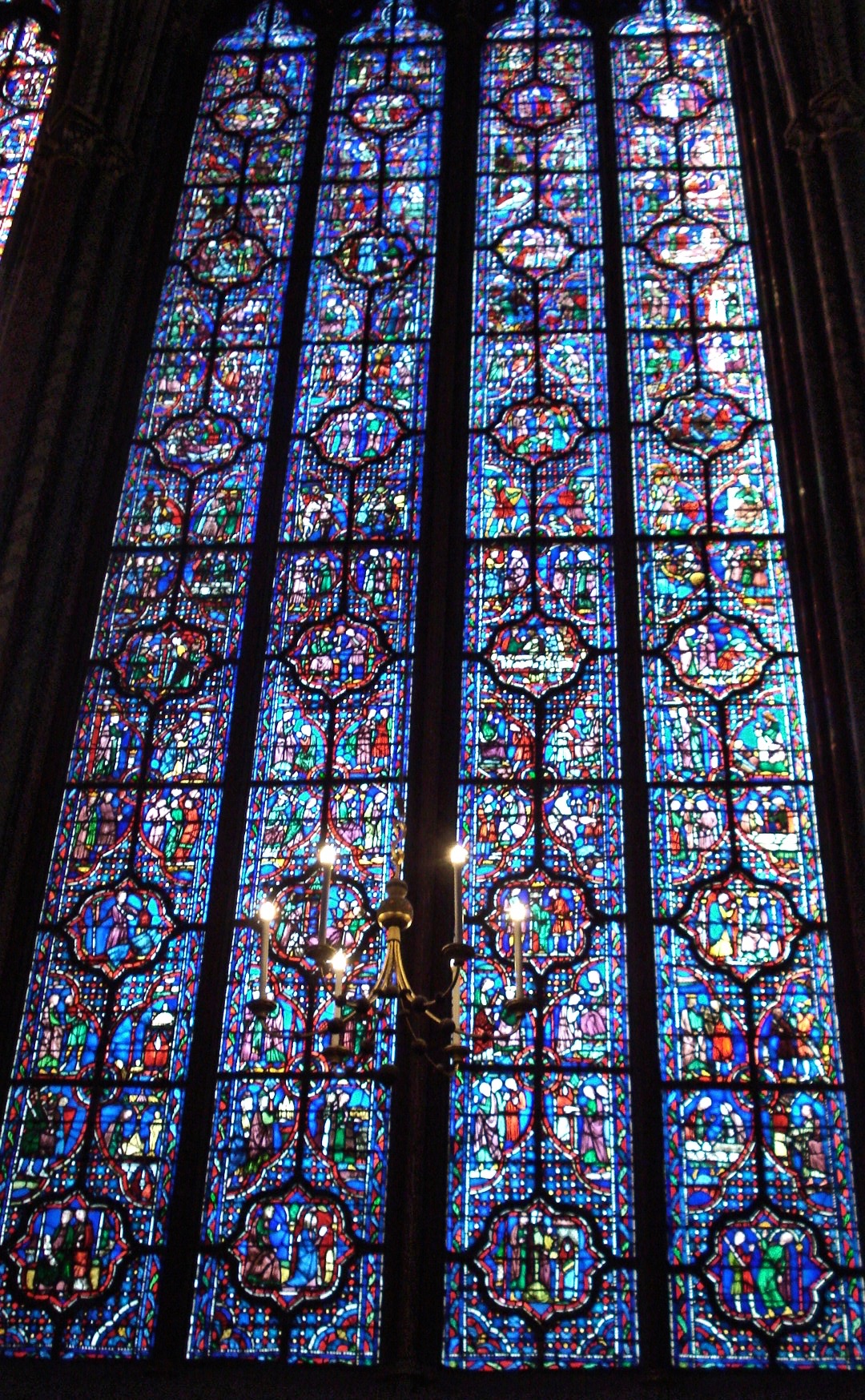
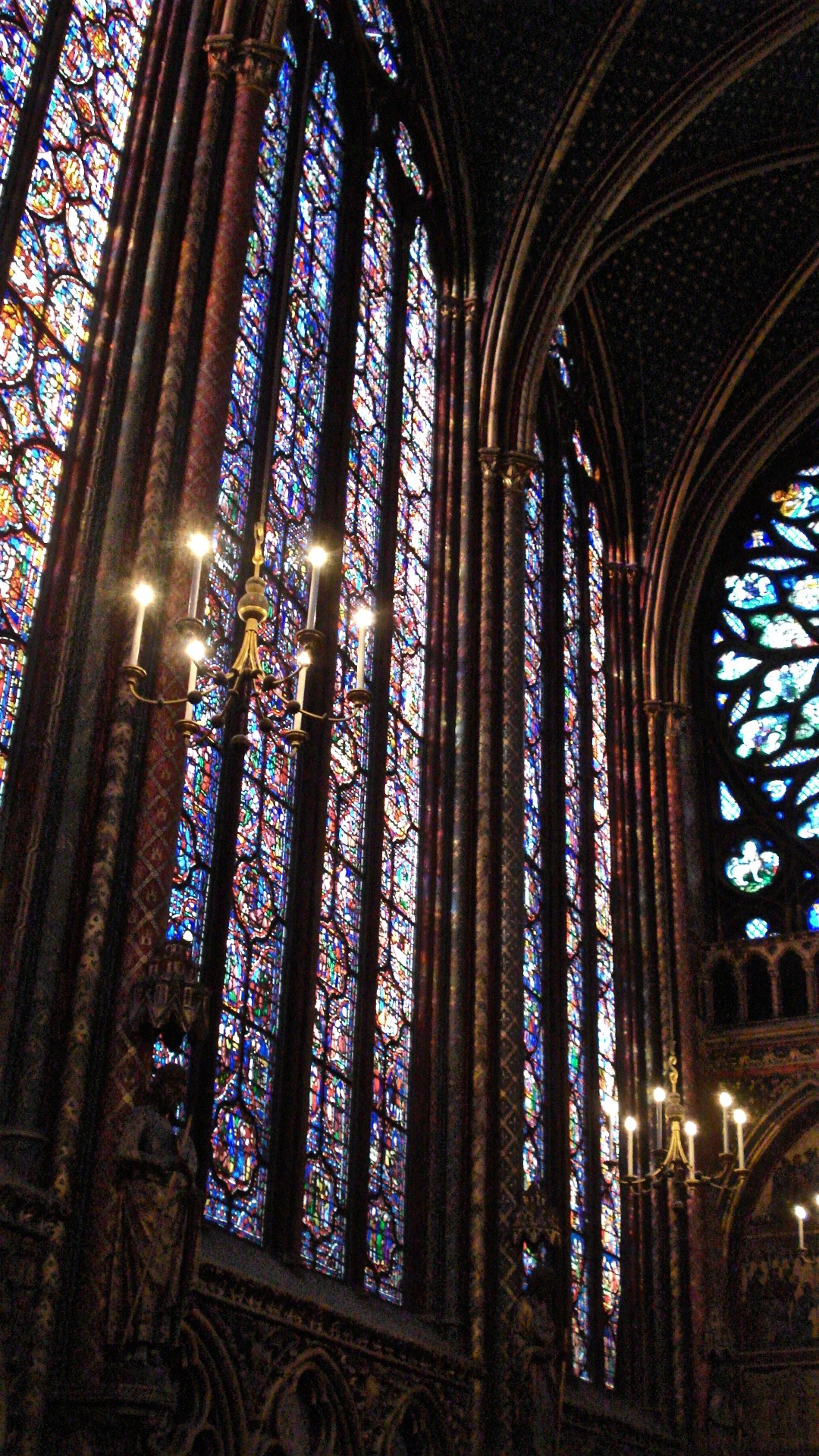
Later on our trip we visited the Basilique du Sacre-Coeur on the highest point in Paris in Montmartre. Ethan was again tour guide and told us how the beautiful church came into being. Back before the city of Paris stretched out as far as Montmartre in the north, some monks had a monastery where they devoted themselves to wine making. But one time a dirty sock fell into the largest barrel of wine and spoiled the taste. However, Jesus came down and turned the dirty, smelly wine into a most wonderful, sweet wine that became legendary. In gratitude, the monks built a church on the spot and called it Sock-Liquor, which later got modified to Sacre-Coeur.
On that first day in Paris, we also crossed over the bridge from the Ile de Cite and visited the peaceful and stately Ile St. Louis. For the third time in Beth’s and my lives, we had out of this world ice cream at Bertillion.
That night we feasted on seafood (including large helpings of mussels and oysters) and then in a stupor for lack of sleep slept for two nights worth.
The next day we spent most of our time in two areas: first, Le Marais in the fourth arrondissement and, second, Montmartre in the 18th arrondissement. We loved both areas, with their narrow, cobblestone streets filled with shops, cafes, and art galleries. In Montmartre the two oldest, extant windmills in Paris can be found, both on rue Lepic. One sits atop a restaurant and is a high tourist attraction. Instead, we ate at a café called Café des Deux Moulin—café of the two windmills, though both windmills were several blocks away. We learned that this was the very cafe that was used in scenes in the movie Amalie. We had a delicious but not so little meal. When Vincent Van Gogh along with a bunch of other poor, avant garde artists first moved to Montmartre, they did so because the rent was dirt cheap, and, in fact, dirt was about all there was there—besides a few hovels, farms, and grain mills. But these guys became famous artists, and now look at what you have--a busy artist district (and tourist district). But, despite the crowds, I think a peaceful and fulfilling scene is looking down on the city from the steps of the Sacre-Coeur, especially in the early evening.
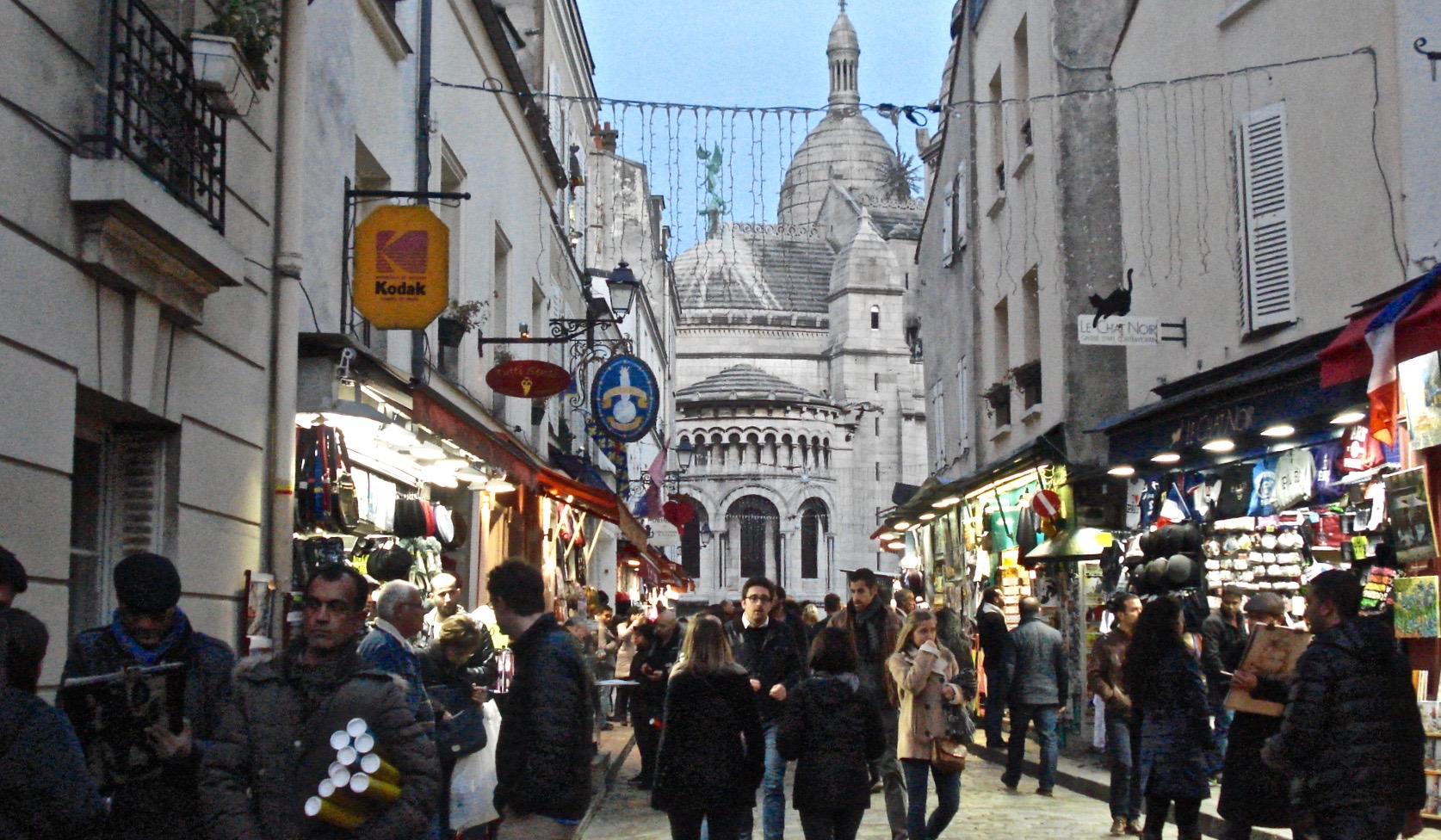
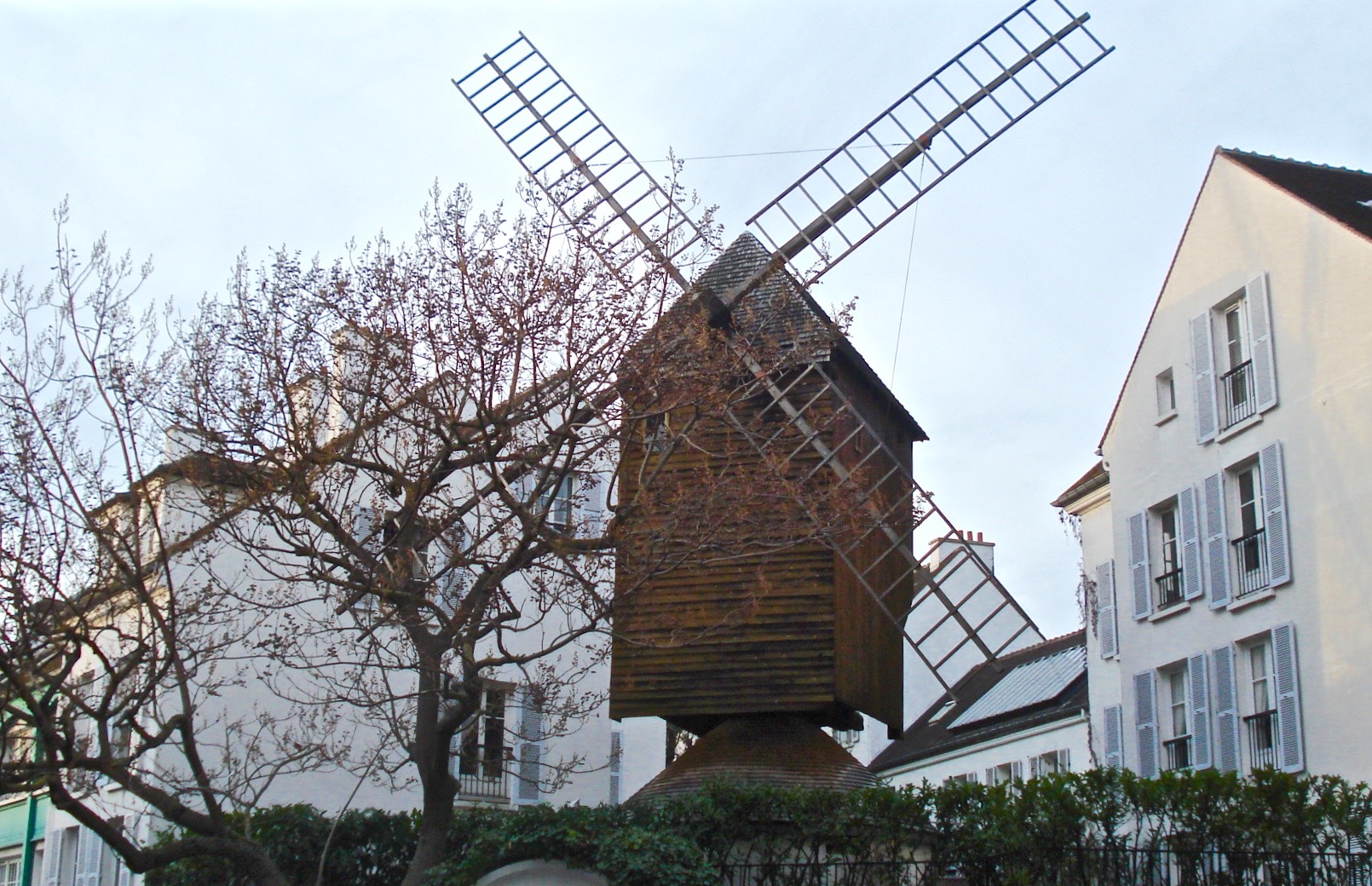
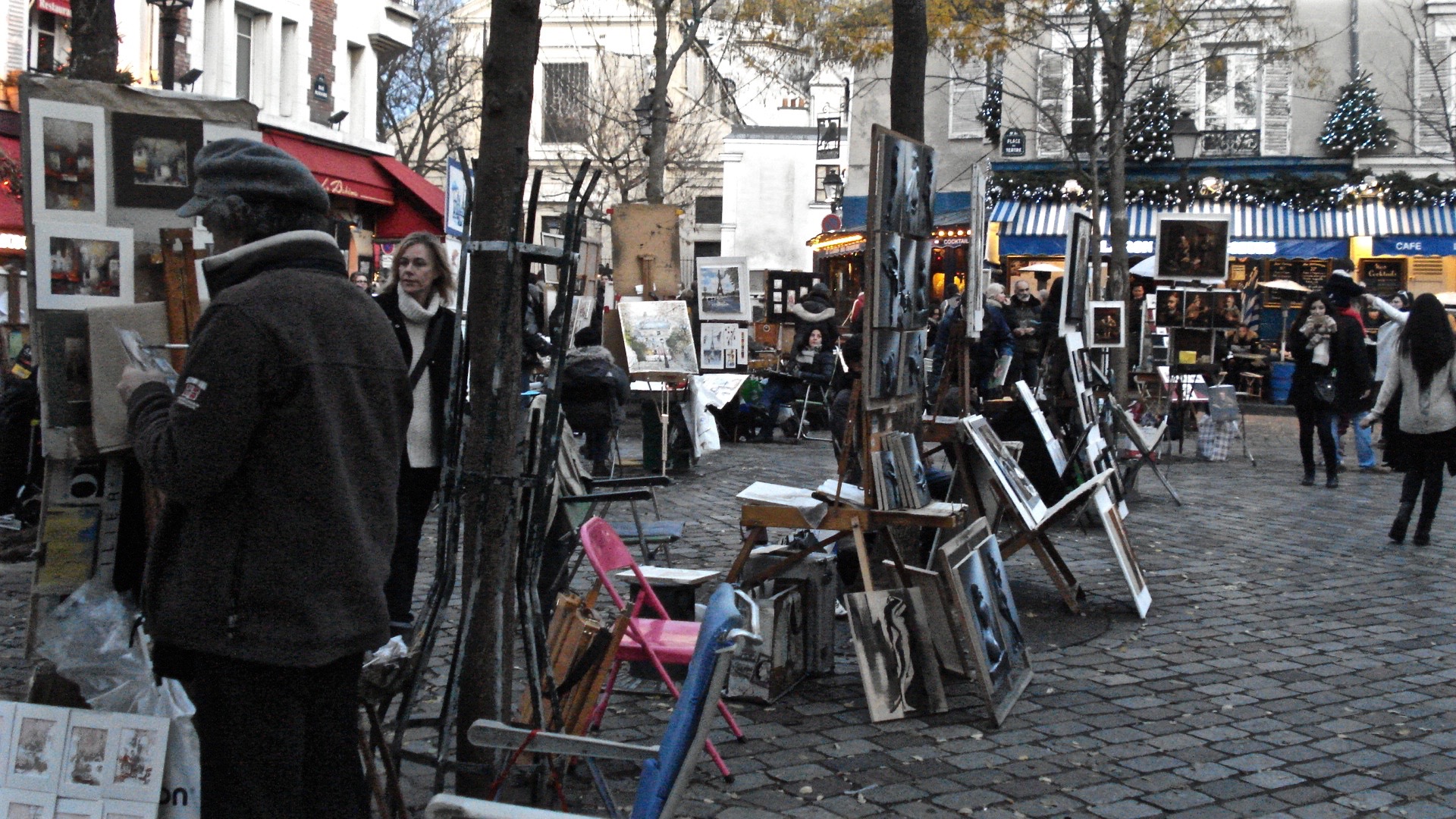
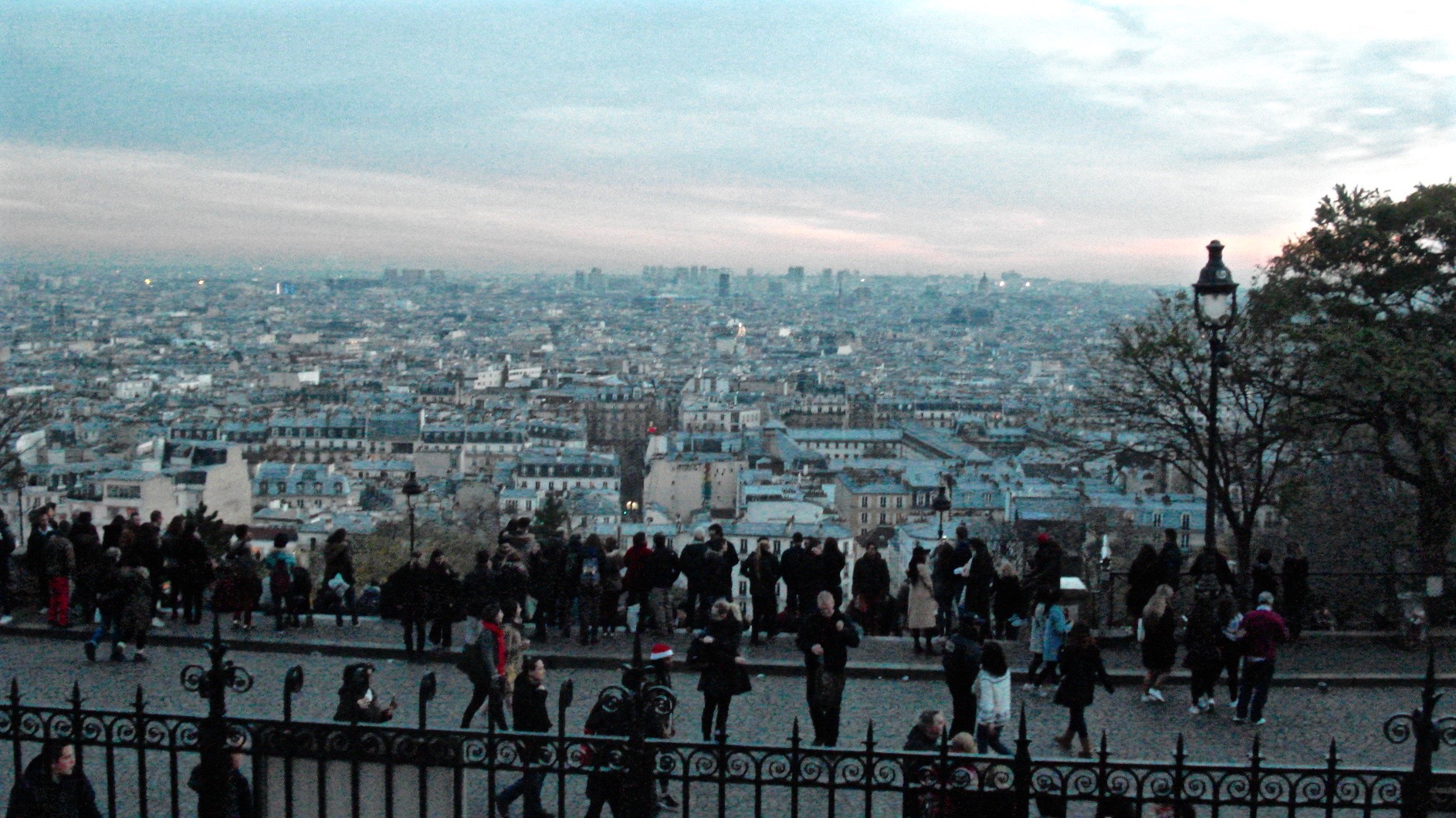
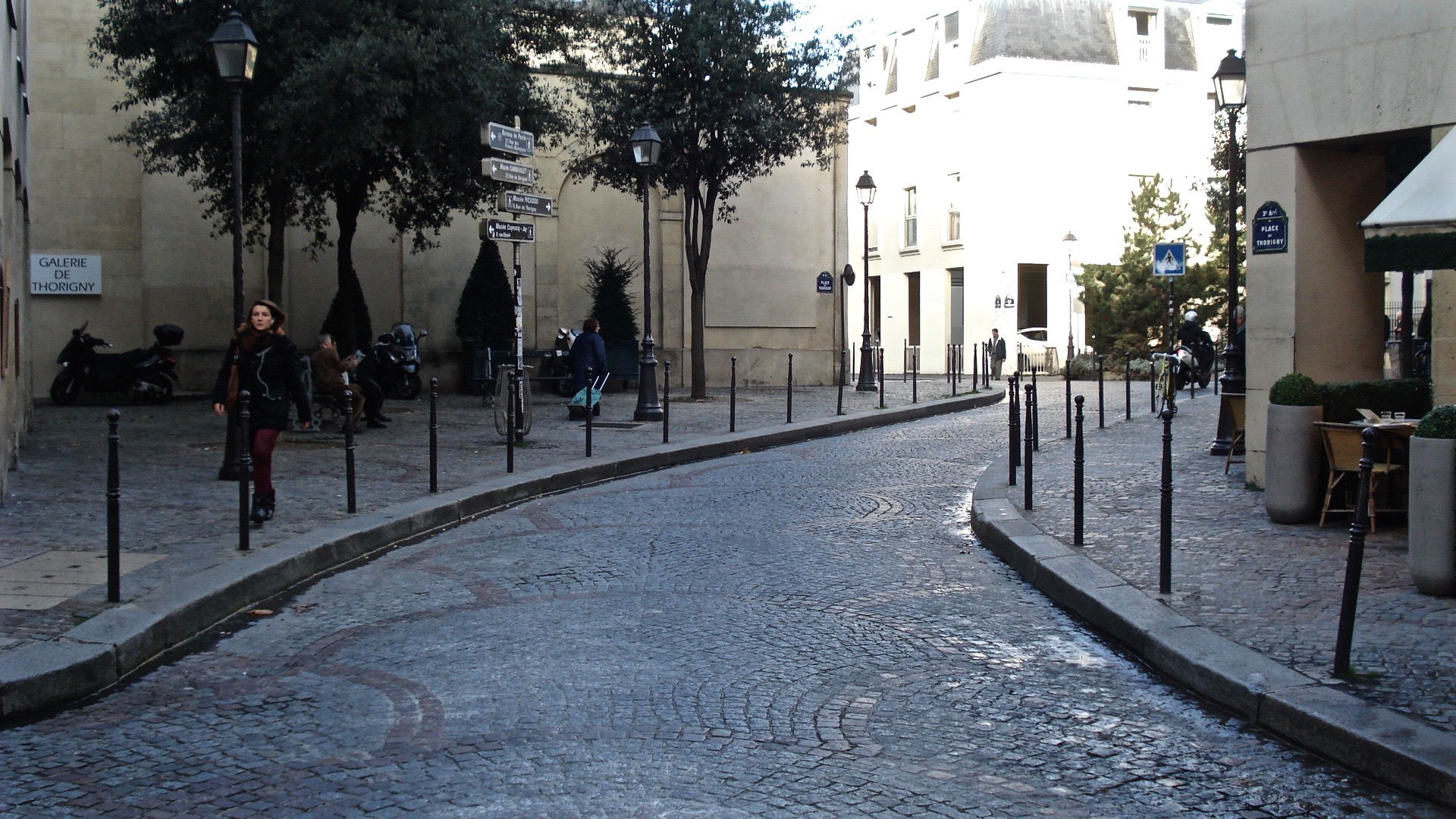
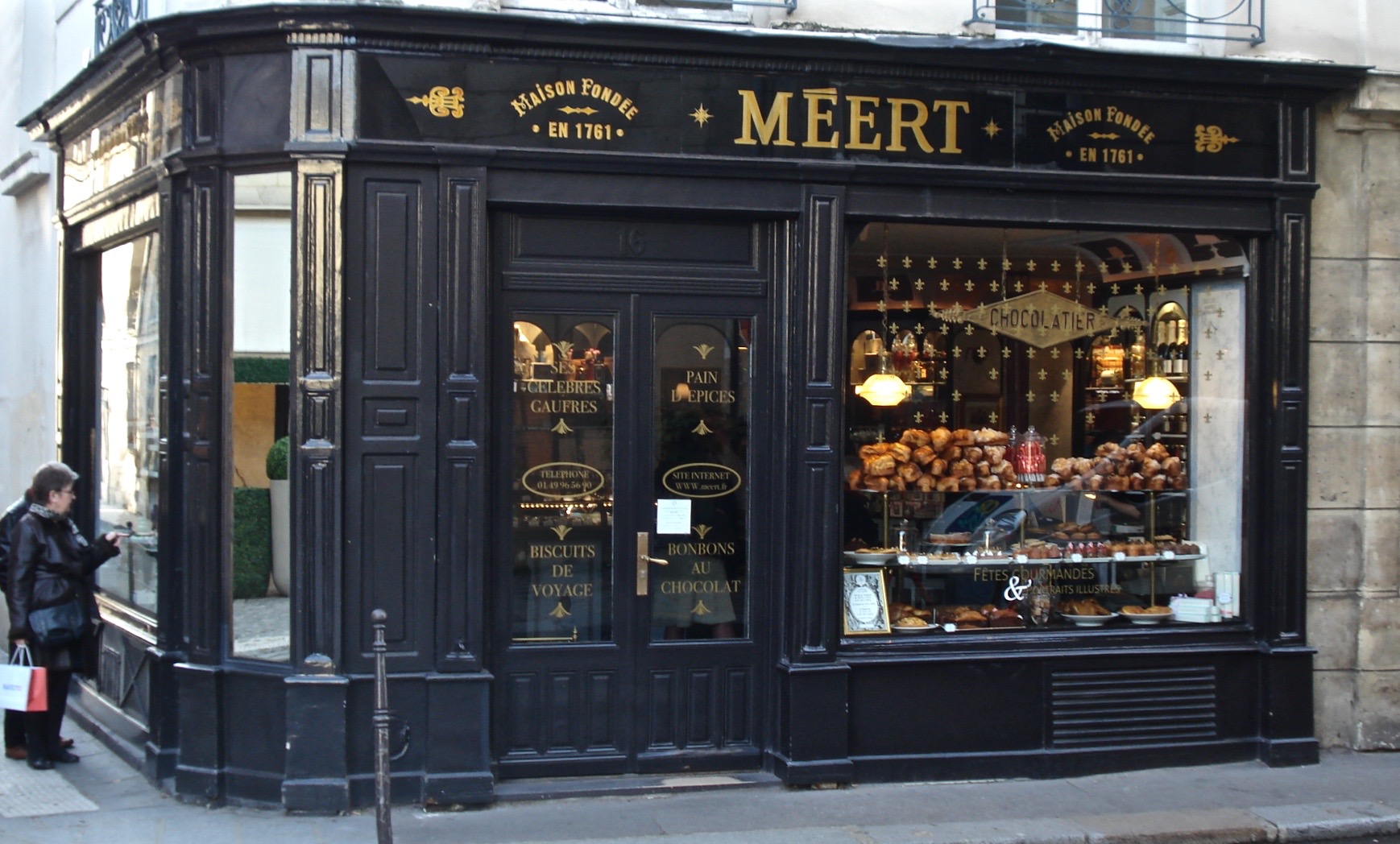
We ended the day by seeing the movie Star Wars in the original English, without French dubbed in but only with French subtitles. (John and Ethan hounded us until we succumbed.) We had to get tickets earlier in the day. The movie is not just a sell out in the U.S. A group in front of us in line asked us if we could refresh their memories about how the first trilogy had ended. We did the best we could, what with their broken English and our non-existent French. (Well, actually, Beth speaks pretty good French, but she suffered from almost non-existent knowledge about Star Wars). We all liked the movie. I don’t want to give anything away just in case there are any readers out there who have not yet seen the movie, so here is a spoiler alert…..I thought it was quite artistic how this new Star Wars movie began at the wedding of C3PO and R2D2 and how we then learned that Luke Skywalker and Princess Leia had had a son together (of course before they had discovered that they were brother and sister). And that explains why their son, their love child—Jar Jar Binks—is as screwy as he is. Well, I probably shouldn’t say anymore.
Strasbourg
On Sunday, we took the high speed train from Paris through beautiful countryside to Strasbourg in the Alsace-Lorraine region of France, along the Rhine River valley and bumping up against the Black Forest in Germany. The L’ill River runs through Strasbourg and parallel to and close by the Rhine and then joins it just outside of the city. The Rhine forms the border between France and Germany. Actually, we never ventured out further than the Grande Ile, which is the Strasbourg city center and is formed by the L’ill splitting into two branches and flowing around a hunk of land creating an island in the river. This is the charming, walkable, mostly medieval Grande Ile, with the gothic cathedral (also called Notre-Dame) as the cultural and spiritual center. The entire center seems old and medieval with narrow, cobblestone streets. Many of the buildings are built in a garrison style with the upper floors built out beyond the ground floor, hanging over the street, probably so the residents could throw garbage on the pedestrians below. The oldest and perhaps narrowest streets are in a section called Petite France, which sports timber-framed houses, canals and locks, and battlements and guard towers commissioned by Louis XIV, which just goes to show that the creep spent at least some of his ill-gotten fortune on other cities and not just on his palace at Versailles.
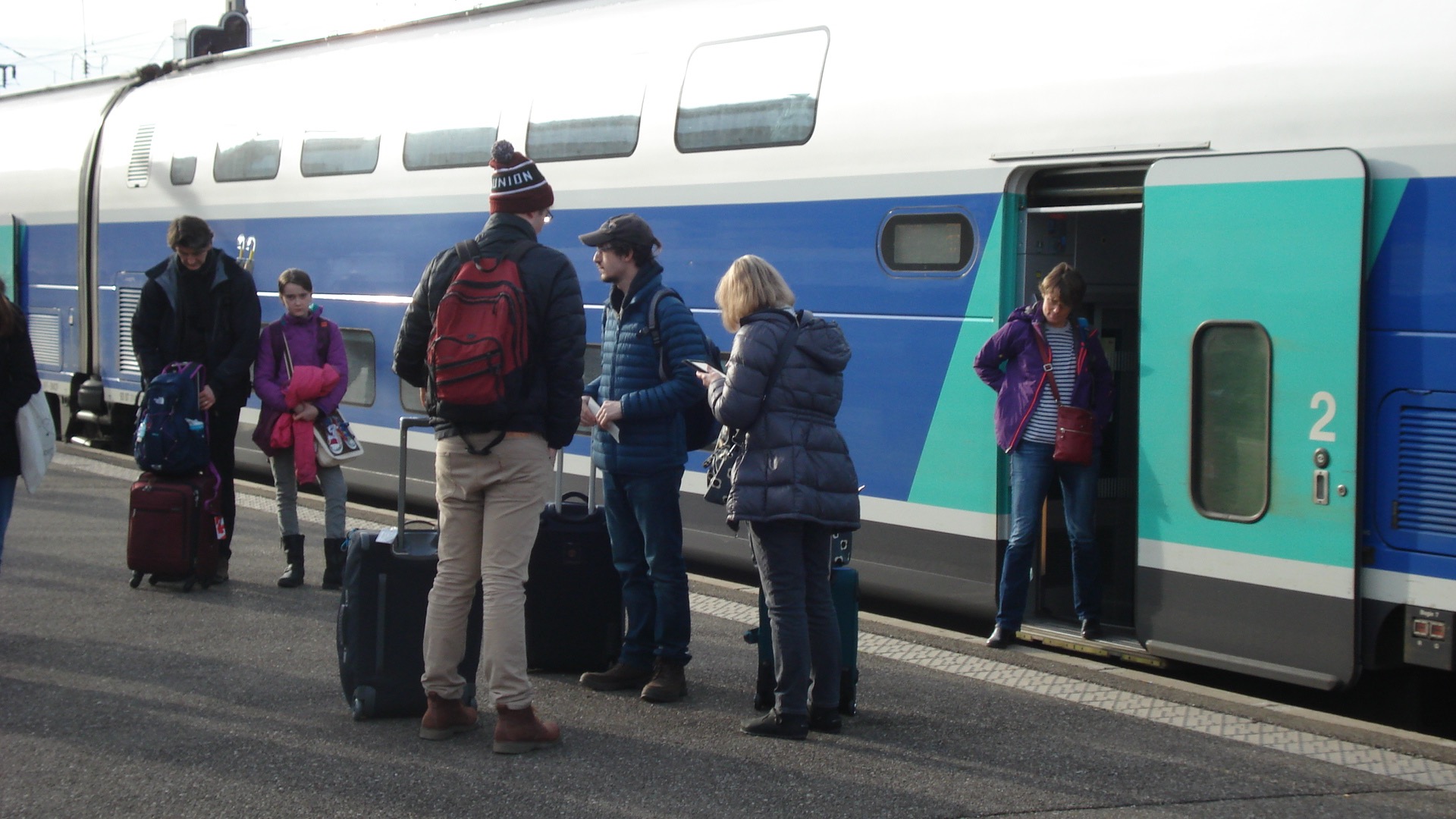
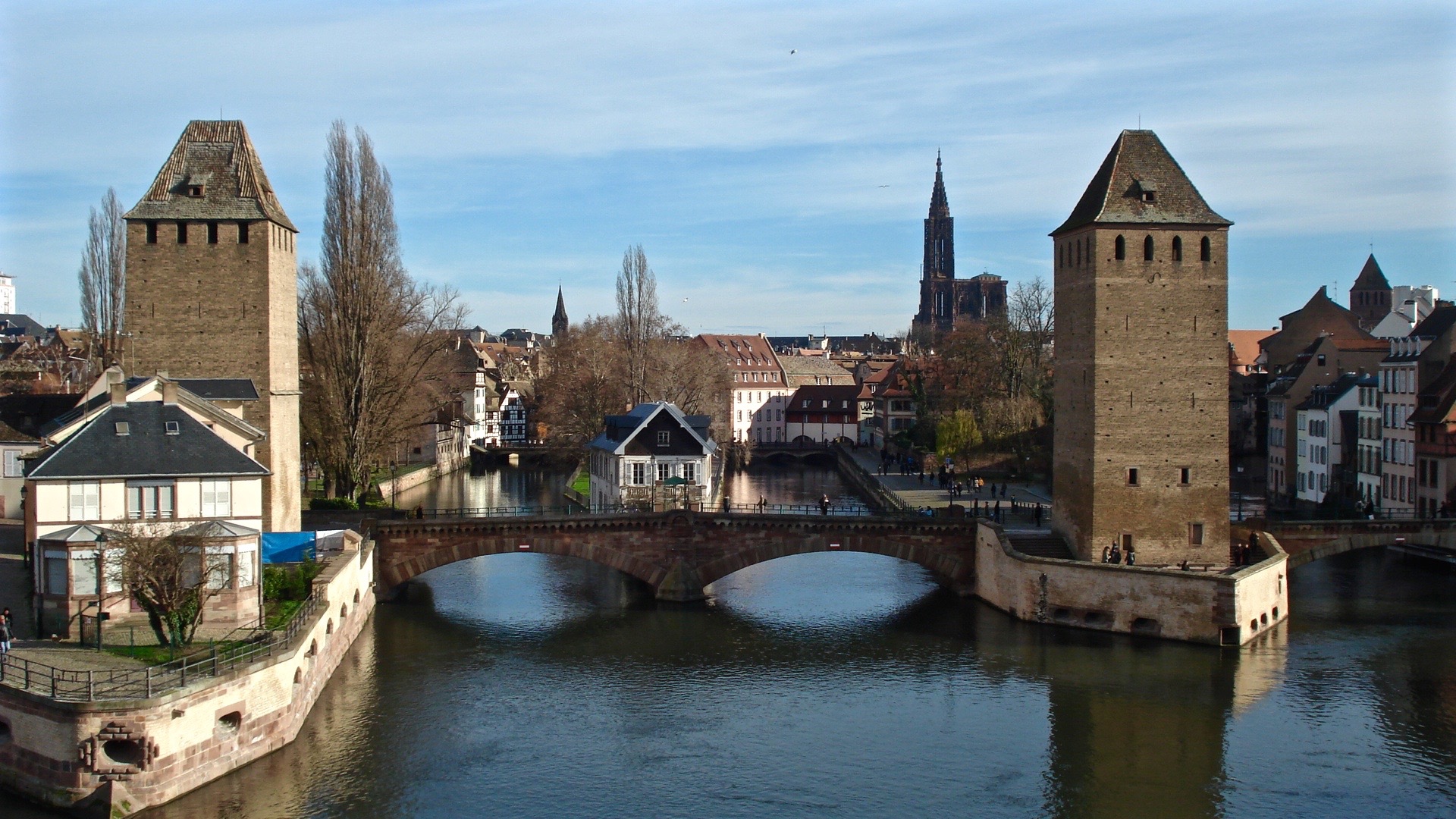
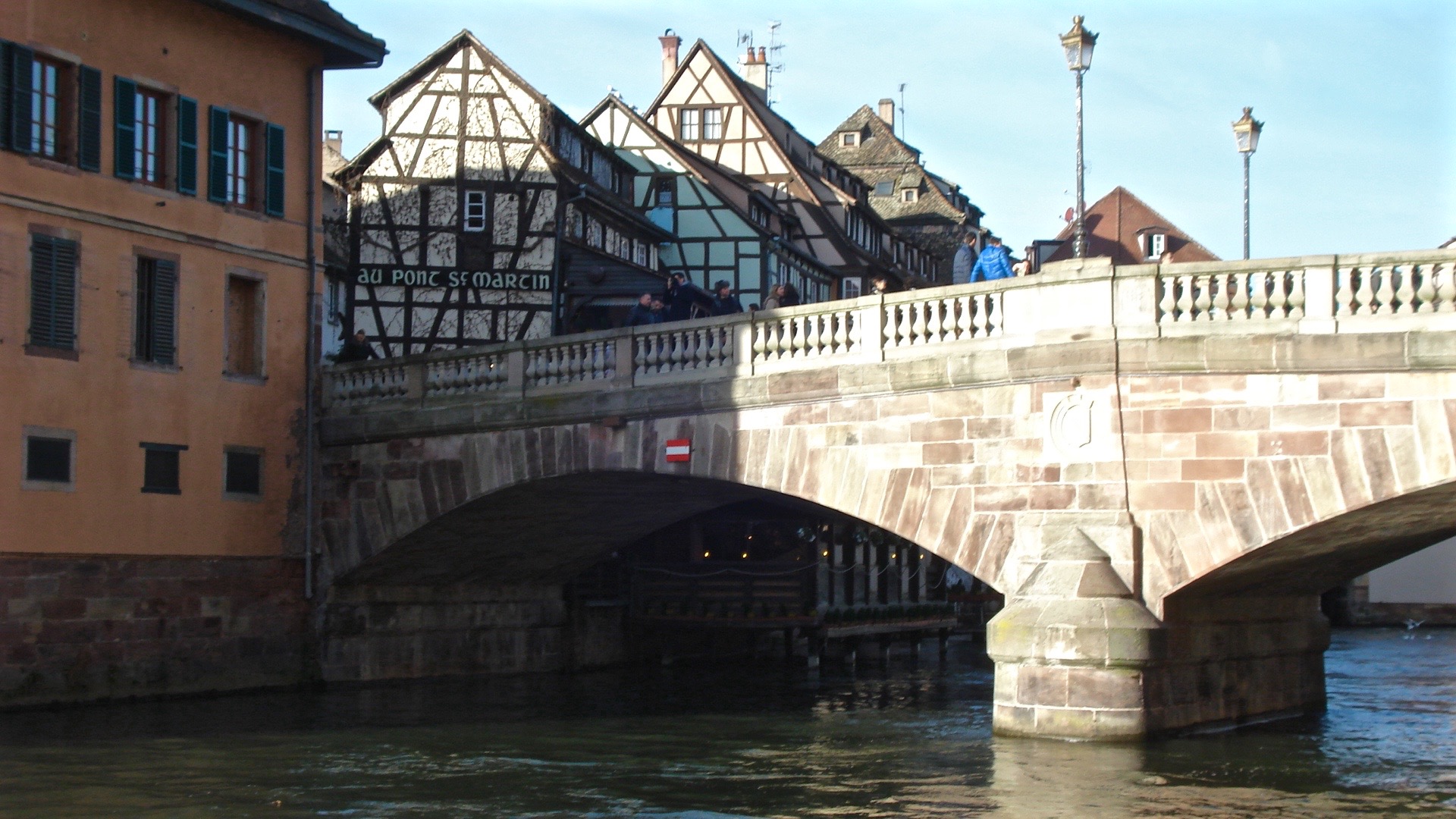
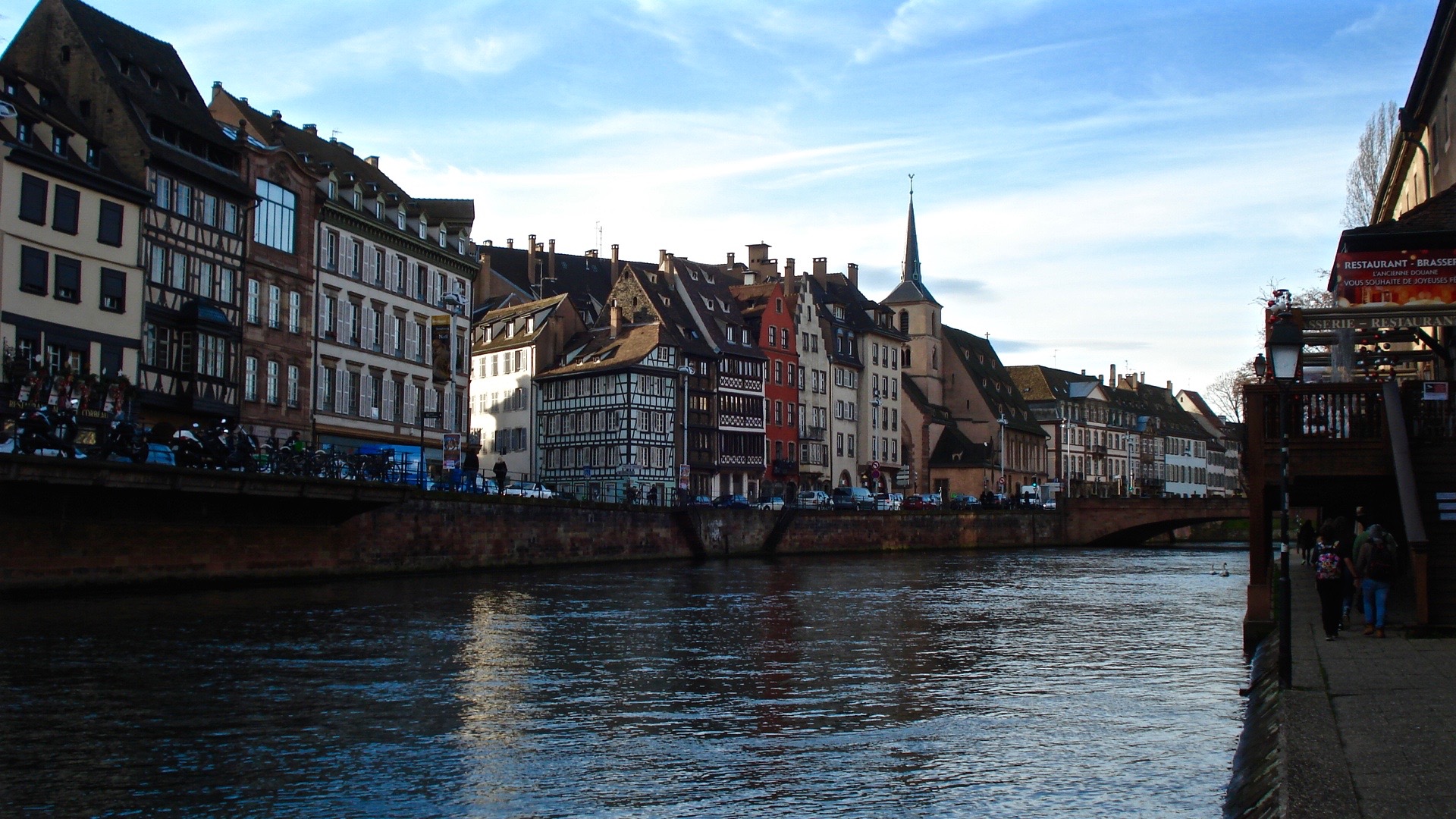
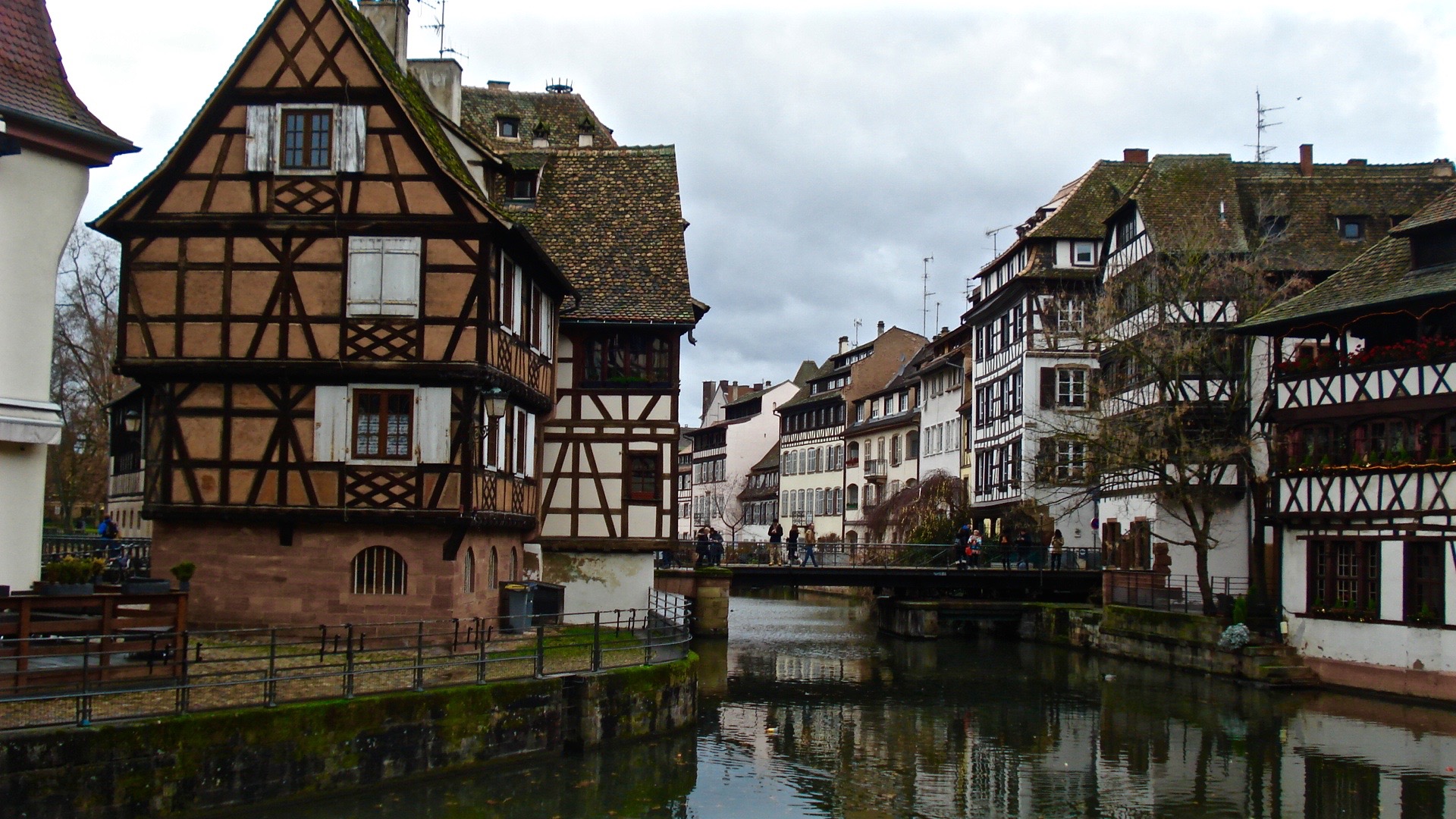
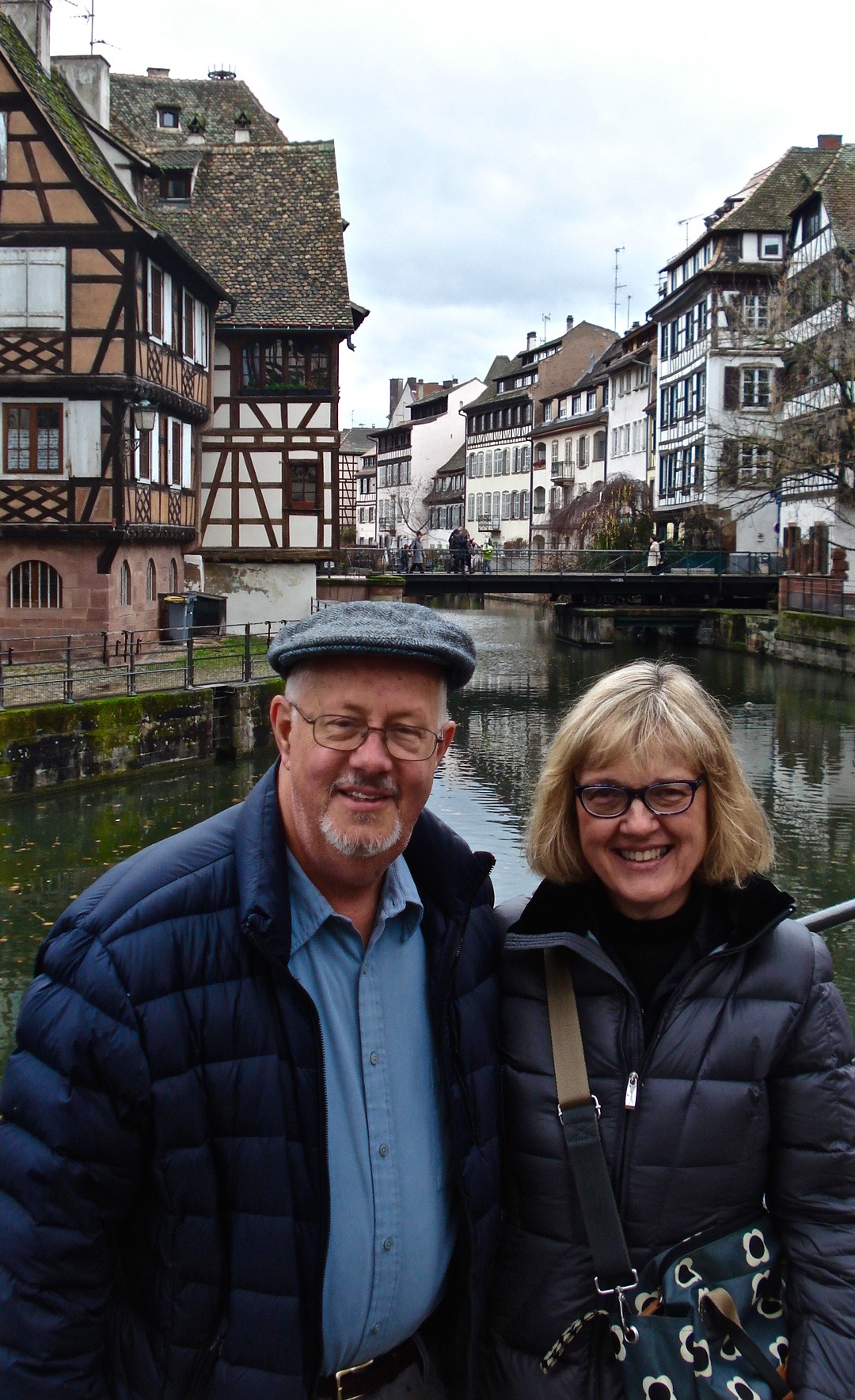
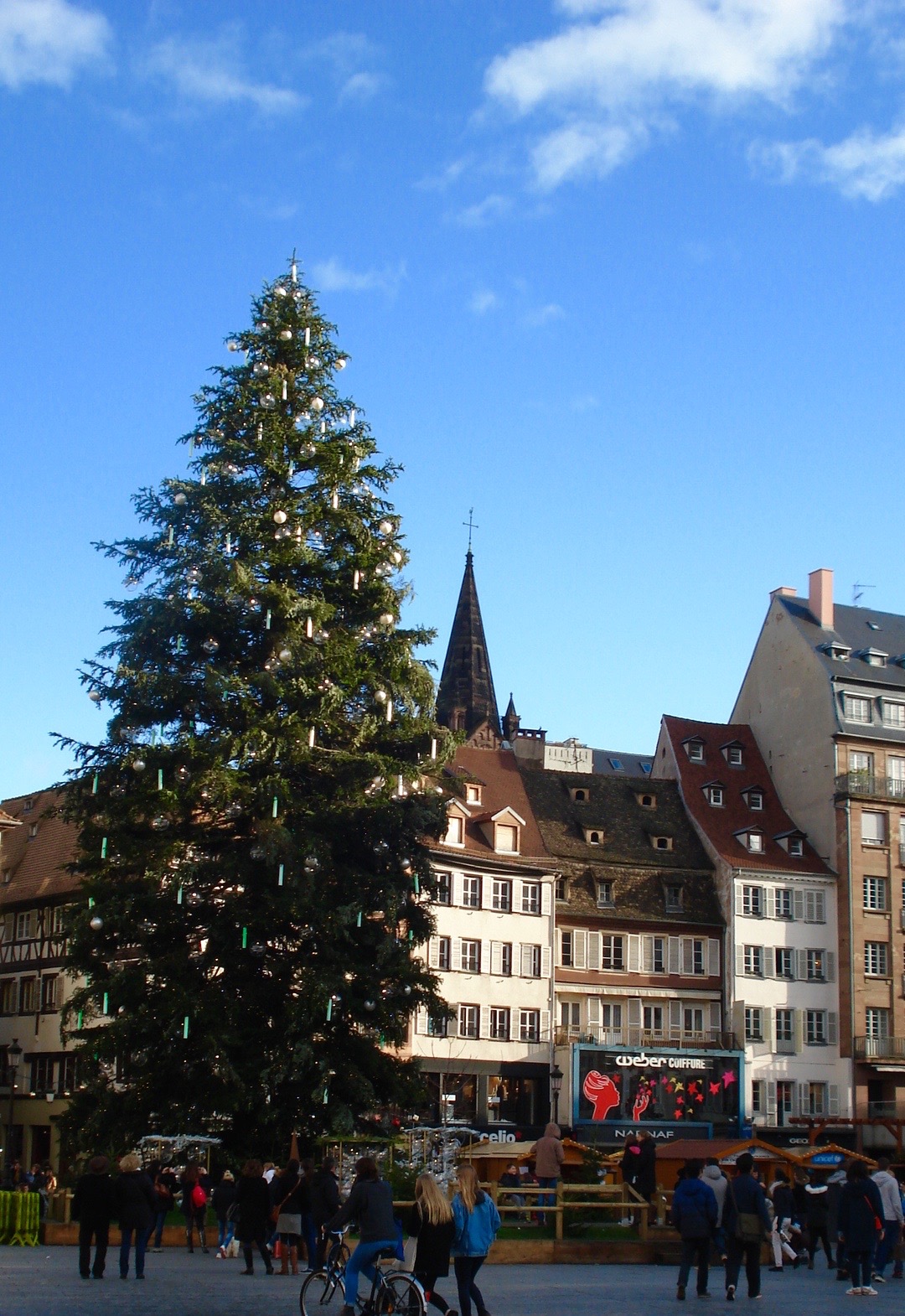
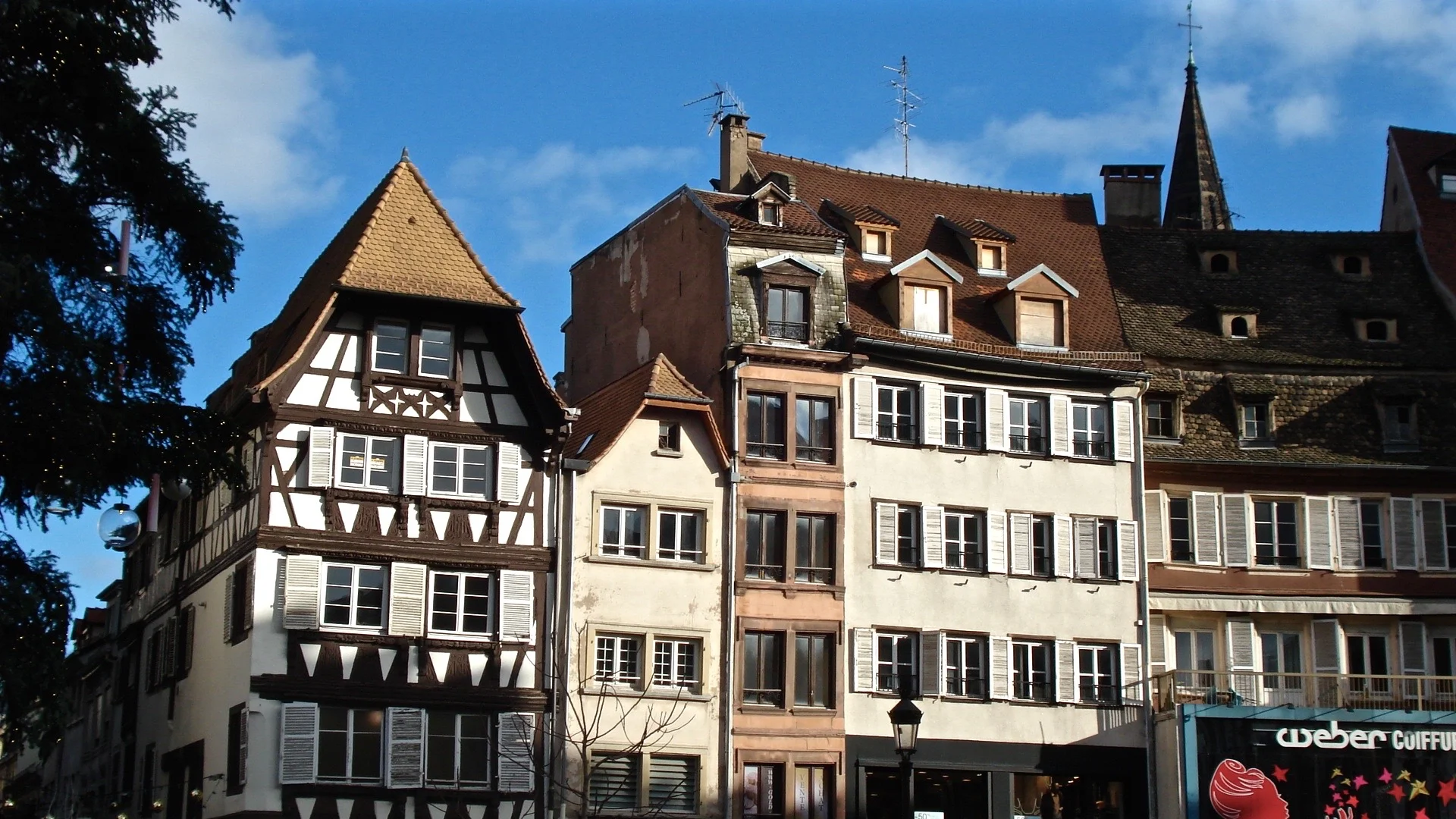
Strasbourg has the oldest and most famous Christmas market in Europe (and perhaps the largest), being held since 1570. I mean there are records of the town decorating Christmas trees back in 1605. Maybe they started that tradition. In any case, the town was crowded with Christmas visitors from all over the world and packed with shops and stands selling food, treats, clothes, Christmas decorations, and a trainload of kitschy stuff. What a sensation to be in the midst of it all.
Our hotel, the Maison Rouge, was smack dab in the center of the Grande Ile. We could walk to everything. That night we gawked at all the Christmas decorations and lights on the streets. They had a tendency to decorate their homes with Teddy bears and other stuffed animals and furniture and junk painted gold and hung on the front walls of the houses. We ate at the Meiselocker Restaurant with its traditional red and white checkered tablecloths. Strasbourg does traditional Alsatian cuisine, which is extremely tasty and filling and drenched in wonderful sauces and gravies but is still basically meat and potatoes,
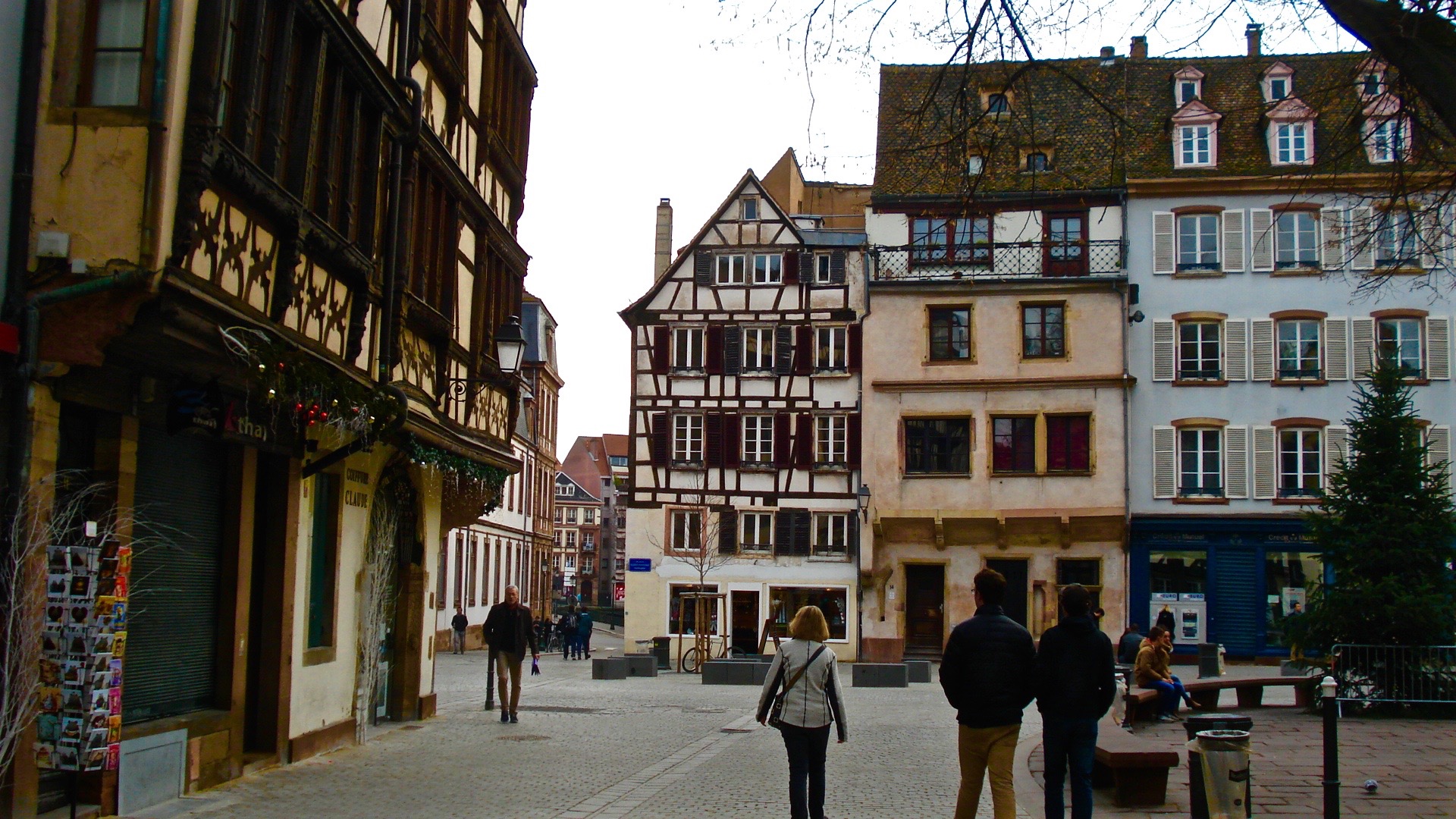
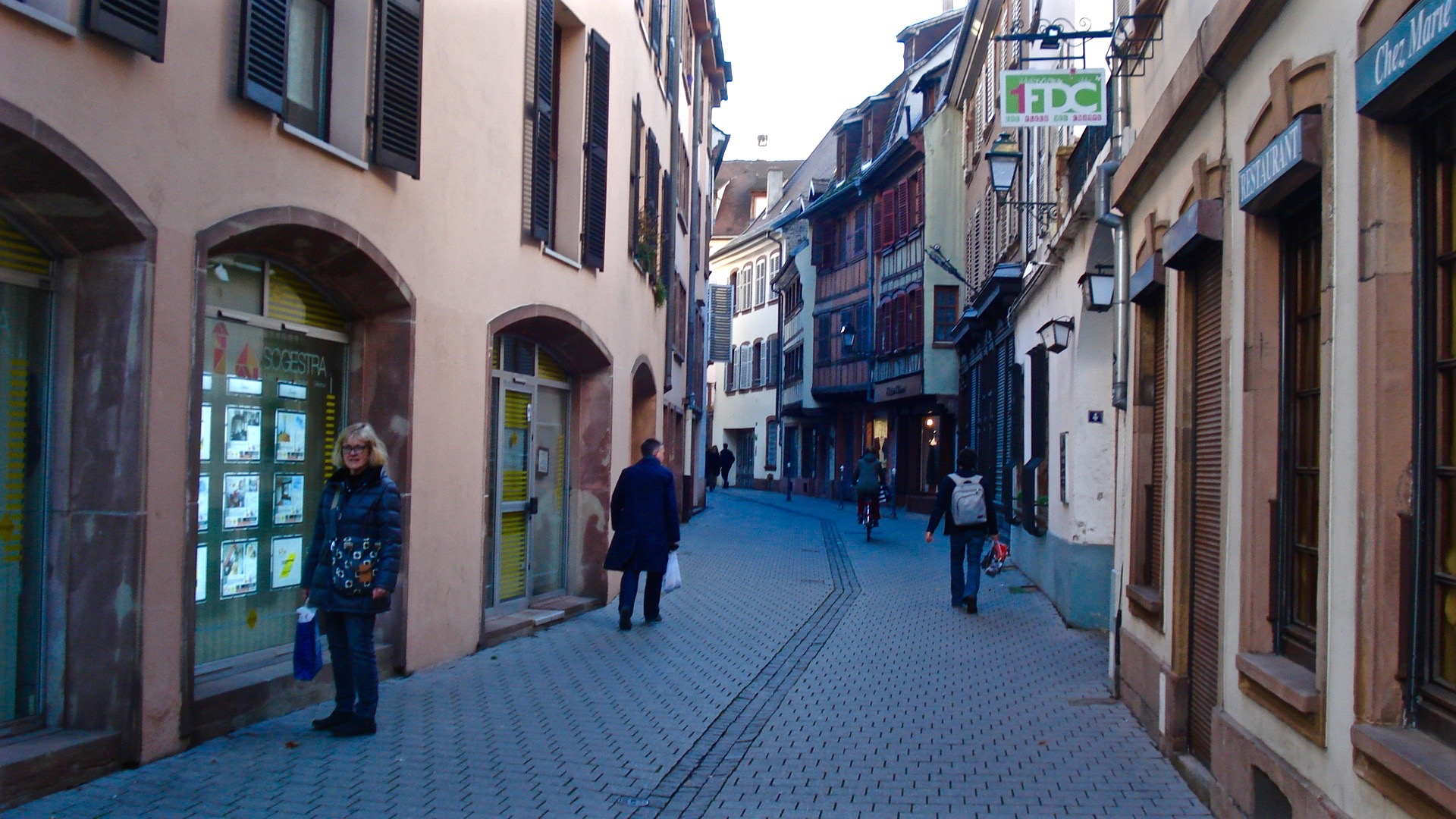
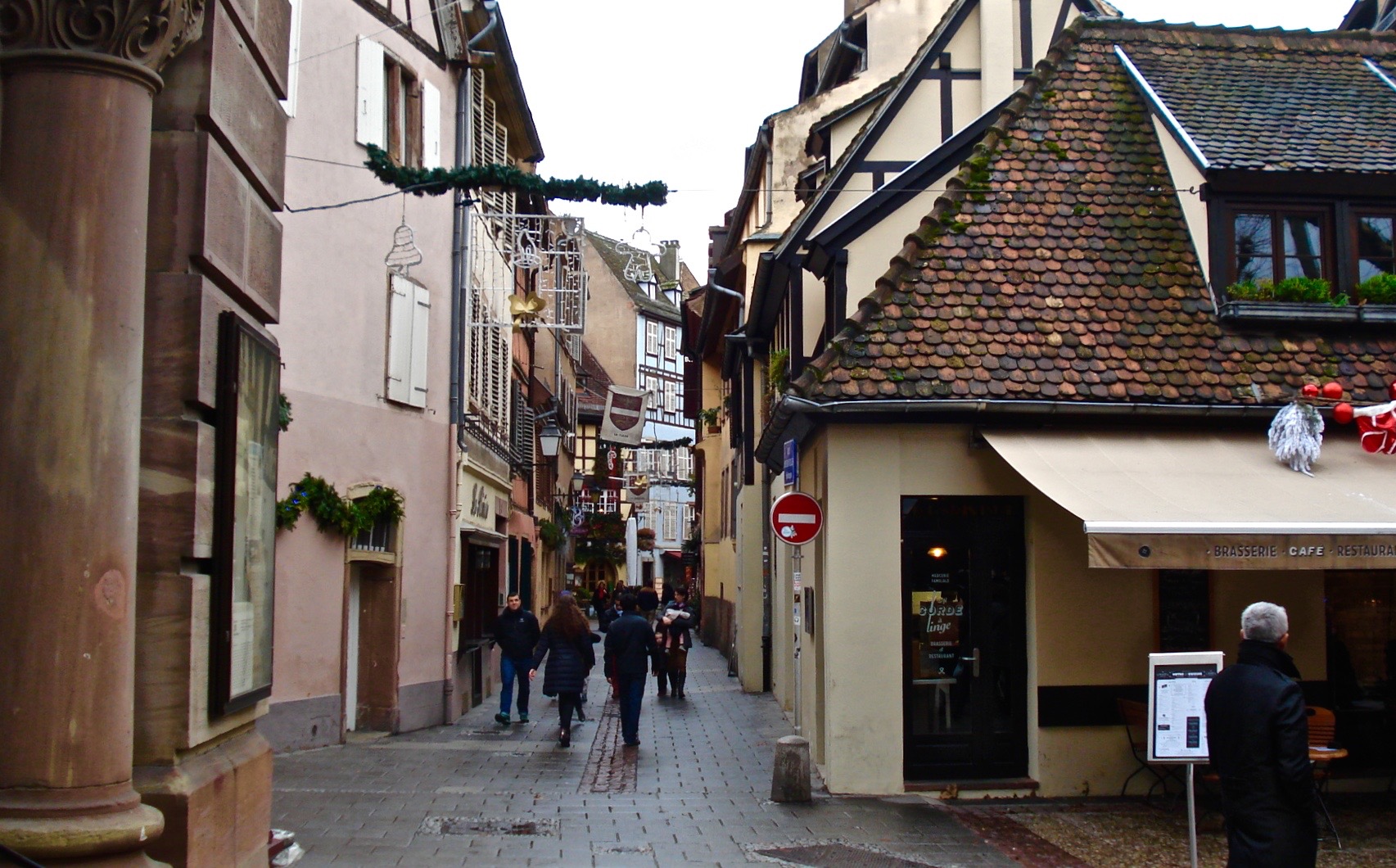
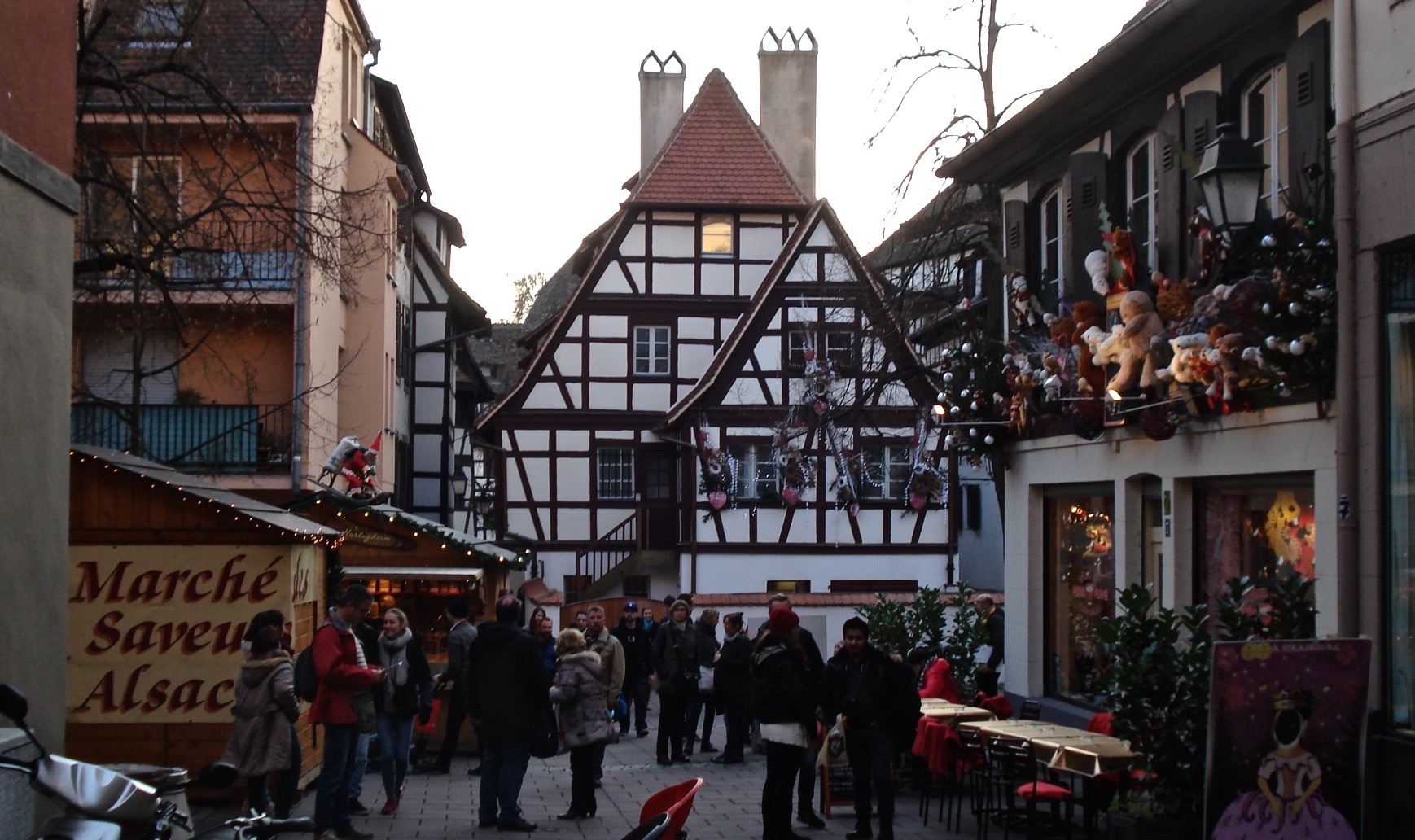
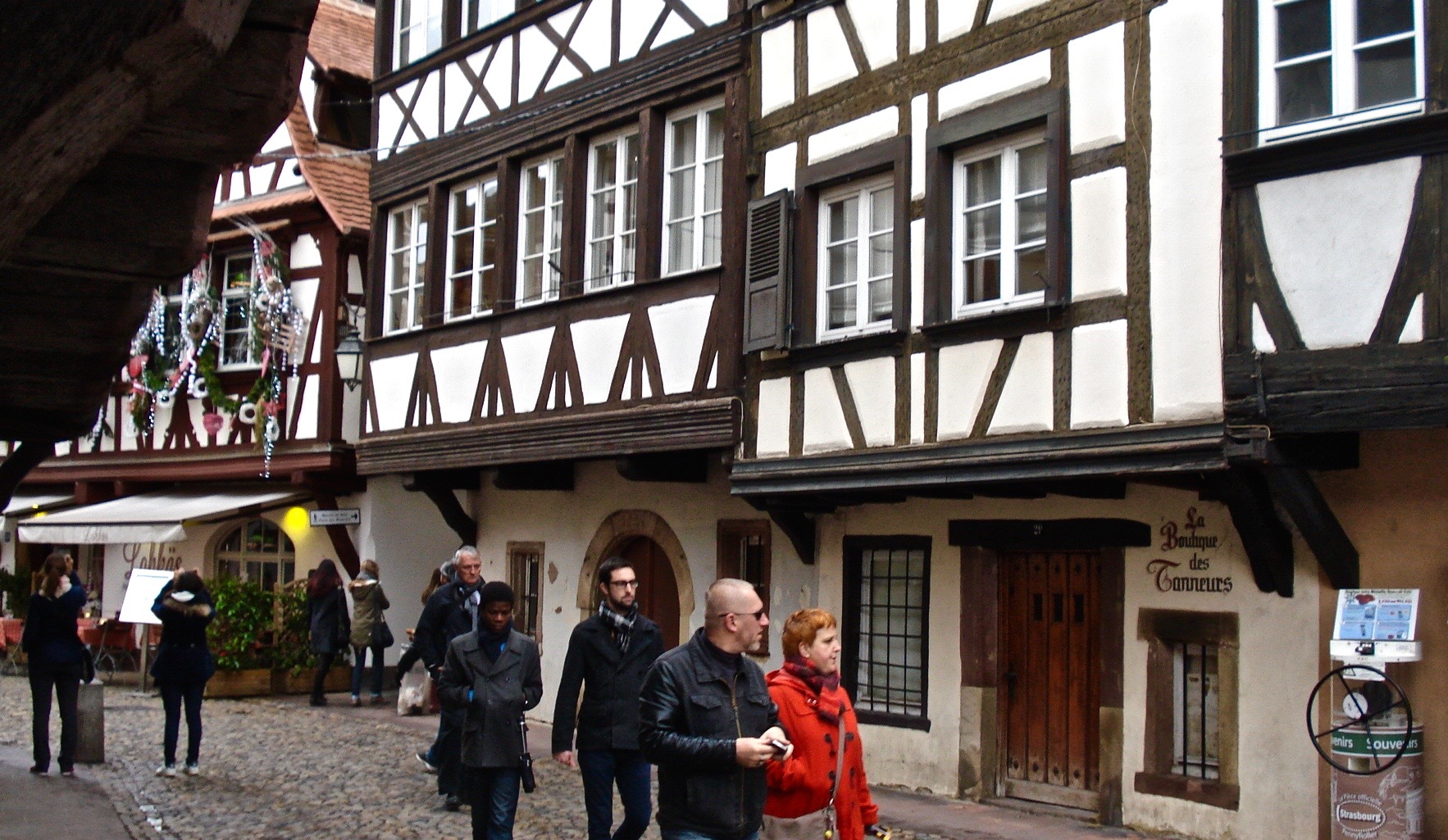
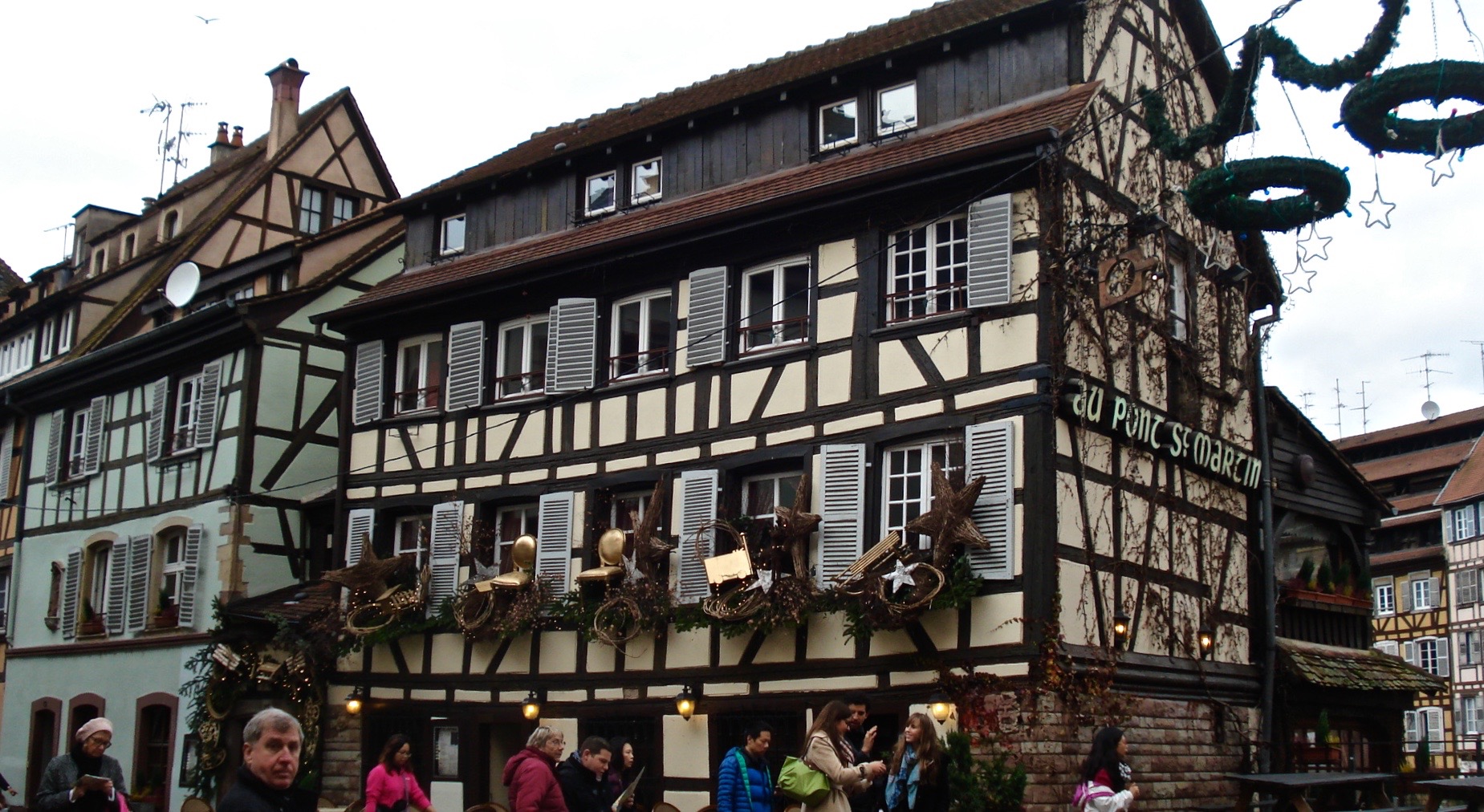


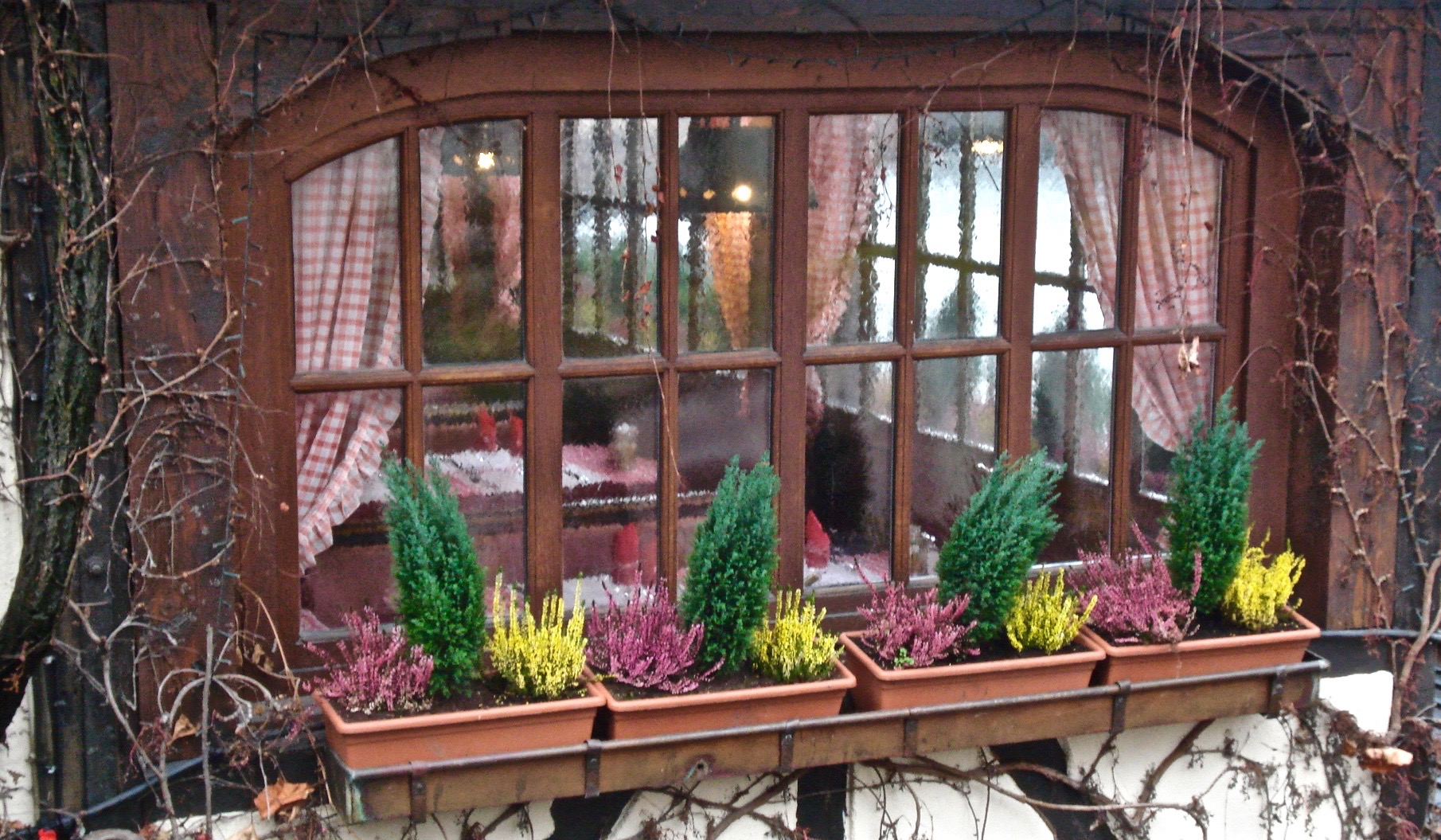
People everywhere were friendly and helpful. We thought that there would be a fairly even mix of French and German spoken, since, after all, Strasbourg has been bounced back and forth like a ping-pong ball between Germany and France. But the predominant language is French. After all, this is France and has been since 1918 at the end of World War I (not counting the German occupation in World War II). But most everyone spoke French and German and some English. Beth wanted to continue practicing her French, but Ethan and I (and to some extent John, though he is more reluctant to speak up and make a fool of himself) wanted to practice German. So in any given conversation at a restaurant or store, we usually had three languages going. Finally, Beth said, “Stop this German speaking. You are completely confusing my attempt to think and speak in French, and we are in France, and I get to practice French.”
“Ok, Ok, wir werden nie mehr versuchen Deutsch zu benutzen.”
“Merci.” Beth is pretty good at French. I know German better than Ethan or John does, but for the life of me I can’t get French pronunciation down, let alone understand it; whereas Ethan has a knack for picking up accents and dialects. He may not know French, but after our visit he sure sounds like he does. Here is an example of how well our German had progressed before Beth made us stop: “Die Cow ist uber die Fence gejumped und hat die Cabbage gedamaged.”
We had wonderful breakfasts at our hotel (actually at all our hotels), consisting of fruit, fresh fruit juices, hot chocolate, omelettes, charcuterie, cheeses, great breads, pastries, and wonderful yogurt. Throughout the days and our wanderings we grazed on all kinds of sausages, spaetzle, raclette baguettes, crepes, knackwurst, sauerkraut, and rot kohl. We had particularly good dinners at the Winstub Zuem Strissel and Chez Yvonne (open since 1873). We bought chocolates, marzipan, and jellies for gifts; ate them all; and had to buy more. What a moveable feast!
On our 22nd Wedding Anniversary on December 22, we had our anniversary meal (with the boys) at Chez Tante Liesel, a tiny restaurant with six tables in Petite France. We had earlier made reservations. We had venison and duck and veggies with potatoes, and Apfel kuchen for dessert. It was our best meal in Strasbourg.
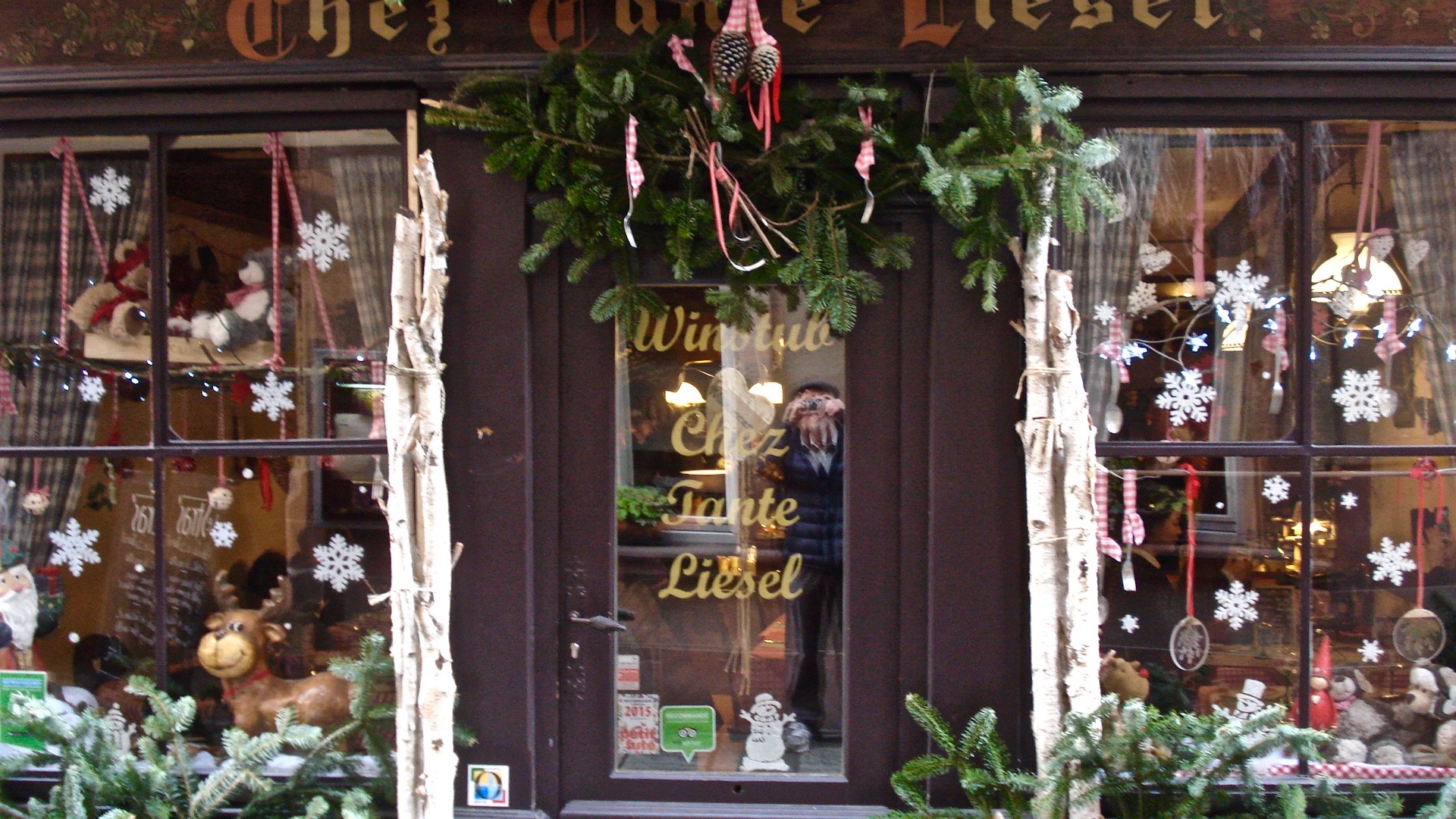
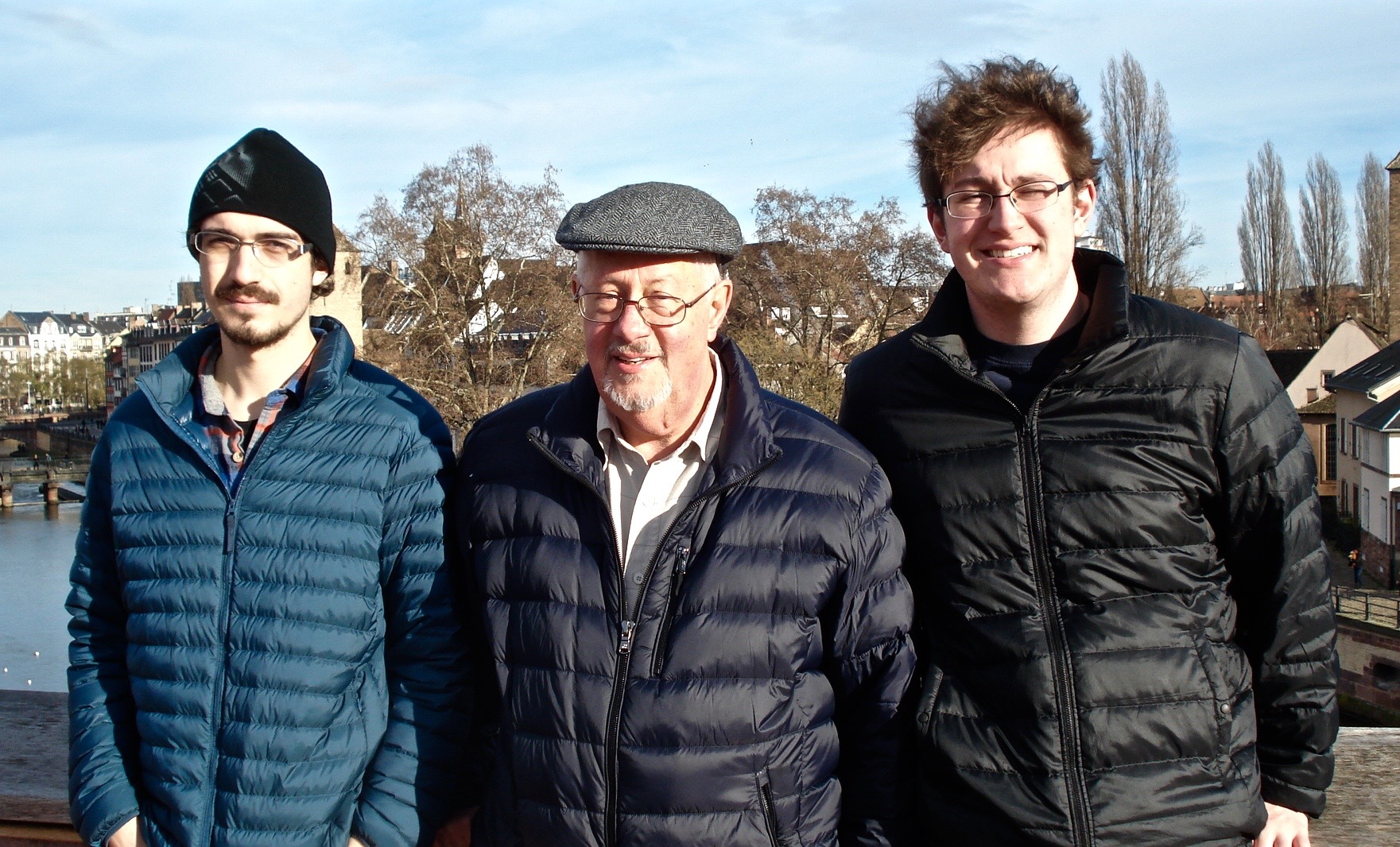
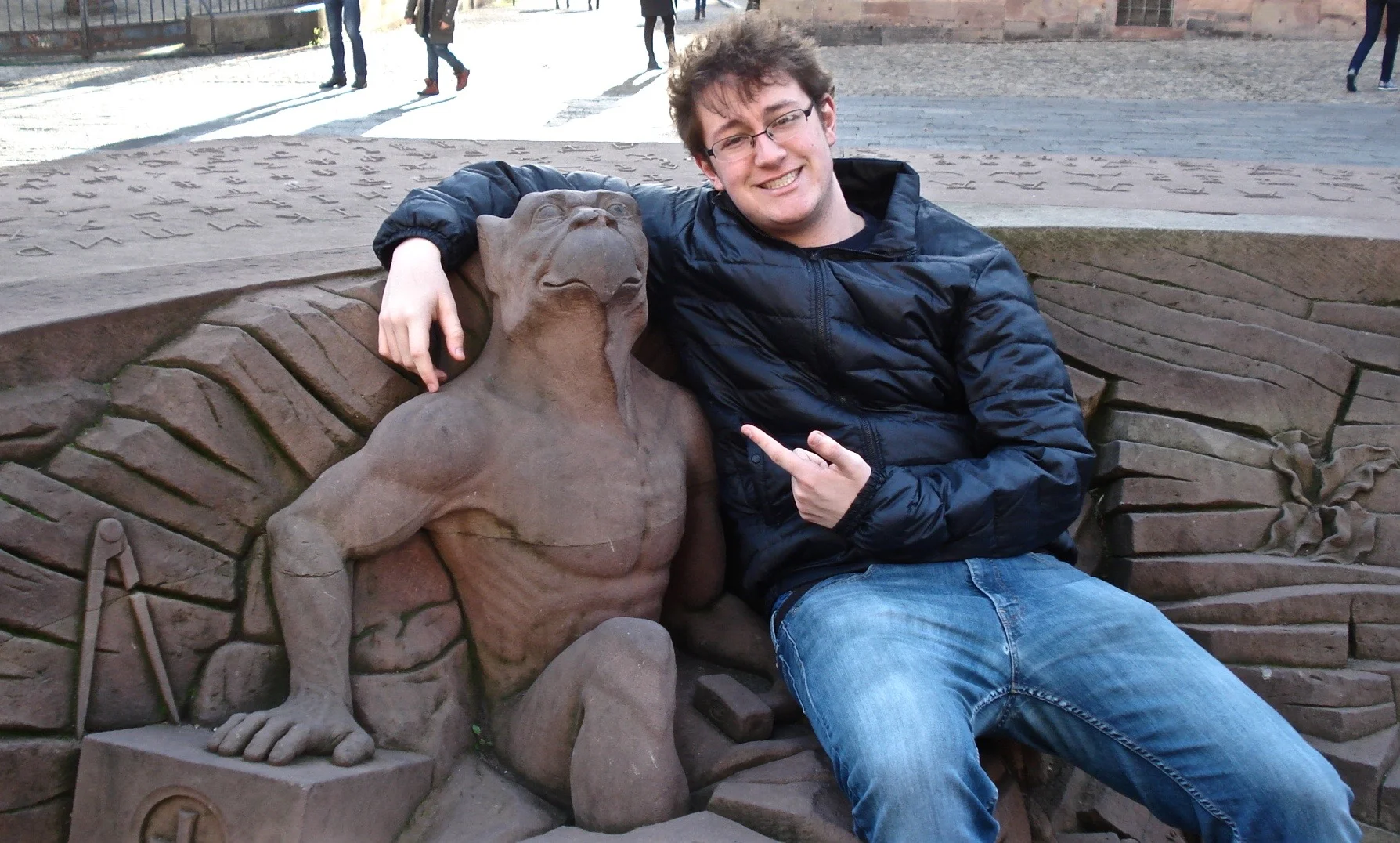
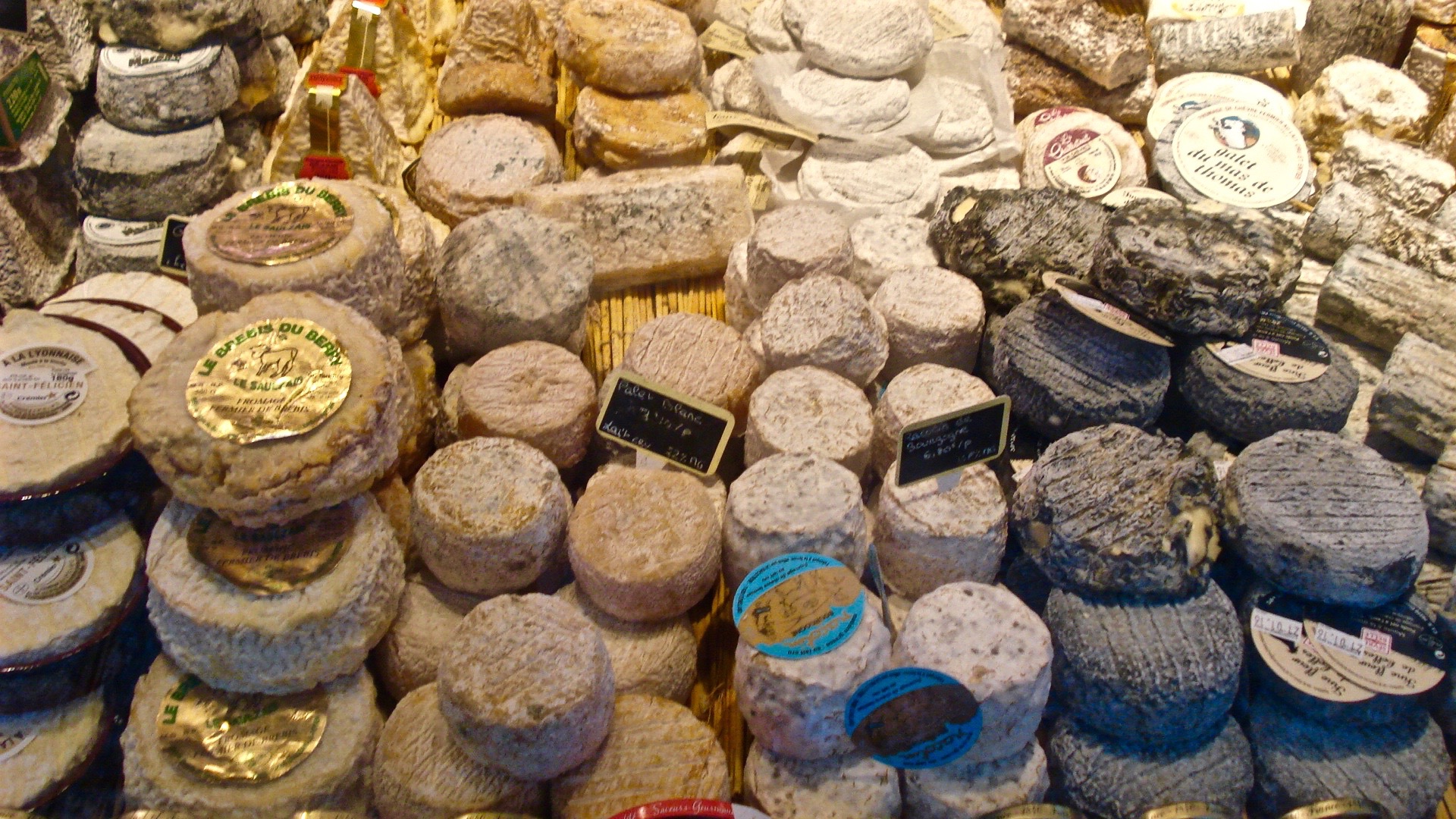
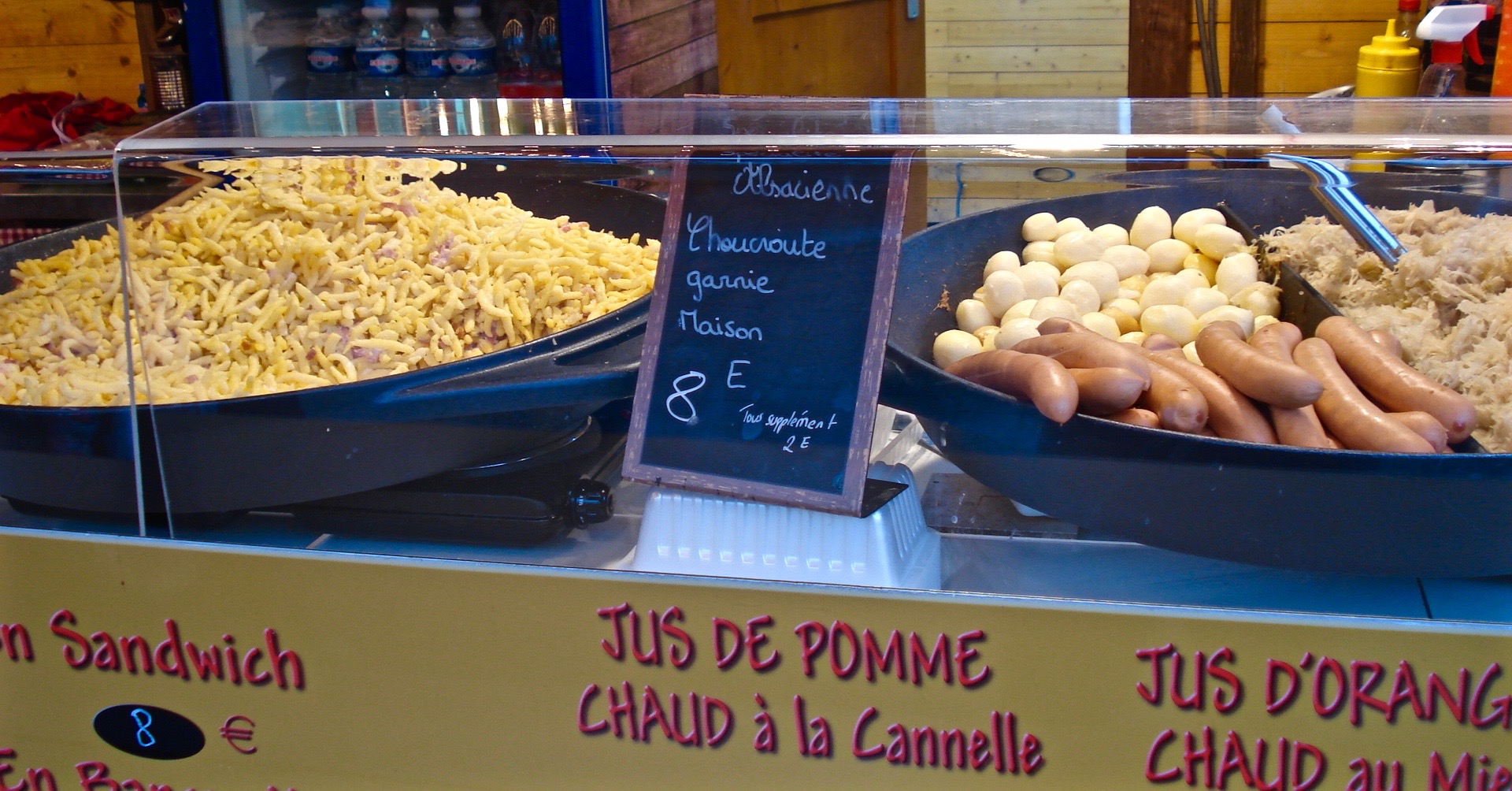
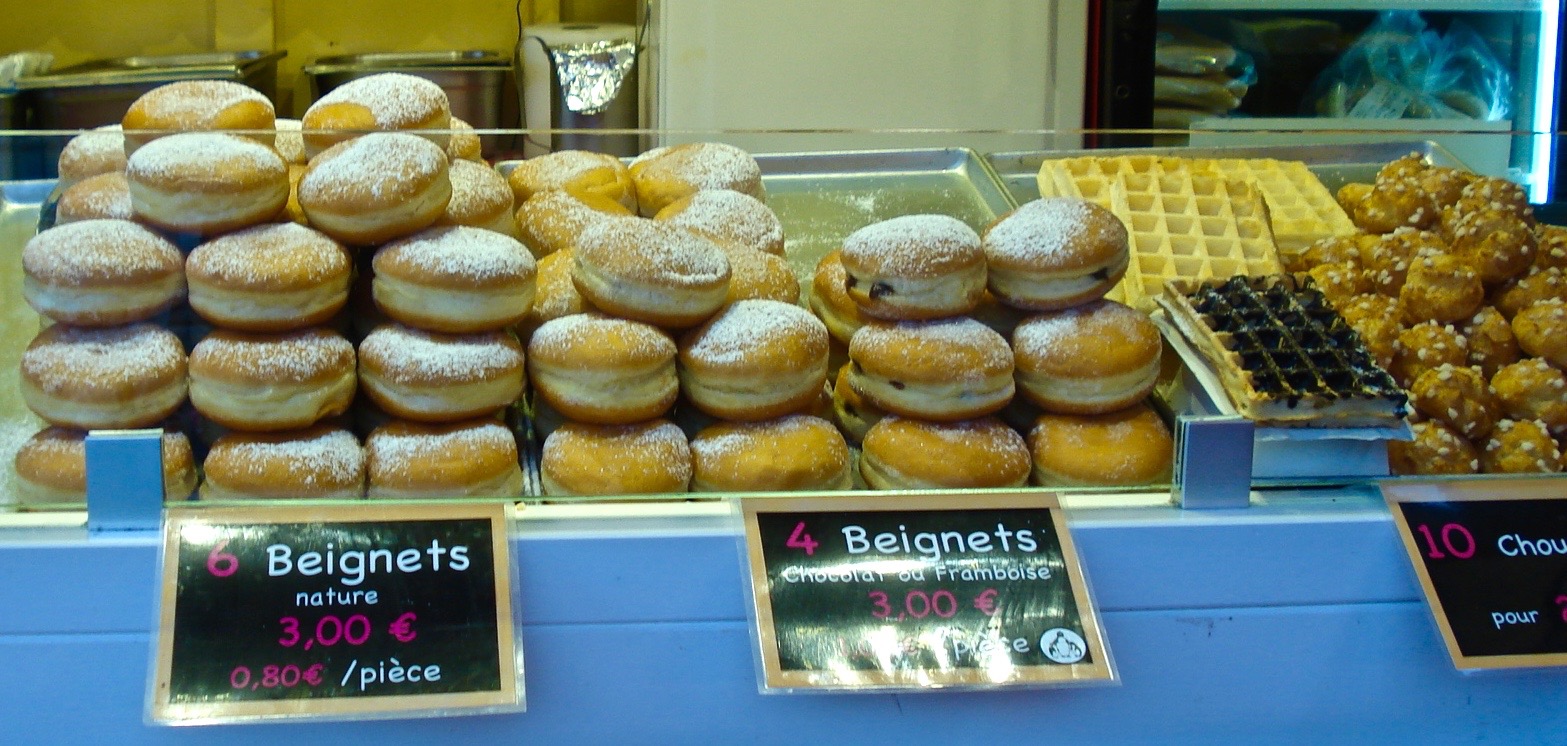
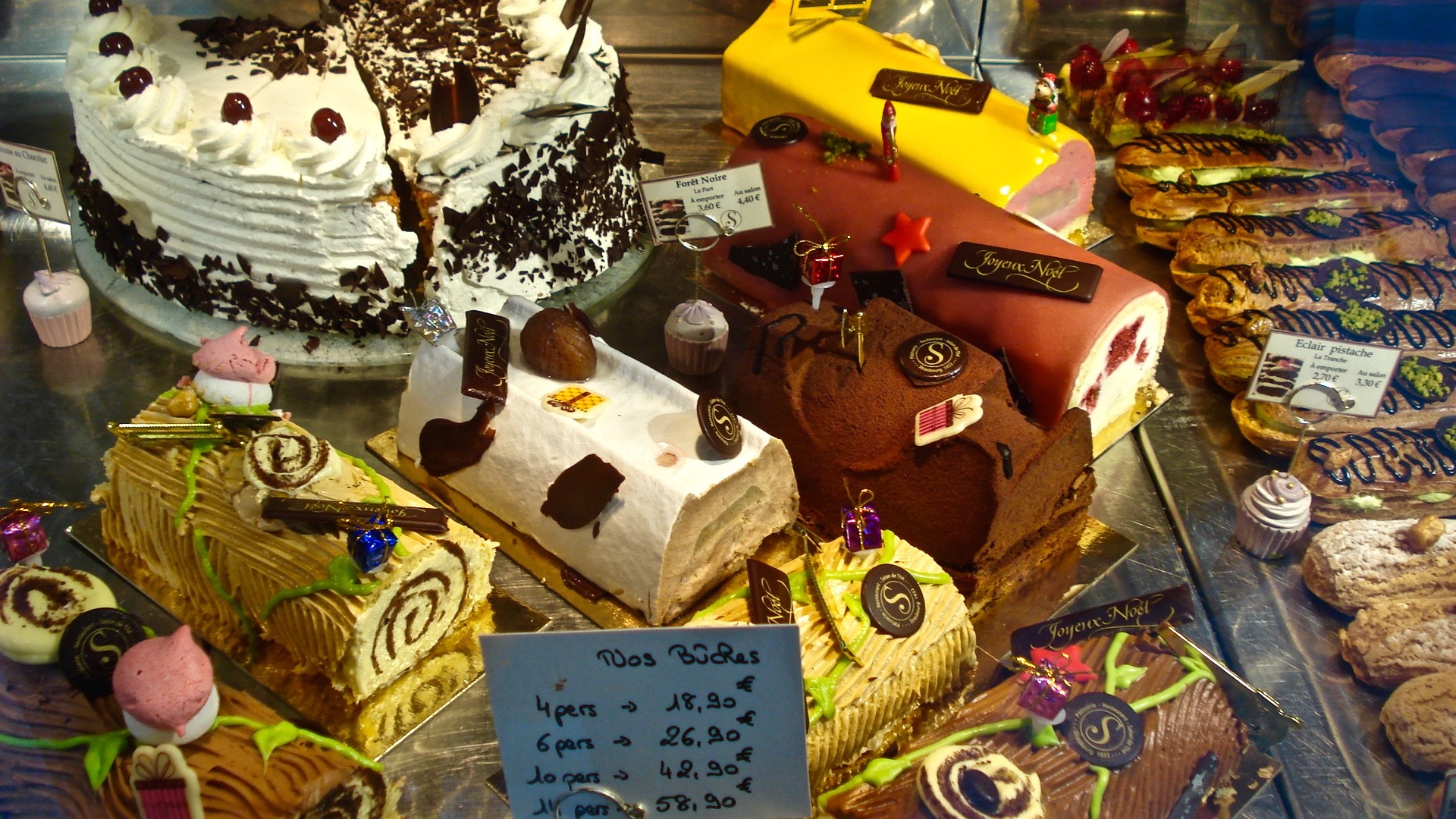

In addition to eating, we shopped among the Christmas kitsch, though we bought almost nothing. We considered cuckoo clocks from the Black Forest, Christmas whirly gigs, Nativity scenes, Alsatian pottery. Oh yes, Beth bought an Alsatian casserole dish painted with blue designs and made from local clay, and I bought an etching after talking to the artist and watching him tint the etching with water colors. There were shops selling all the parts for Nativity scenes so that you could mix and match and create your own version, but my favorite nativity scene was one carved from large tree trunks. I have included a picture of the tree trunk depicting baby Jesus and Mary.
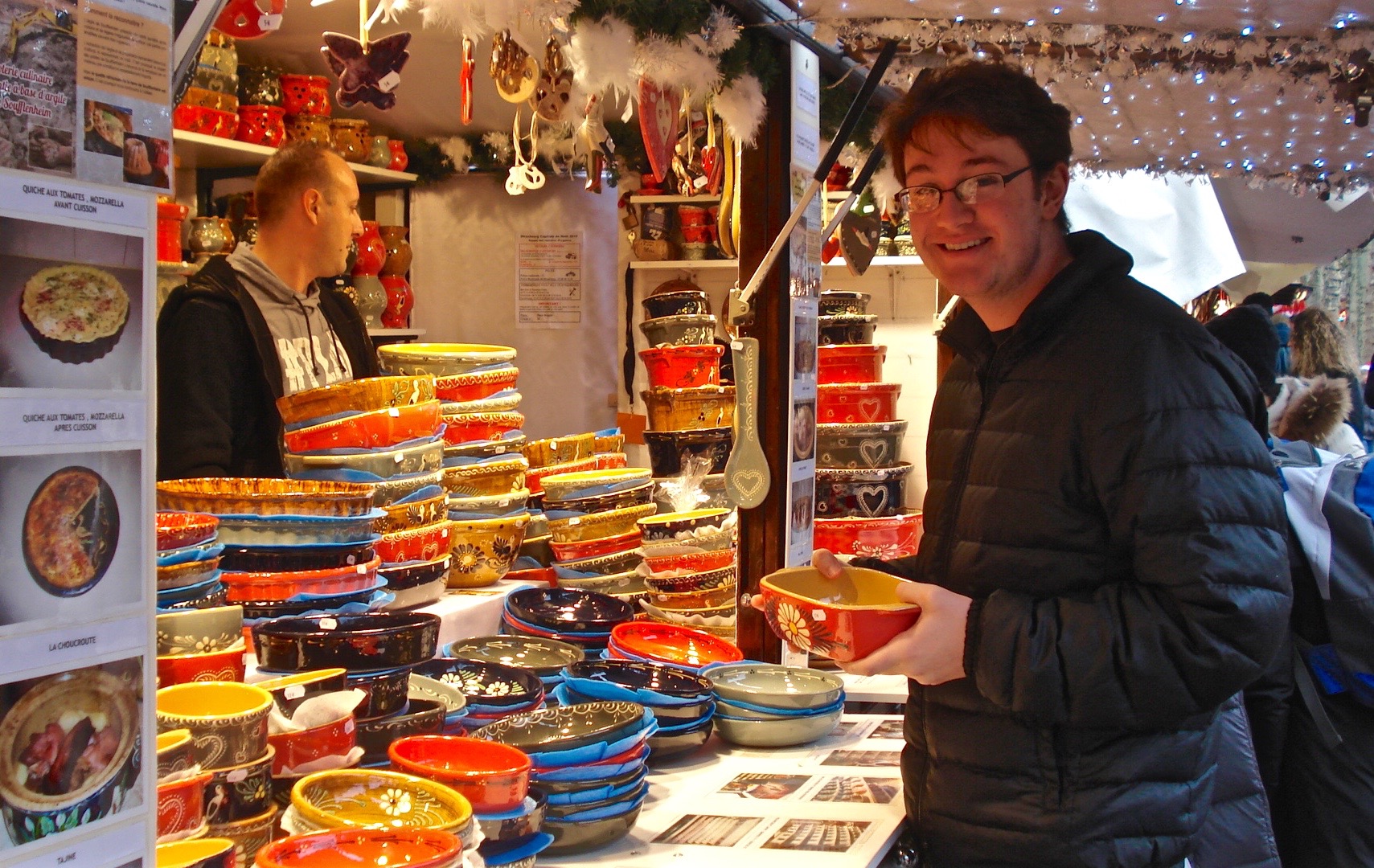
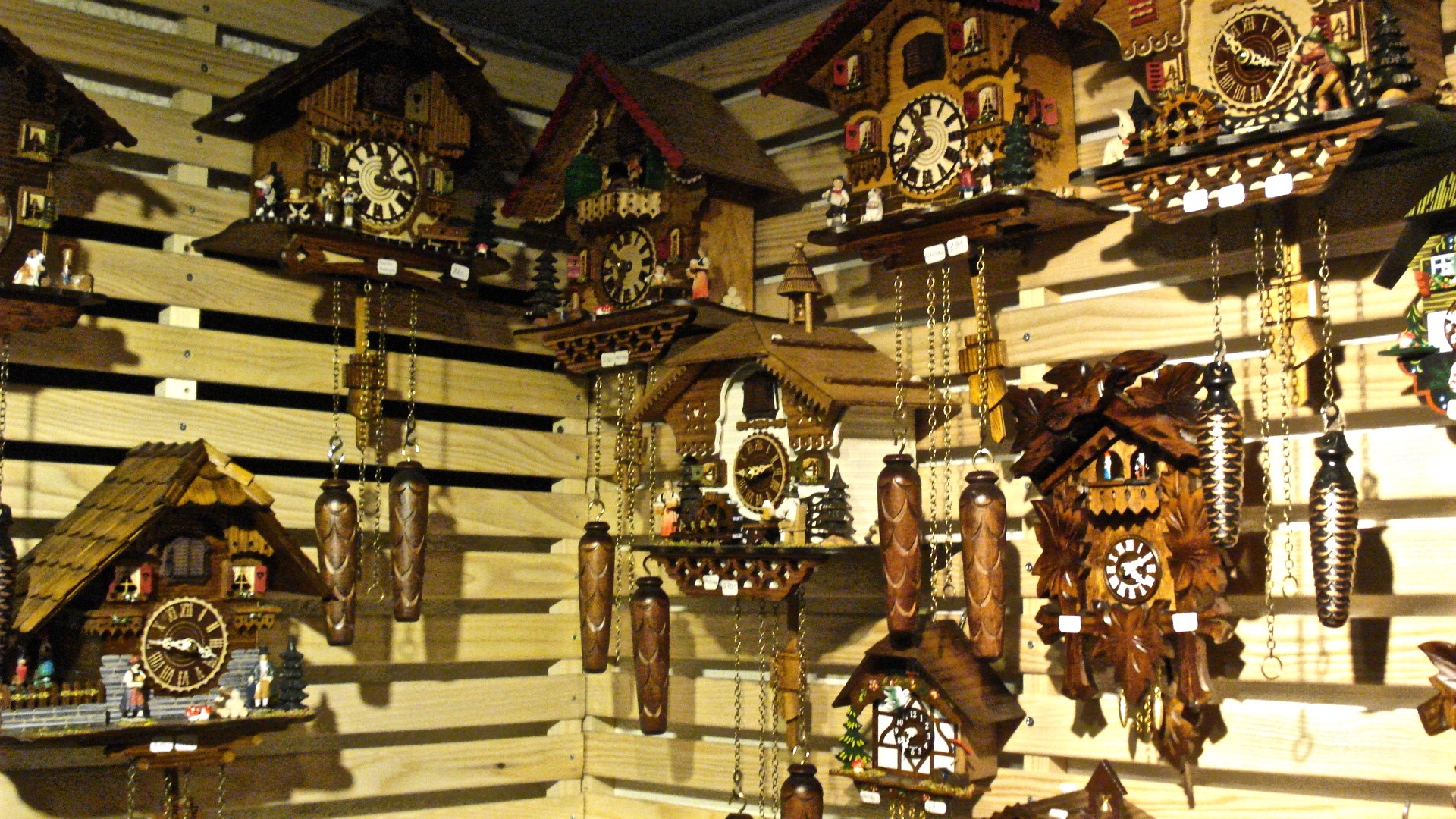
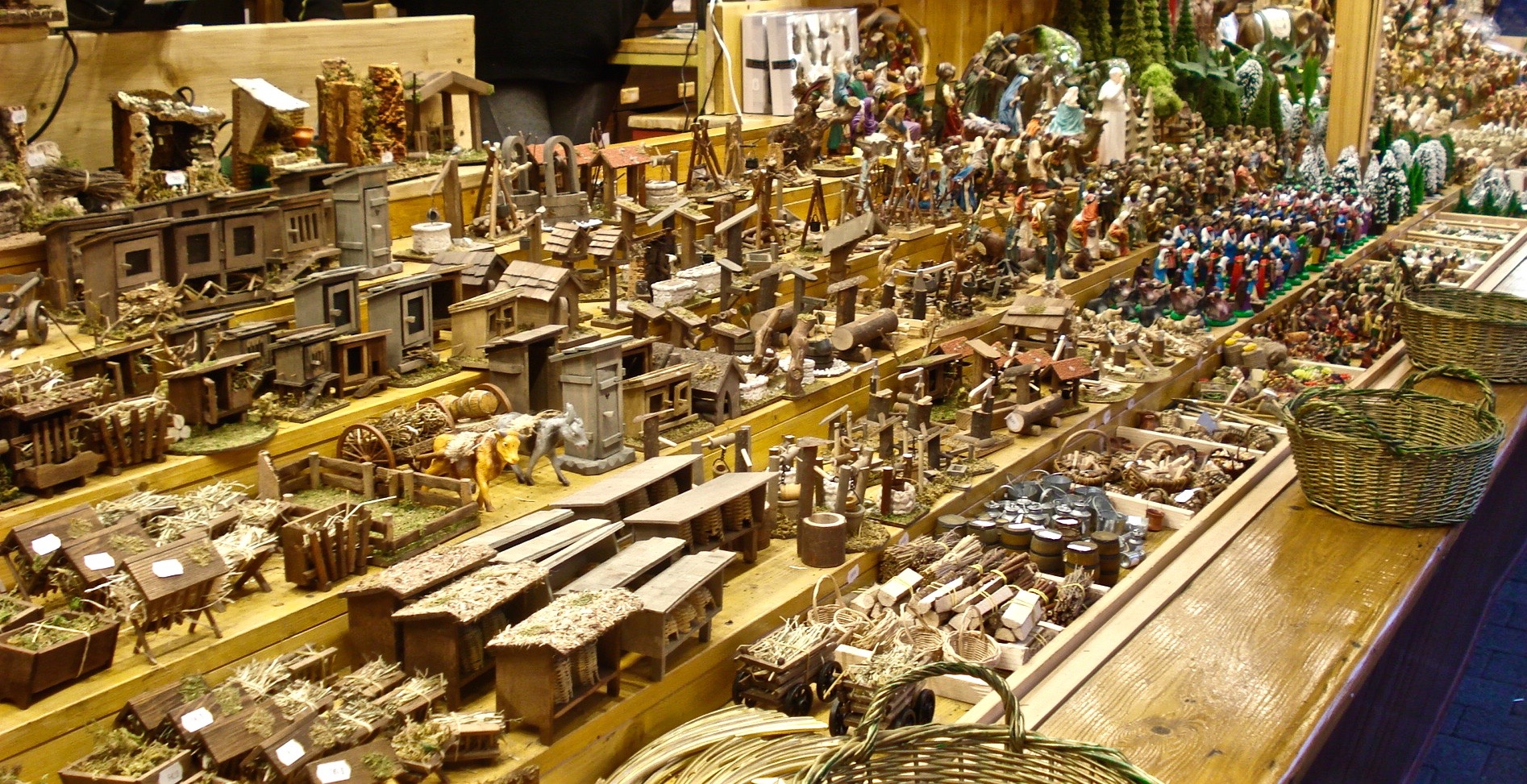
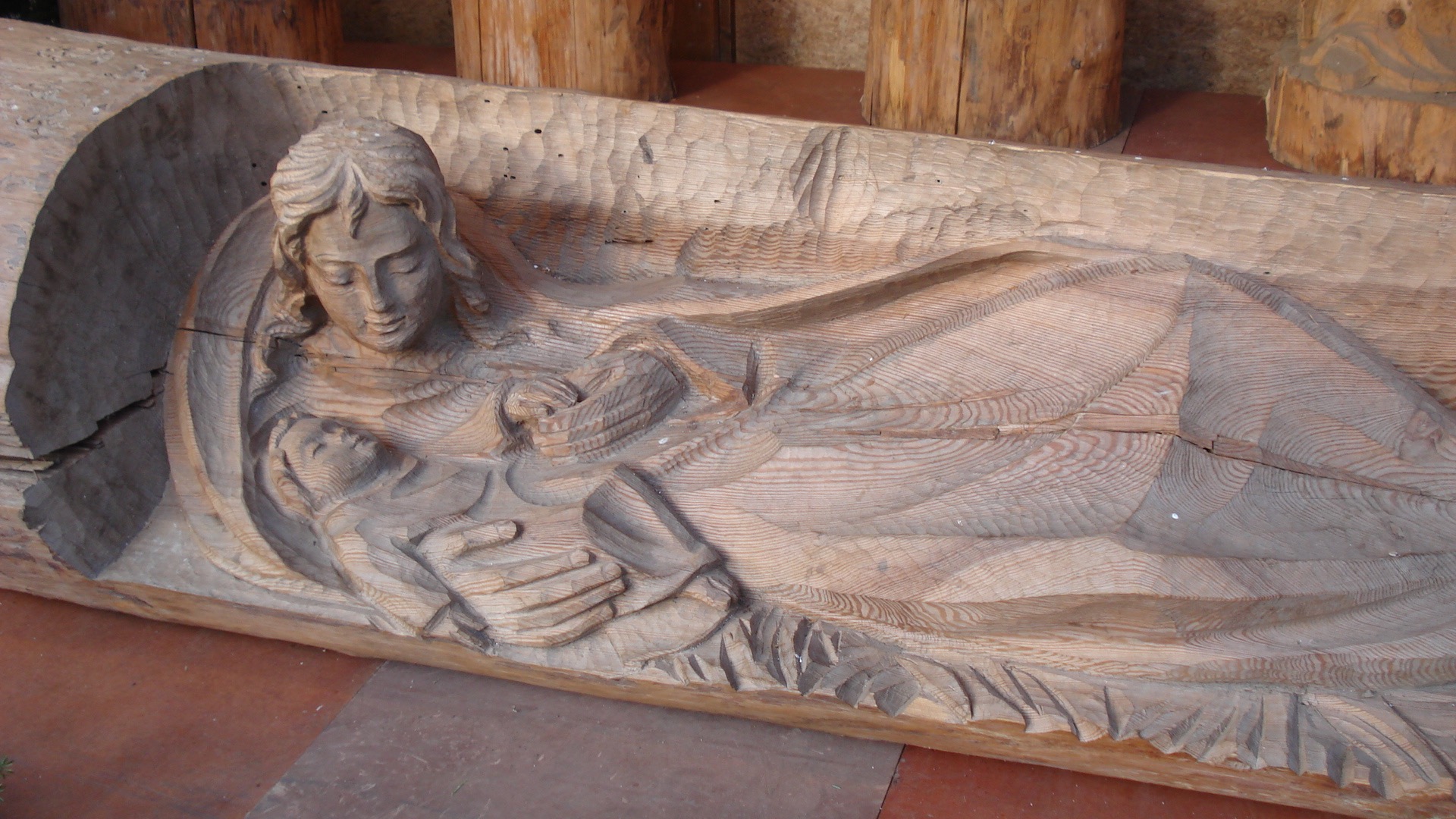
And, as in Paris, we visited a few old churches. The Notre-Dame Cathedral was spectacular and had a beautiful pipe organ on the side of the nave and a huge old clock with mechanical people and workings. It told not only the time but the month and year and what the stock market would do on Tuesday next. We were fortunate to hear an organ rehearsal and a woman sing a haunting rendition of O Holy Night in the Saint Thomas Evangelische Kirche. One organ in this church had been played by both Mozart and Albert Schweitzer (though not at the same time).
In the afternoon of our last day in Strasbourg we came upon a park where a crowd of kids and teens were attempting to skateboard and do tricks--the only skateboarders we saw on our trip. After watching them for a while, John commented, "I have never seen so many skateboarders who are all so awful at doing it." I think it must be a new sport in Strasbourg.
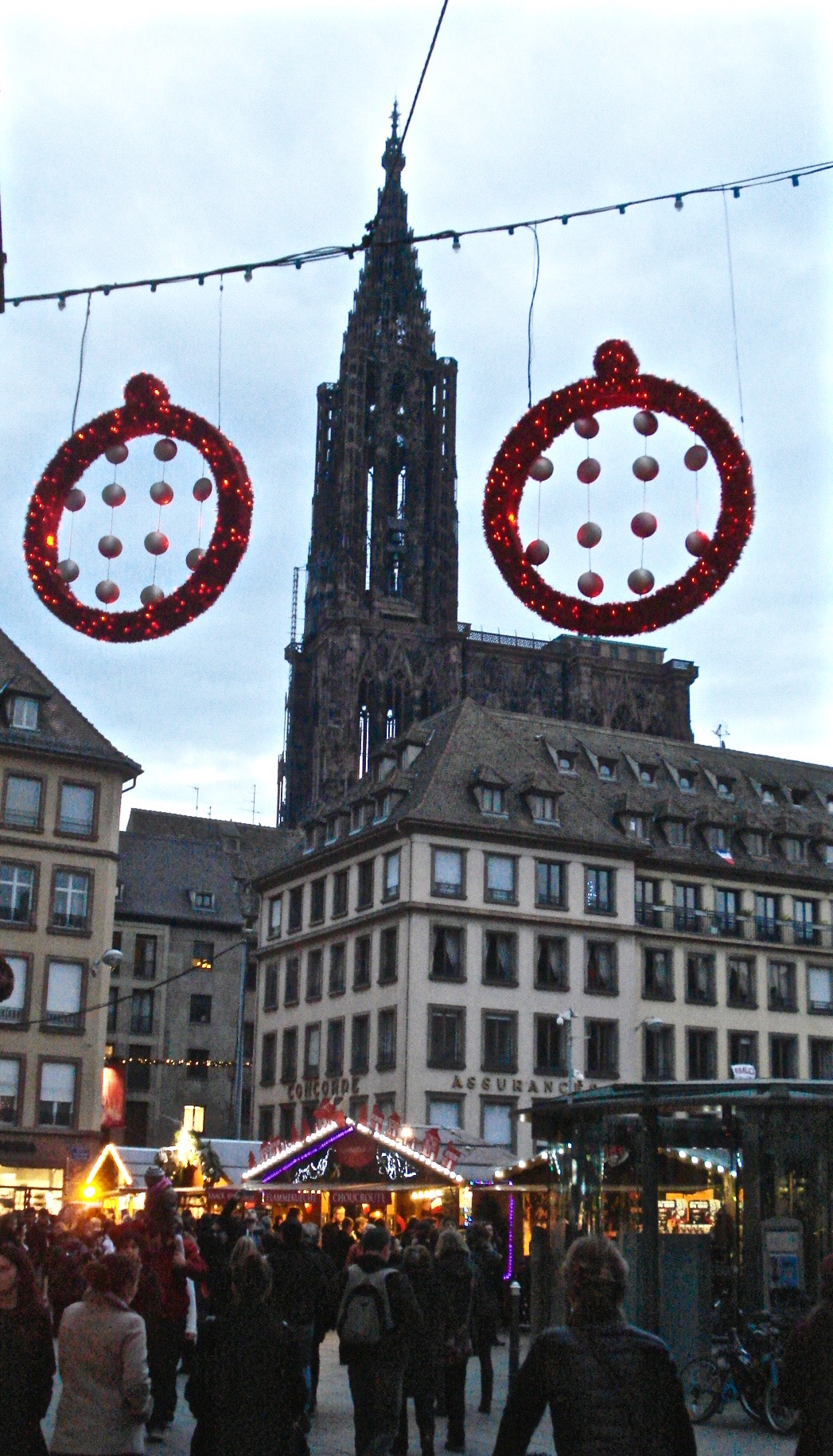
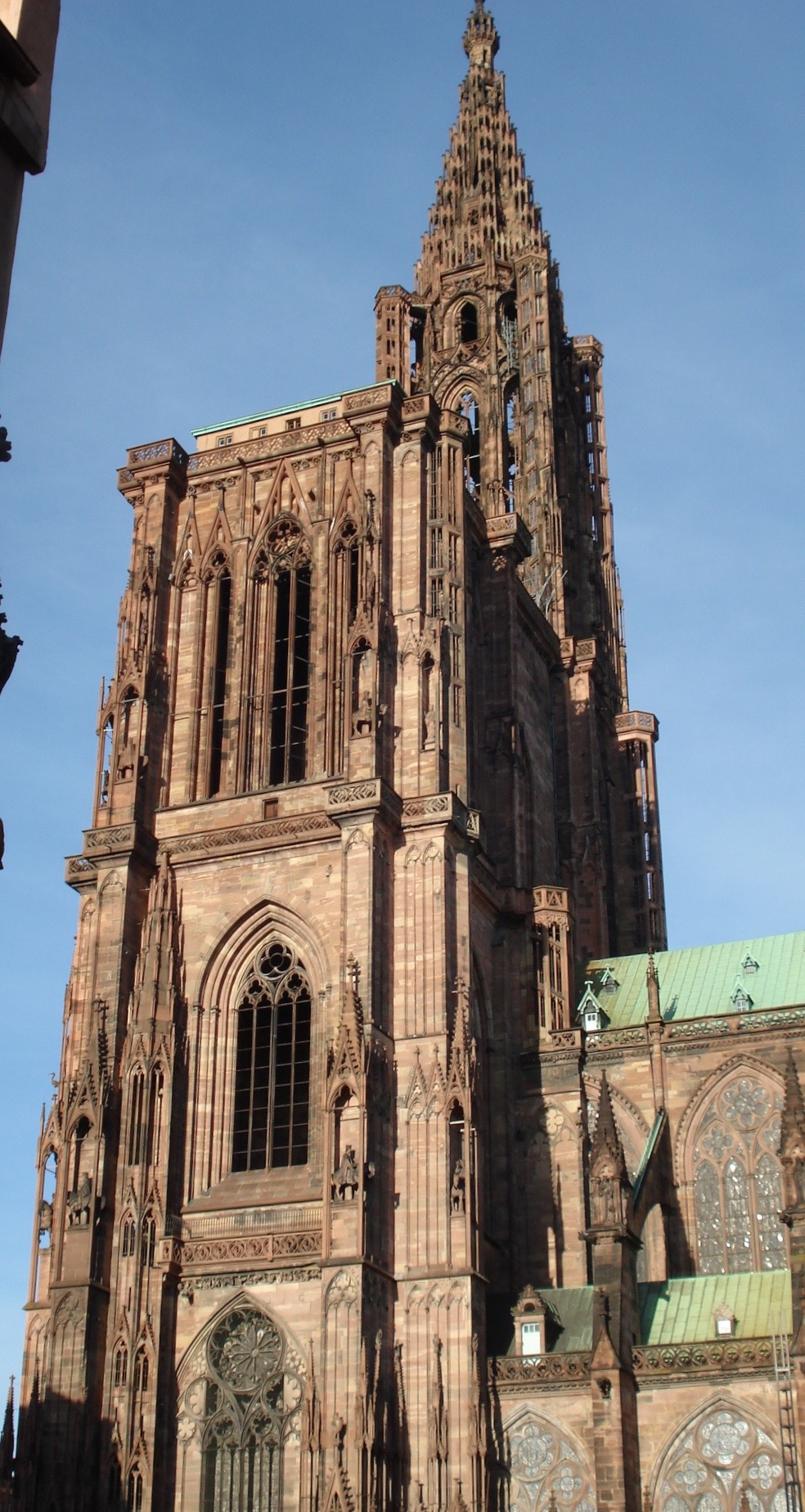
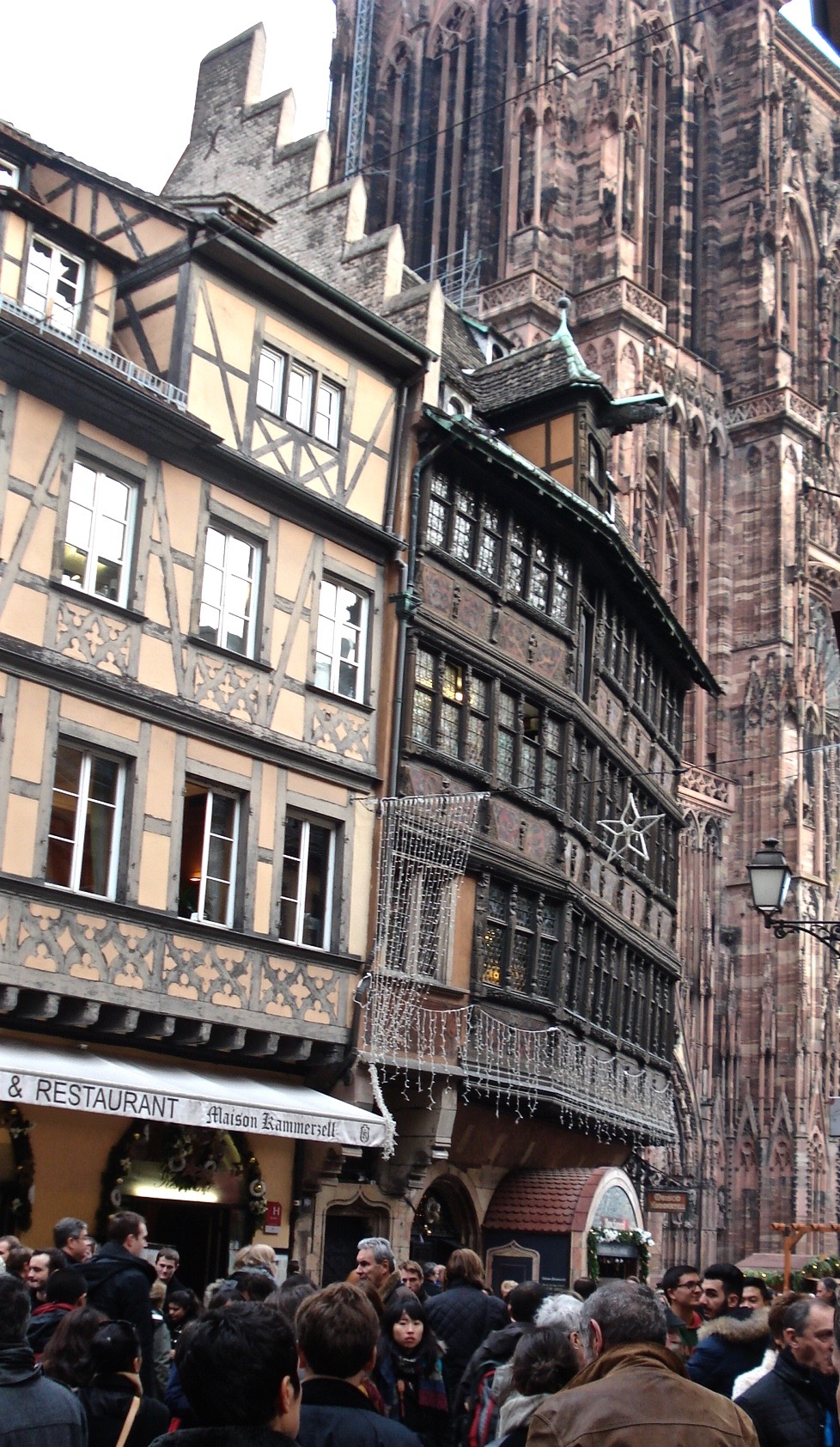
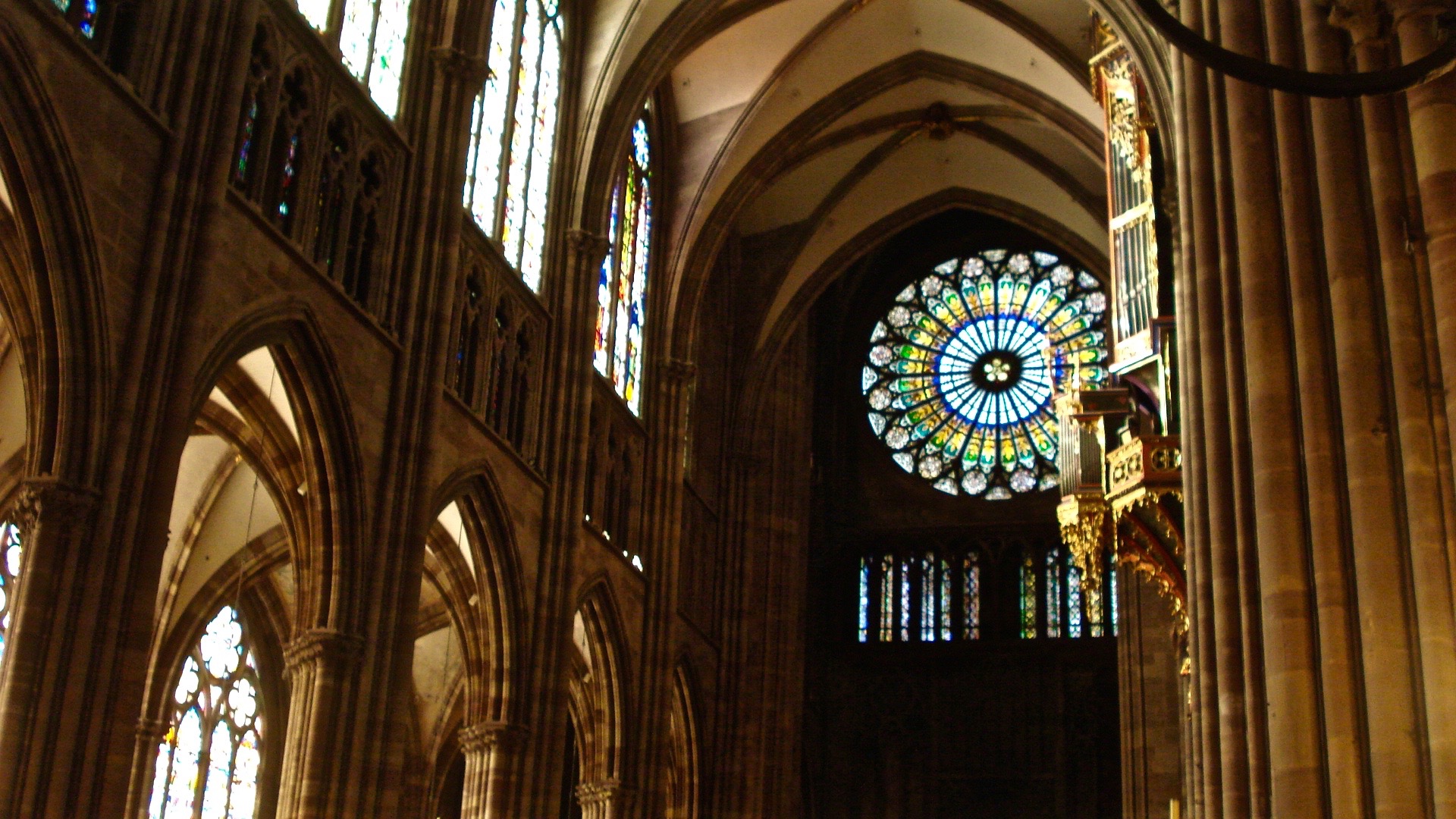
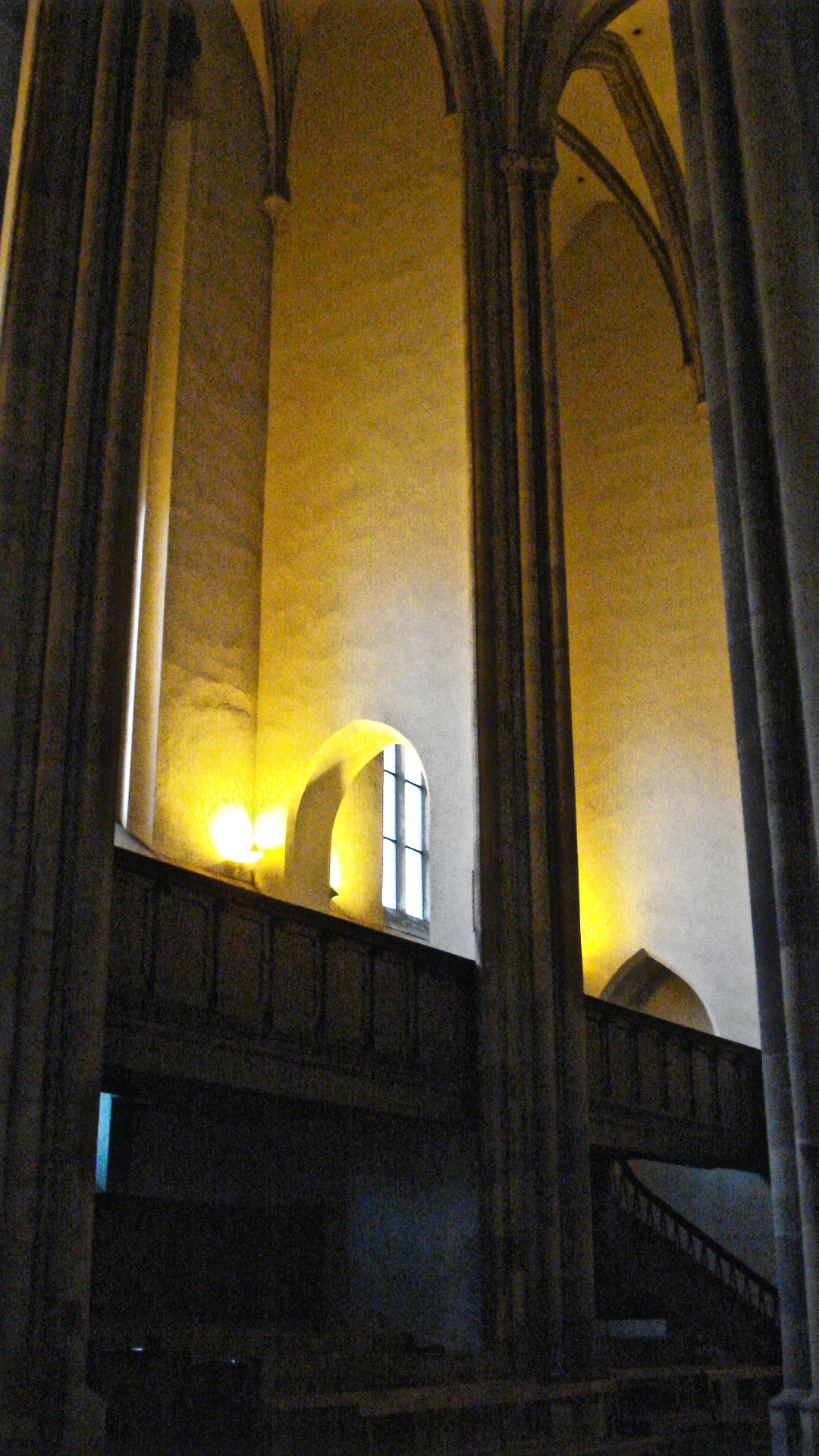
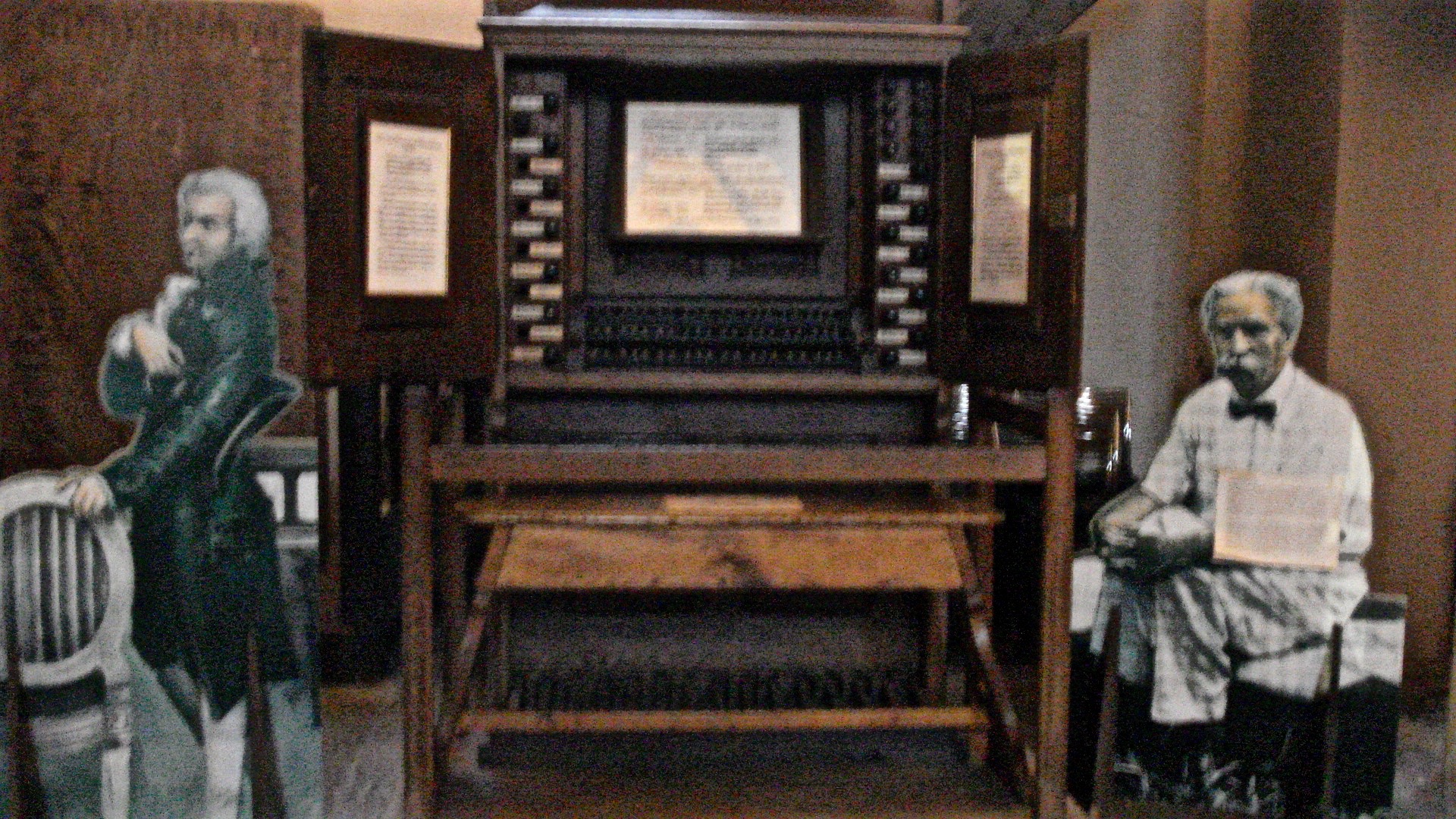
Back to Paris
On Wednesday, December 24, we took the train back to Paris and checked into the Hotel Baltimore on avenue Kleber, near the Arc de Triomphe in the 16th arrondissement. It was our nicest hotel yet and right near a Metro stop. We went to the Louvre and ate lunch at a brasserie. That night we had a wonderful Christmas Eve dinner at Montparnesse 1900, in the neighborhood of our first hotel. We lingered over dinner and discussed this unusual way to spend Christmas Eve (at least for us).
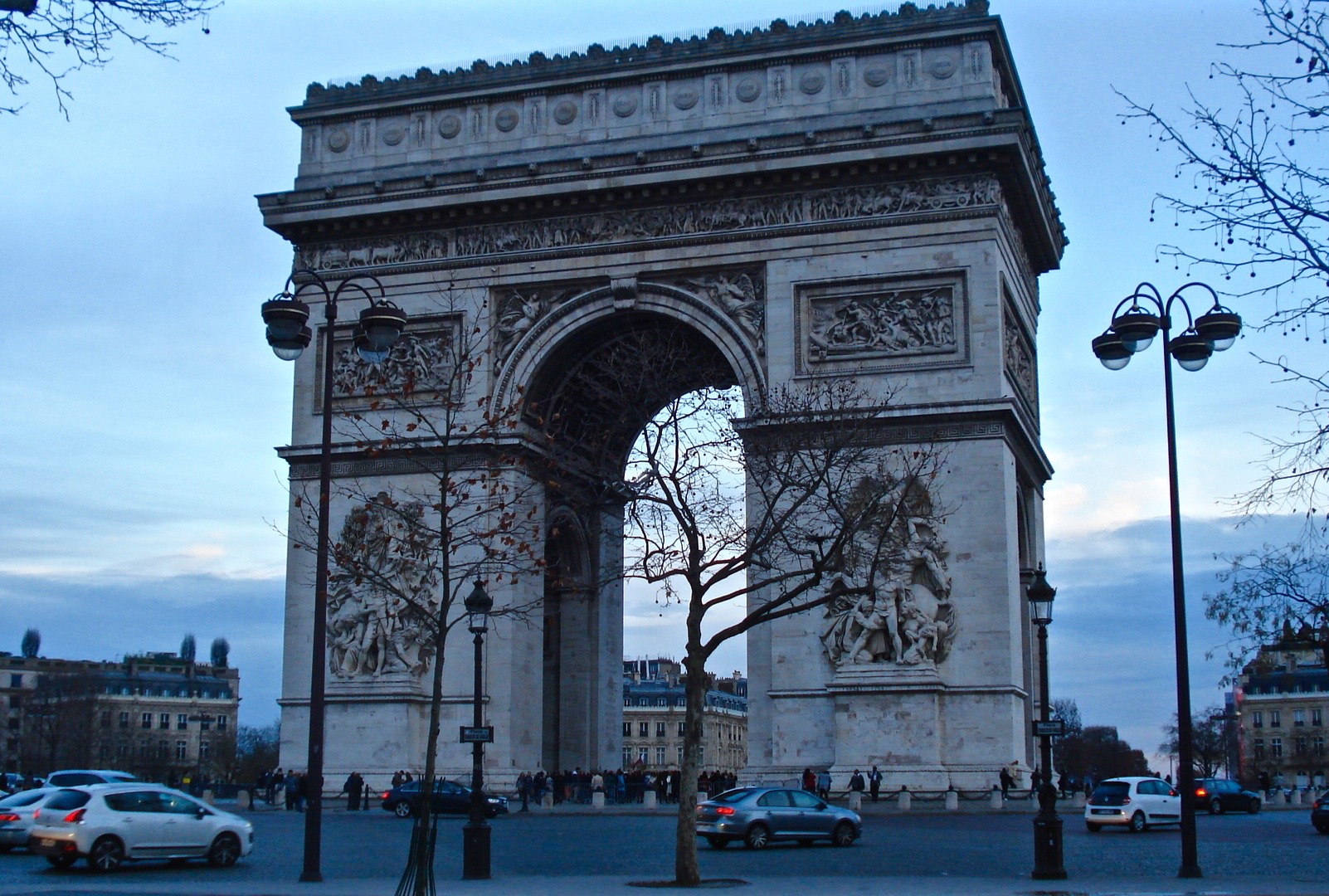
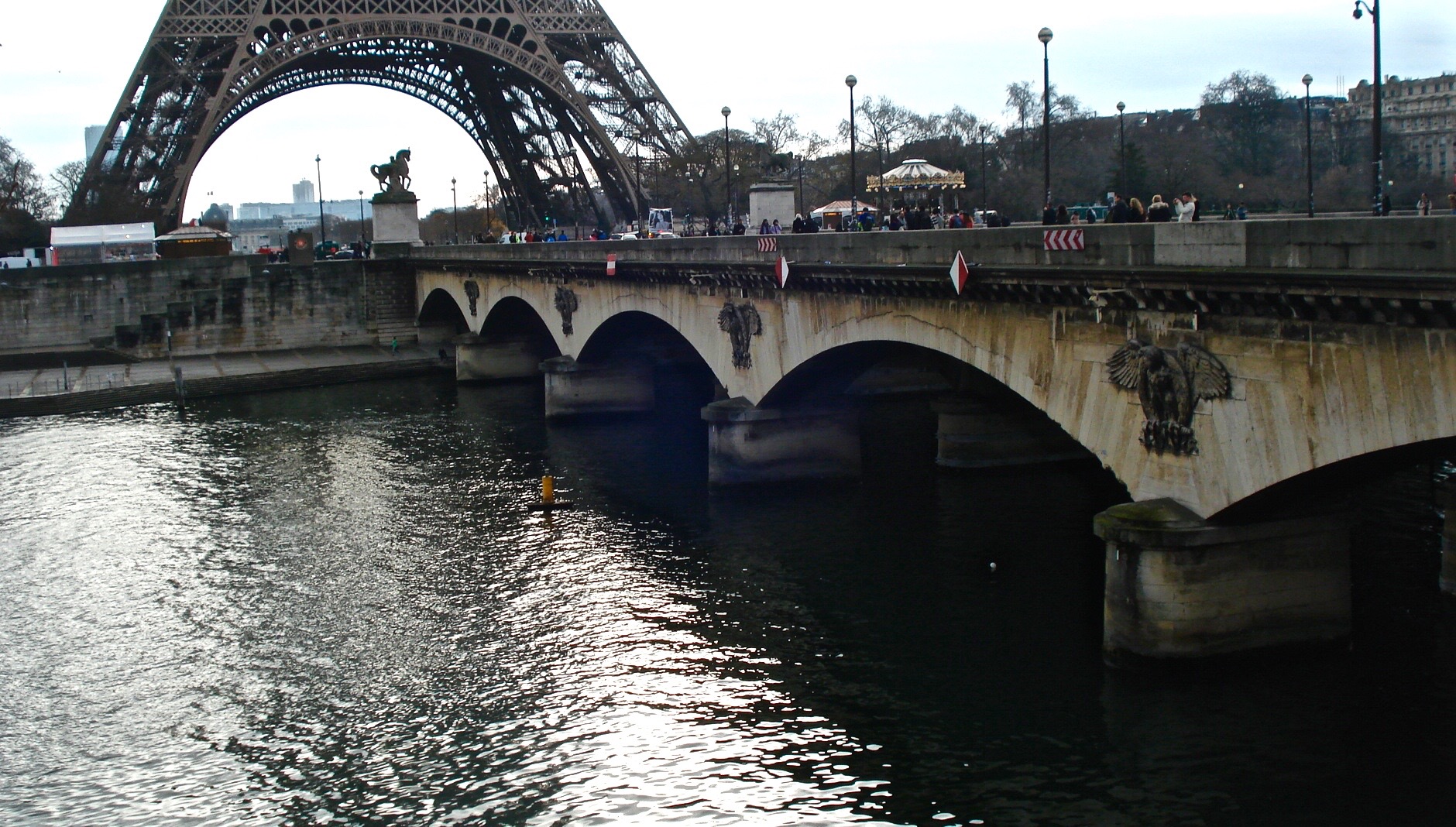
On Christmas Day, we awoke late (no presents to open) and walked down the street past the Trocodero and across the Seine to the Eiffel Tower. We then took the Metro to Le Procope on rue de l’Ancienne Comedie right off the Blvd. St. Germain. This restaurant was founded in 1686 and is the oldest, continuously running restaurant in Paris. Napoleon, Jean Jacques Rousseau, and others ate here. Three of us thoroughly enjoyed our meal in the most elegant restaurant on our trip. Ethan, however, being the sporting type, ordered the oldest meal on the menu—the same meal that Napoleon had when he dined at the restaurant—Calf’s Head Casserole, though it was more like a beef stew. There were no eyeballs or ears in the stew, but it was fatty, and Ethan did not like it. Hey, he did show himself to be a historical foodie.
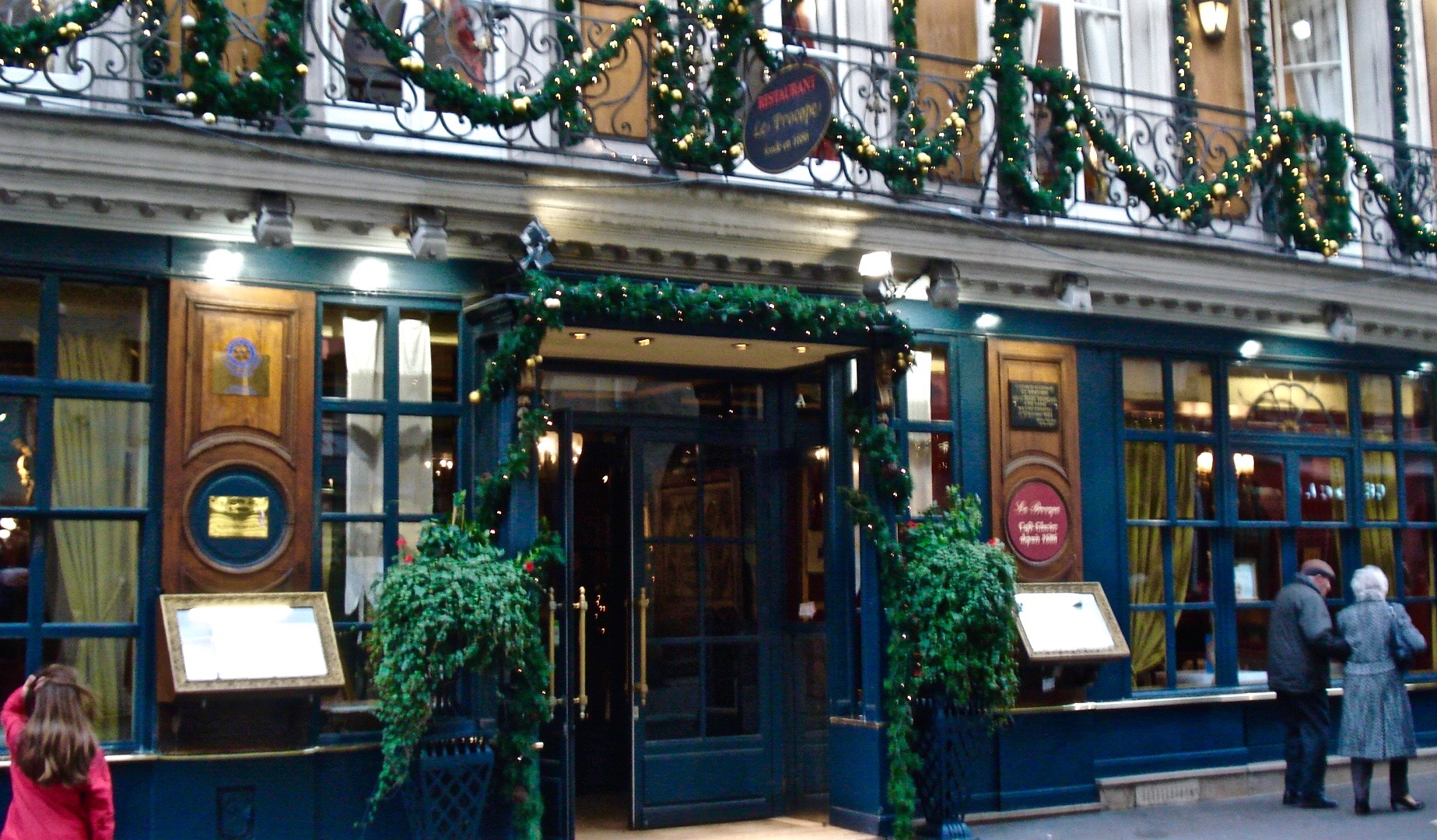
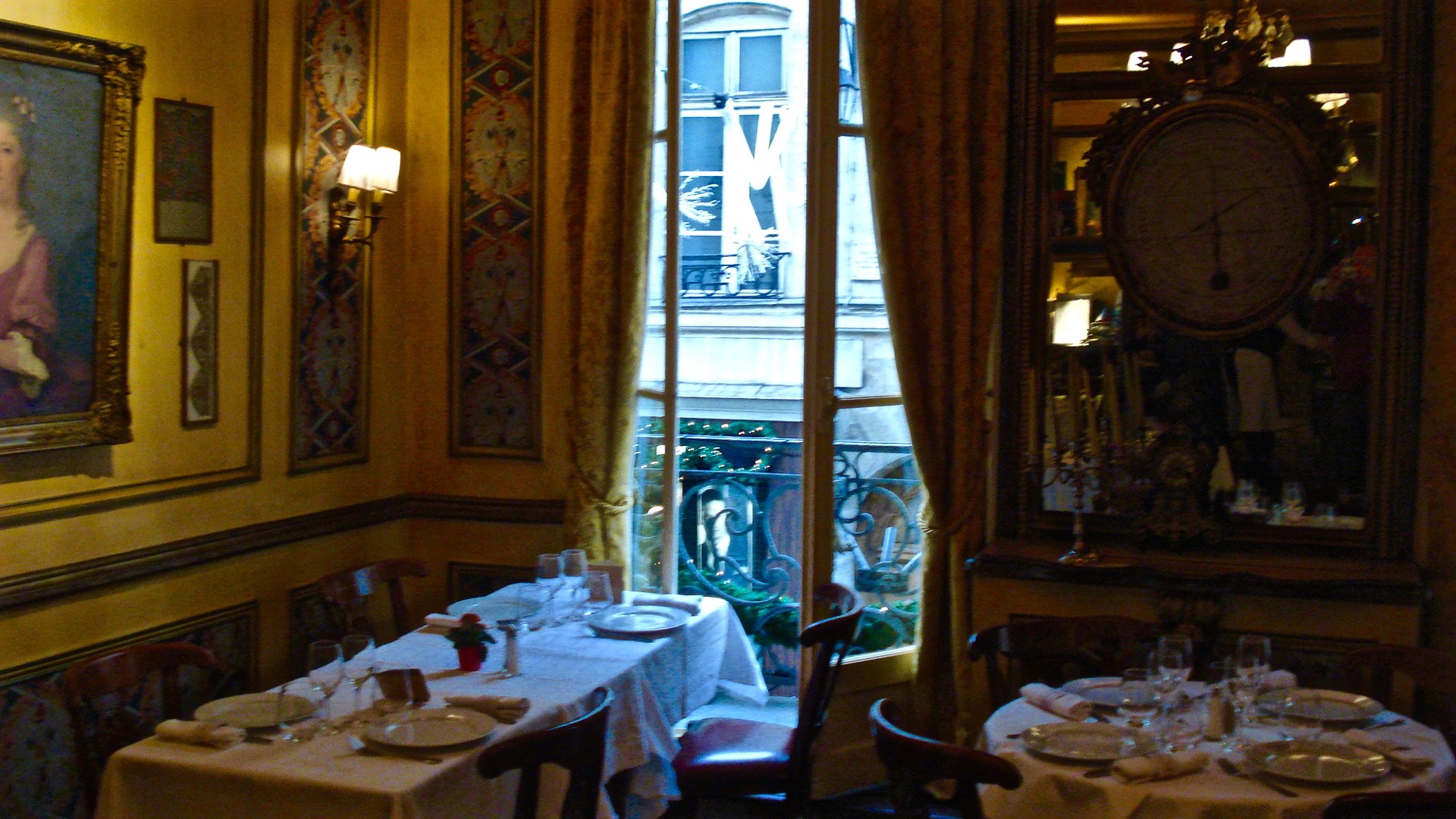
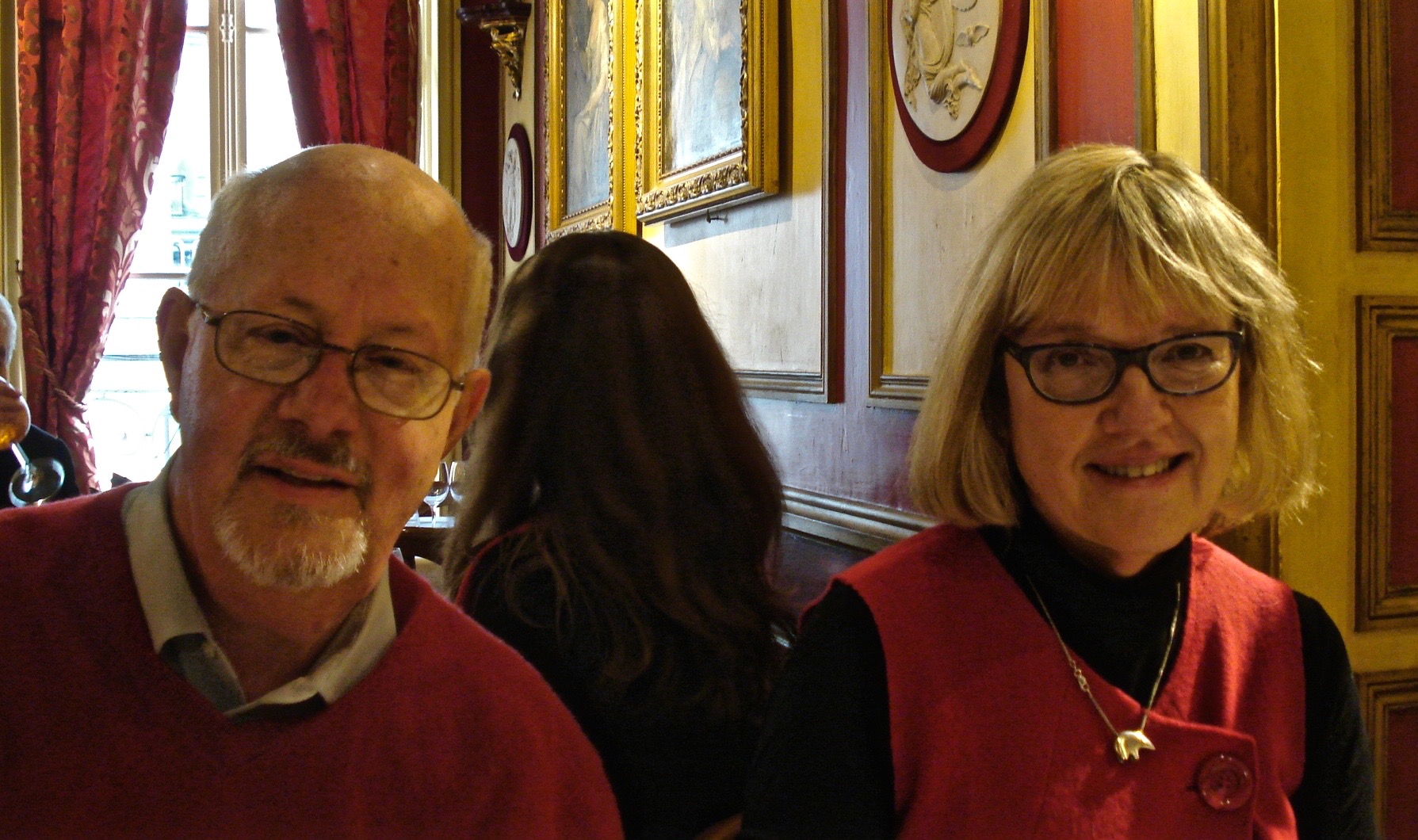
Afterwards we strolled along avenue des Champs Elysees, which seemed to be the cultural thing to do on Christmas Day, as apparently everyone else in Paris was out there doing the same thing. We ended up spending some time under the Arc de Triomphe and then headed back to the hotel and ended the day with a good Italian meal.
But what about art museums, you may ask. We visited three. The first was the most moving and enjoyable, for me. We visited the newly renovated Musee de Picasso in Le Marais. We loved the large collection of Picasso’s art with its artworks from different periods of his life, from his realistic and amazing paintings done in his youth to his paintings in old age. Look at the picture I have included of a realistic painting of a man. He did that at 14 years of age. Wow! If he could do that at 14, no wonder he was bored with representational art and went on to try new things. There were rooms devoted to guitar art, animals, cubism, nudes, political statements. There was humor as well as solemnity in the art. One wall held, side by side, an early, quiet and beautiful representational painting Picasso had done of his first wife, Olga, a Russian ballerina, and then one of the last paintings he had done of her as their marriage was ending in separation and was filled with fighting and stress. In the picture of the two paintings next to each other, you decide which is which and how you might like to be portrayed. Not only did we love the art displayed in the museum, we loved the building itself. It was well laid out, with light and corners and spaces that provided a work of art in itself.
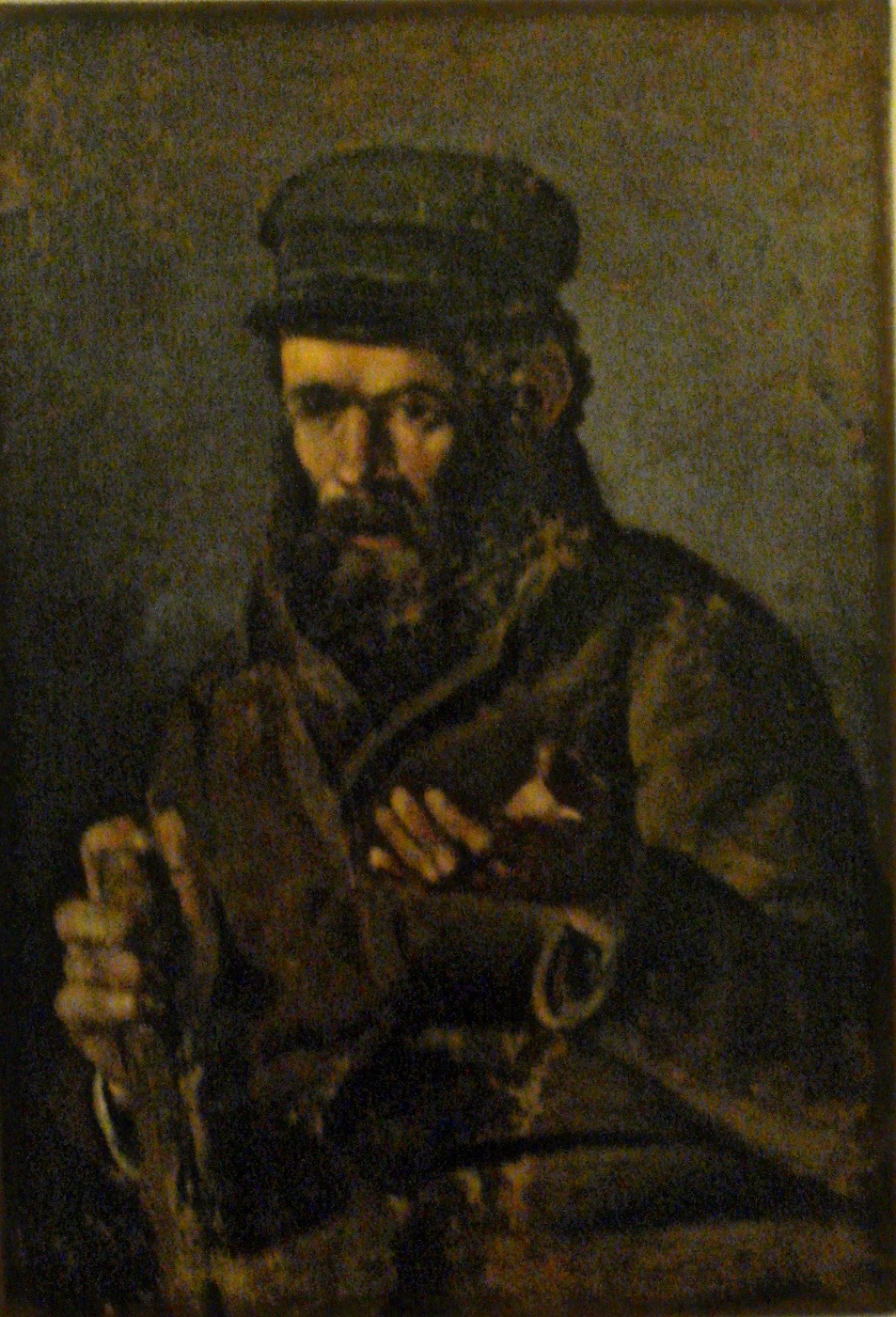
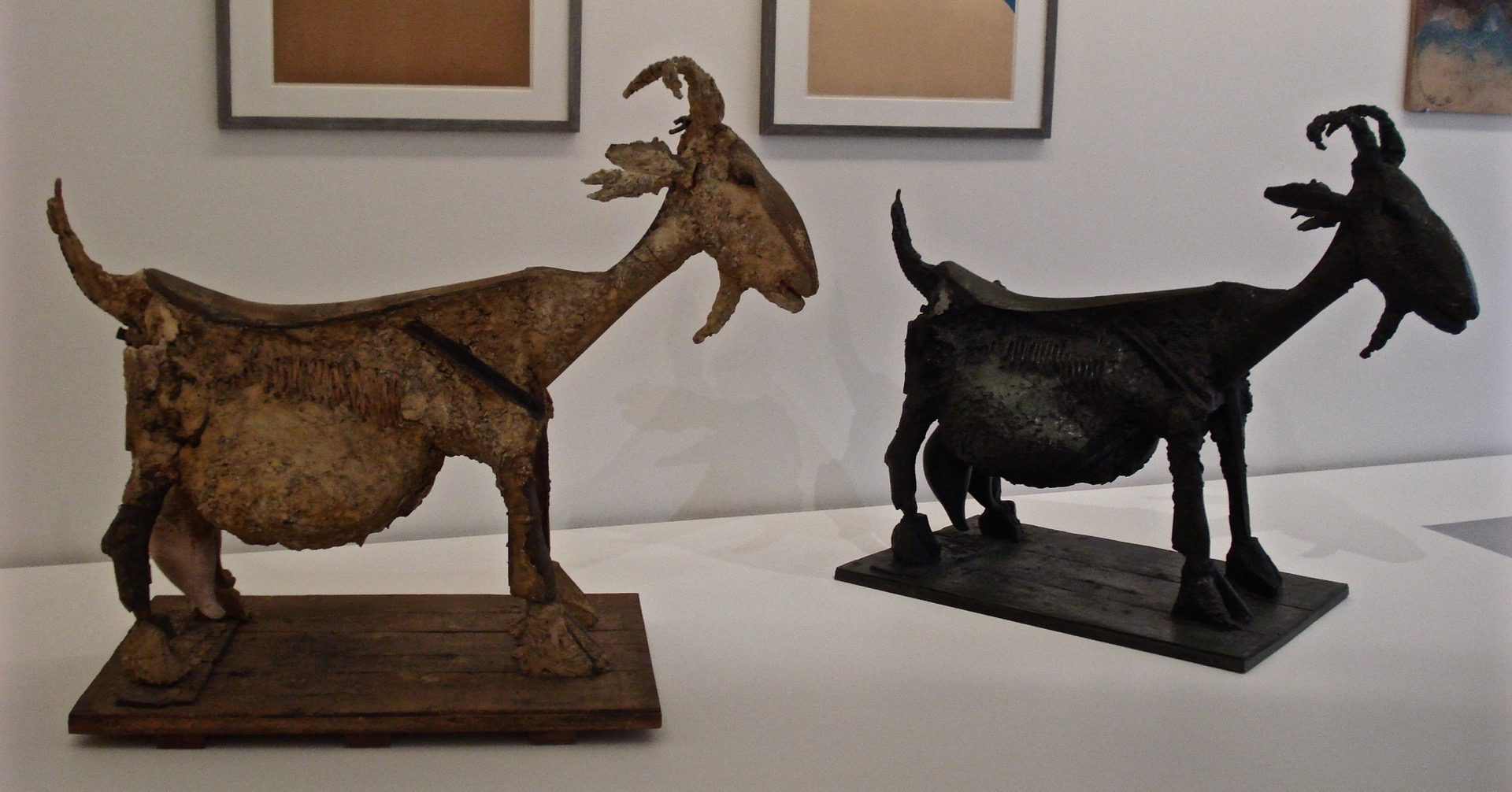
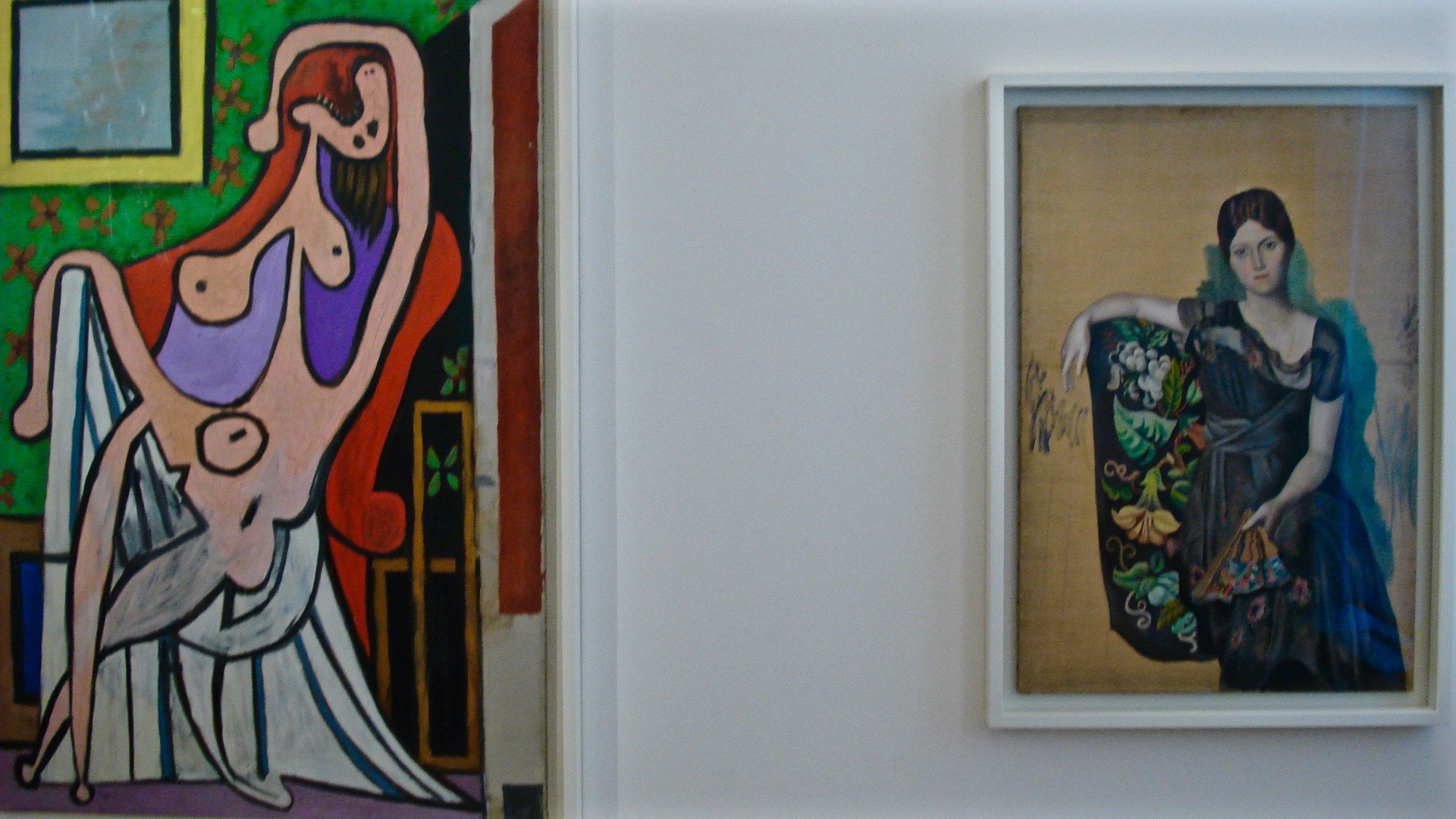
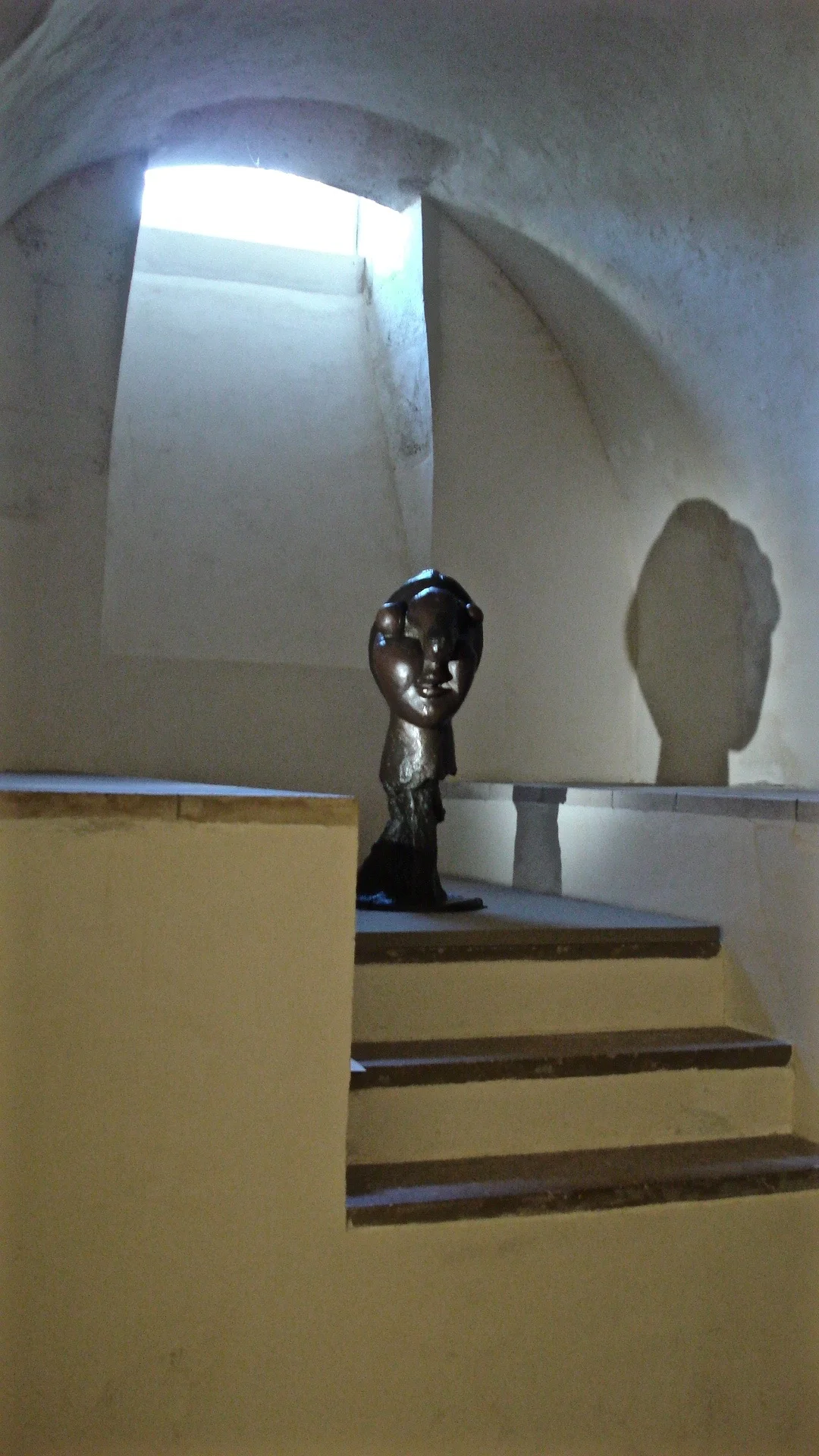
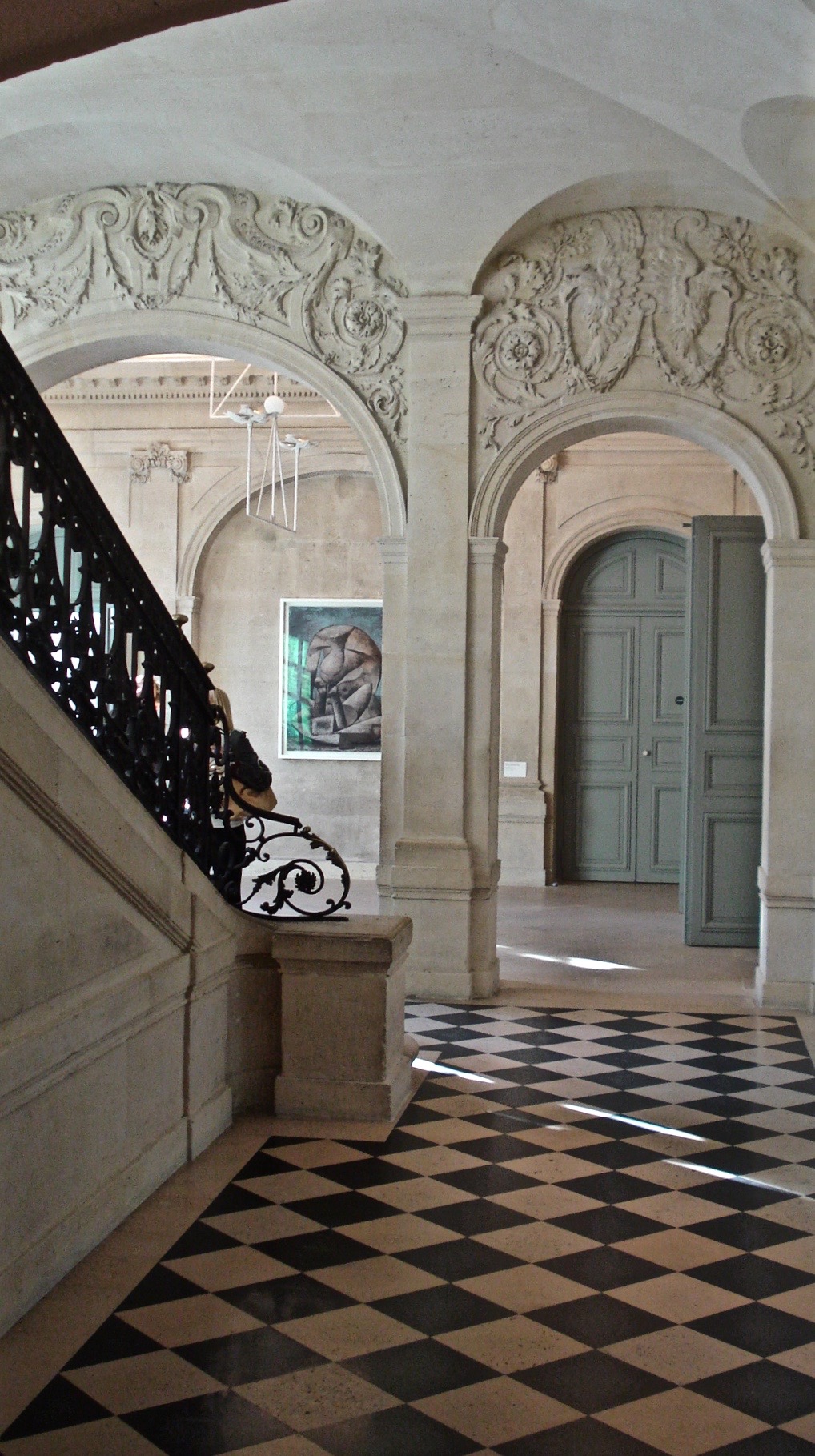
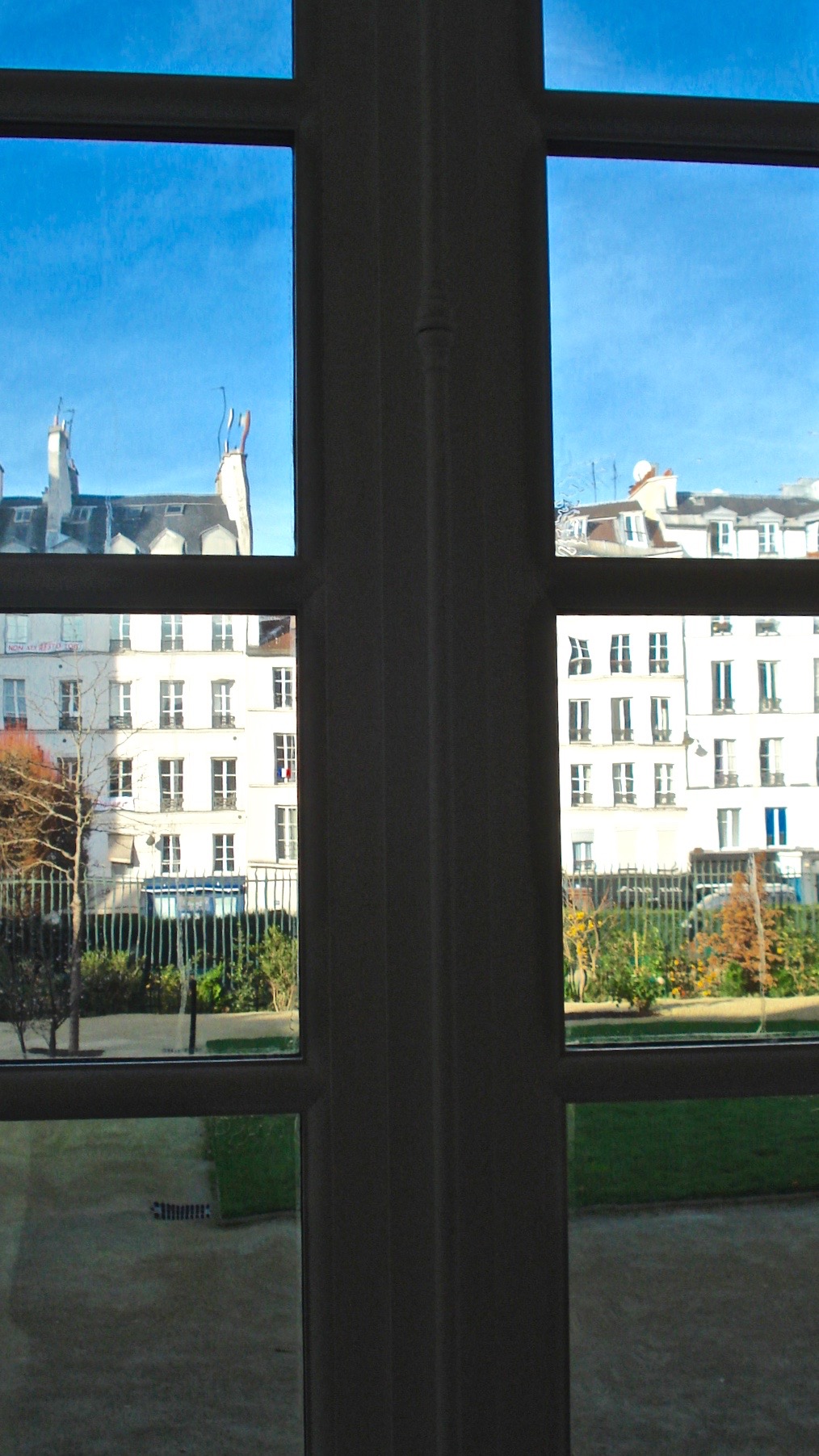
We also visited the Louvre. Though it was crowded, it was manageable and did not reek of humanity and feel like a cattle car as it did on our last visit. We could even get close enough to see the artwork. This time around we saw an entire wall of paintings by DaVinci. In one picture I caught John and Ethan pointing toward heaven along with DaVinci’s John the Baptist. And the Venus de Milo actually looked beautiful this time around.
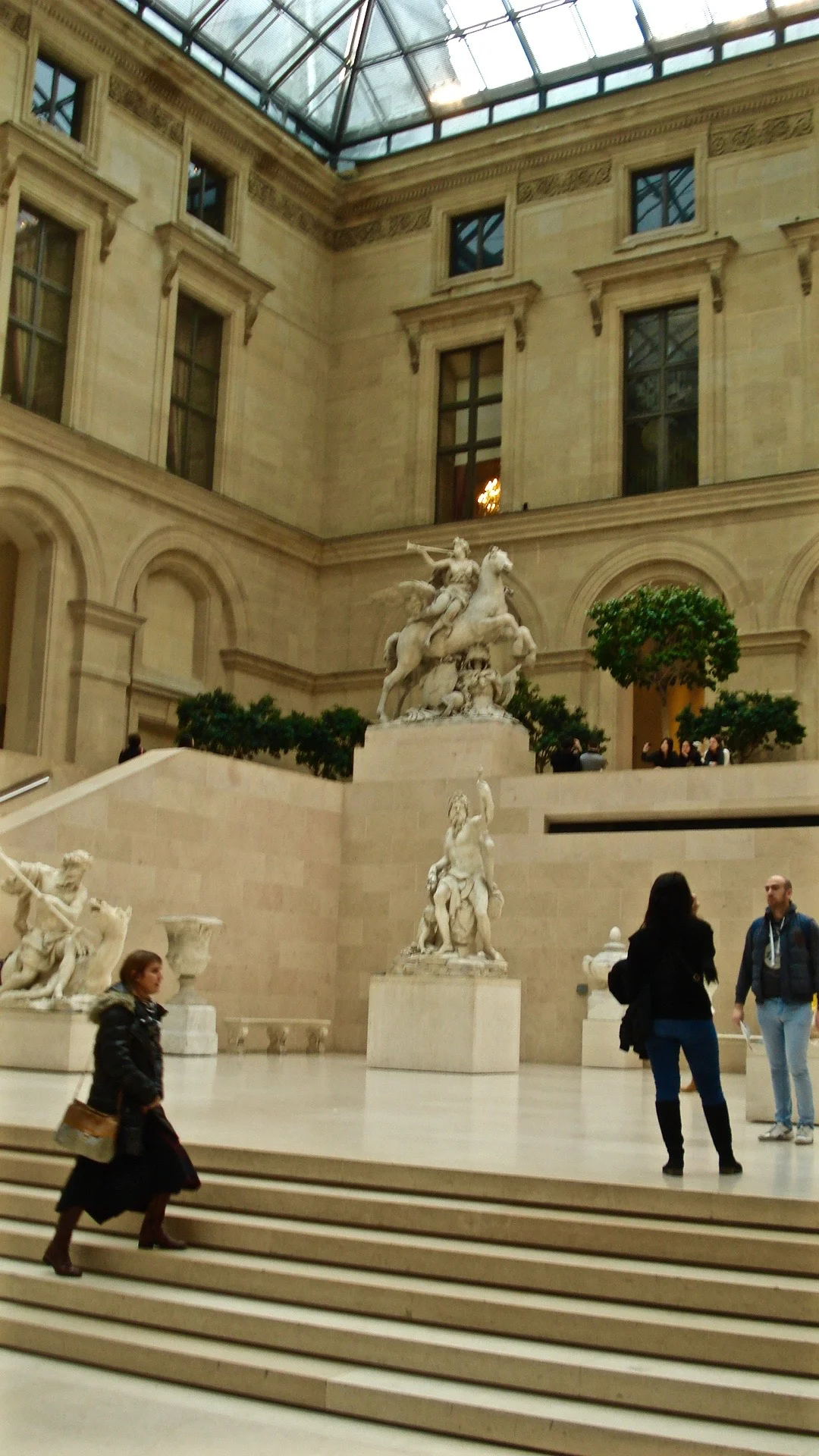
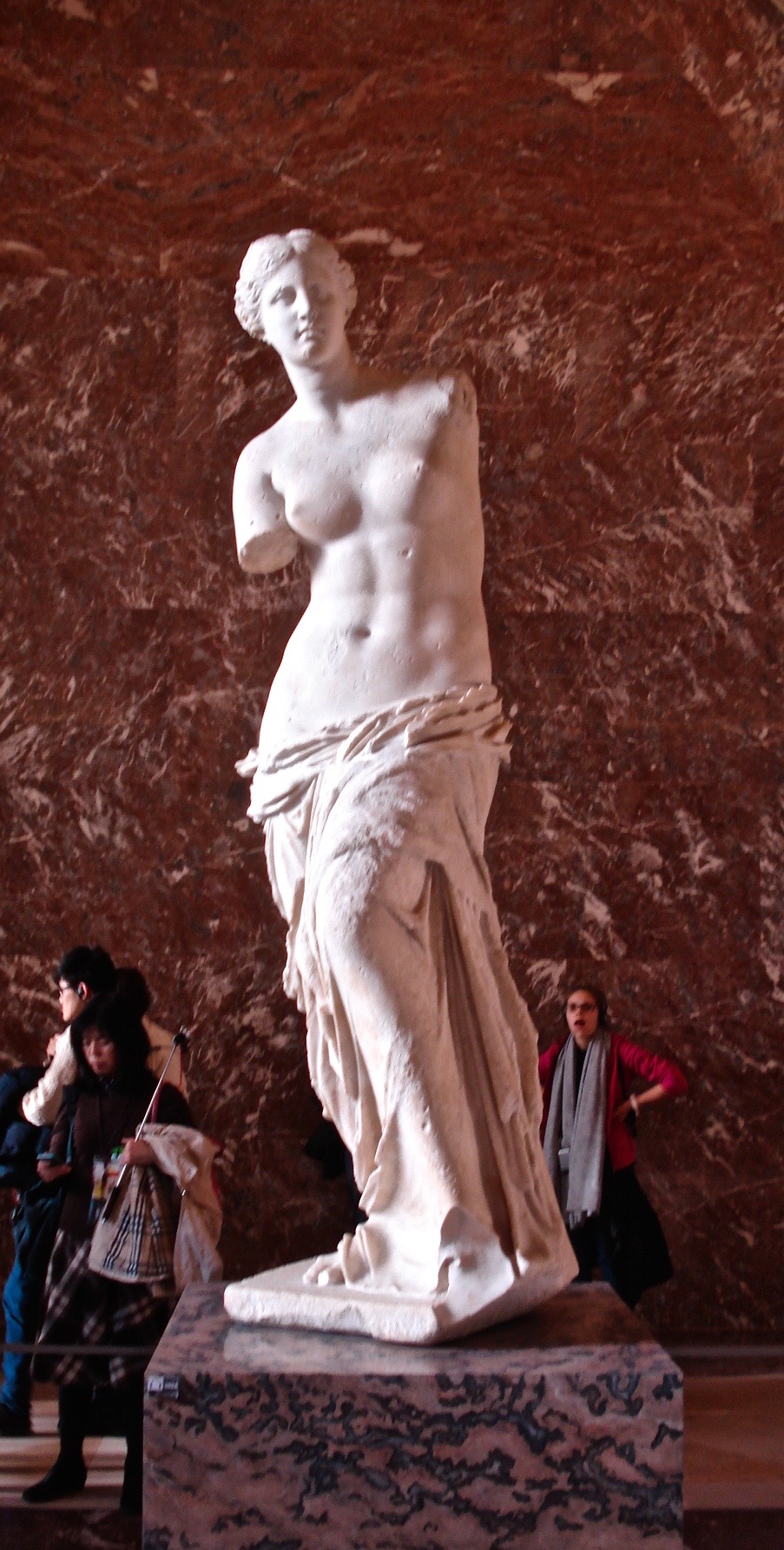
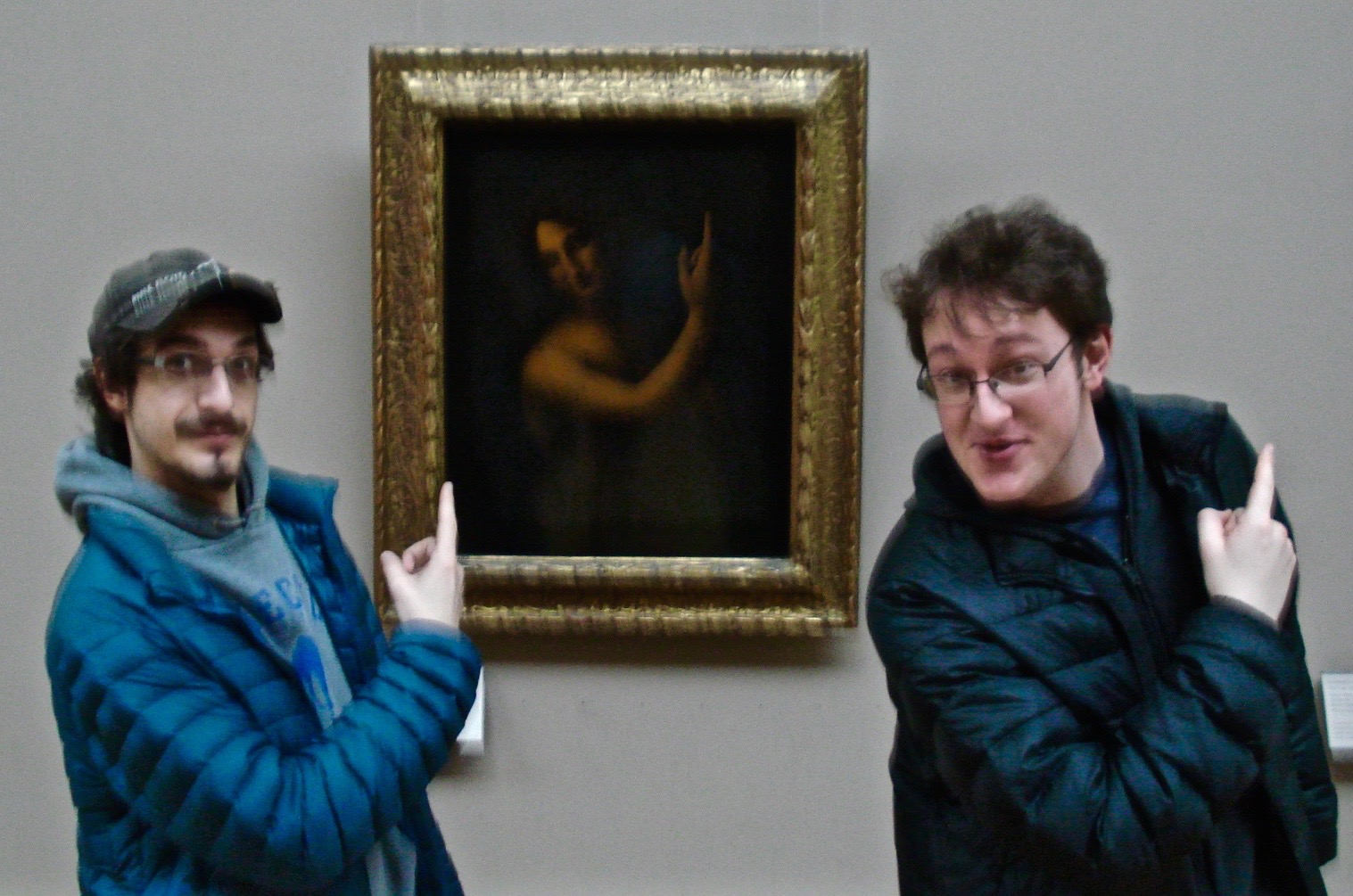
The third museum we visited was the Museum of Modern and Contemporary Art in Strasbourg. It was a great little museum with a historical tour through modern art that was as enlightening as any I have seen. We also liked an exhibit of the art of Gustave Dore who was born in Strasbourg but became famous in Paris (providing a nice unity to our trip). It seems like his best work was done in the 1870s; he was an artist that was really pre-impressionist, but he had unusual elements and style for his time. I loved both his watercolors and his oils. As we moved through the museum, the more contemporary the art got, the more we lost interest, especially in some of the last installations that only moved us to exit the museum.
I have included one final picture of some artwork—of an installation in front of the Hotel de Ville. It was composed of plaster casts of turtles with army helmets on their backs. The sculptor said it represented long-lived and peaceful turtles juxtaposed with all the soldiers from different countries representing the non-peaceful confrontations around us..
And now, before I end this travelogue, I must say something about the street music we encountered. We found quite a variety of street musicians and subway musicians. I have posted pictures of my four favorites—first, two old guys in Strasbourg, dressed up as Santas and singing old Alsatian Christmas songs that I had never heard before but that many on the street seemed to know, as they sang along; second, a rag-tag band, also in Strasbourg, that seemed to be a mash up of jazz, gypsy music, and Alsatian folk music; third, a young punk woman in the Paris Metro playing an electric guitar with deafening and scorching heavy metal chords; and, fourth, a woman in the Metro playing Pachebel’s Canon on the double bass, without any electric amplification. For her we stayed to listen to the entire piece, applauded her afterwards, and put down some coins. She curtsied to us in return. I also include a photo of the most beat-up bass I have ever seen. Maybe I should have made an offer on it, but how would we have got it home?
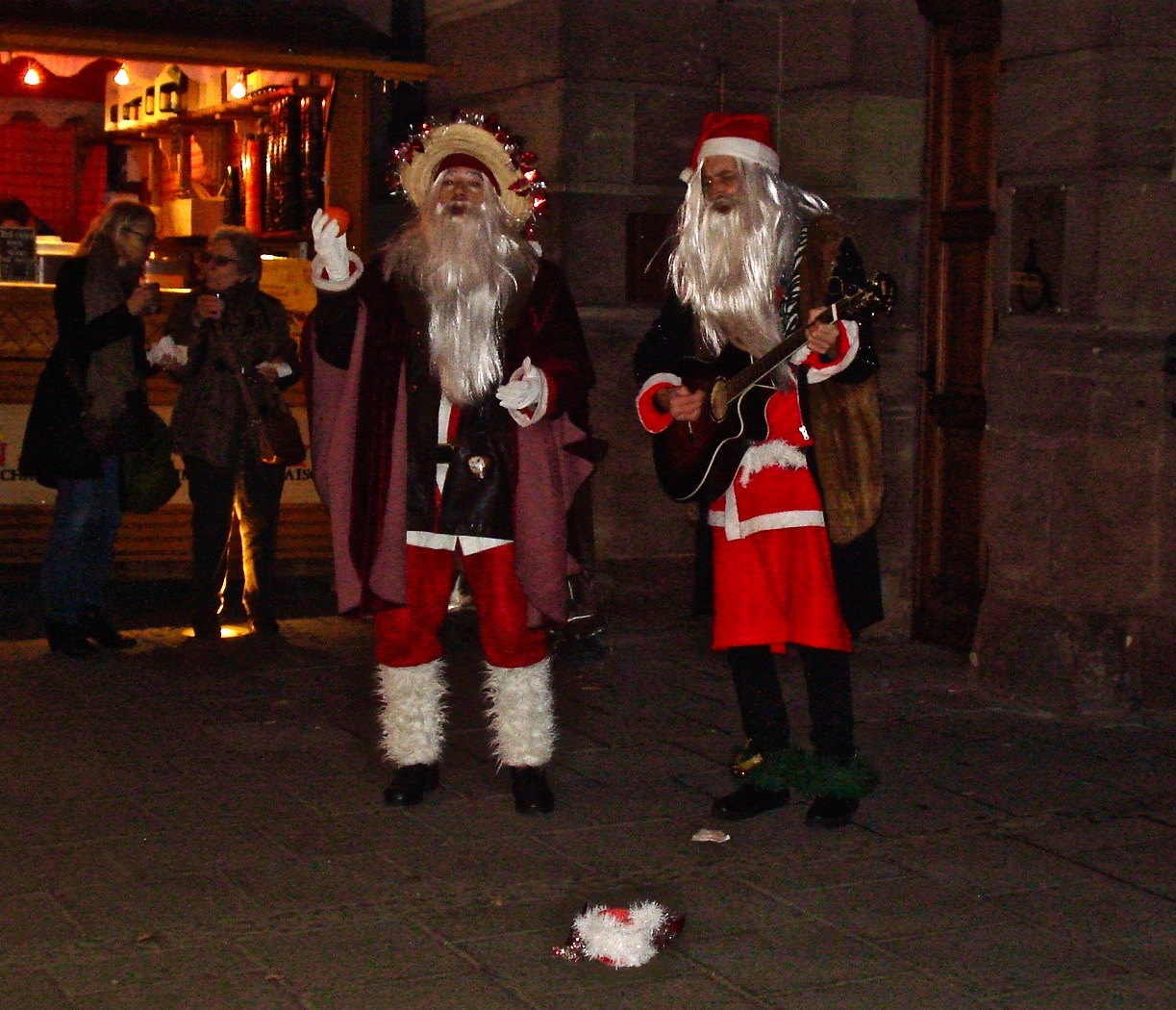
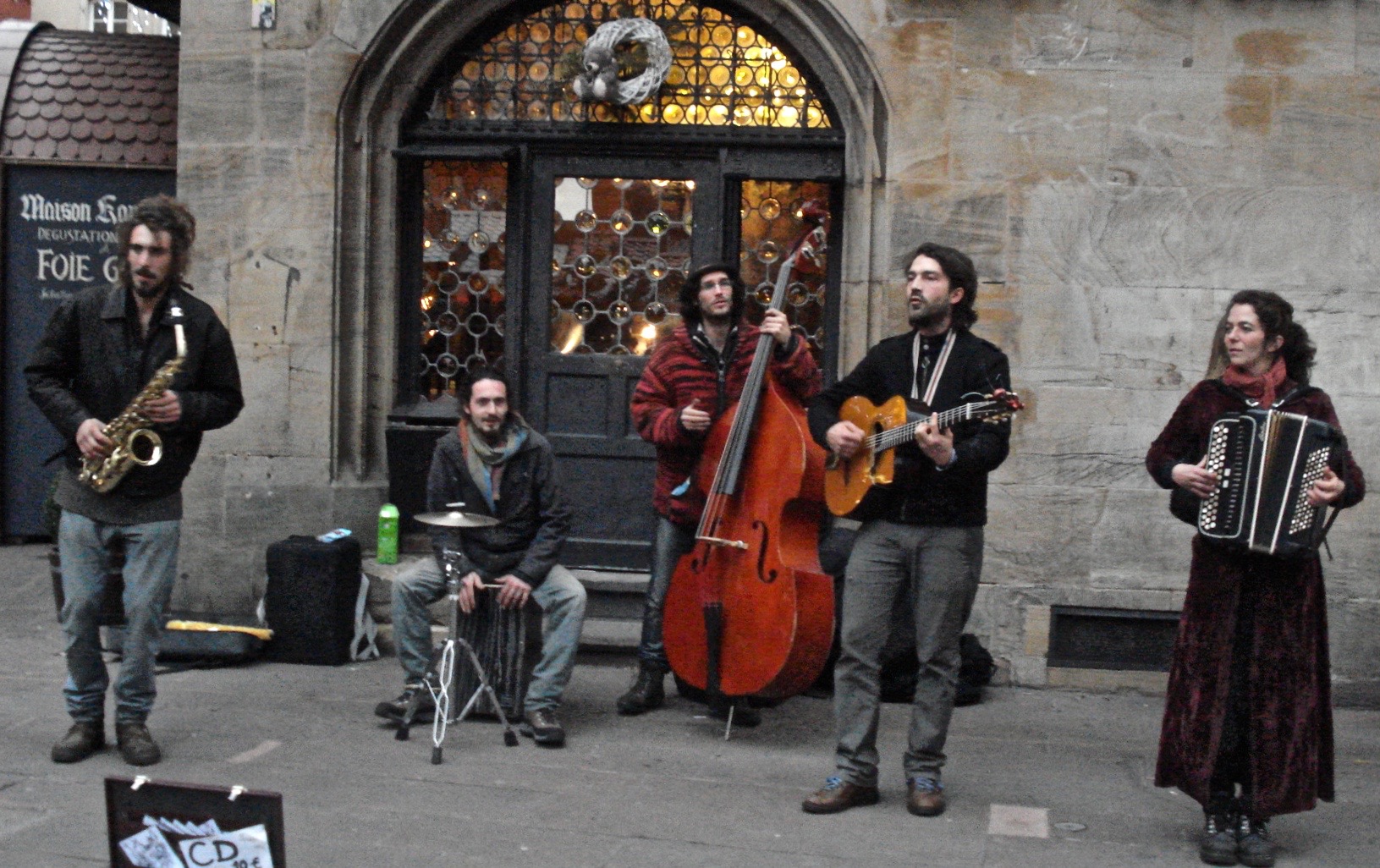
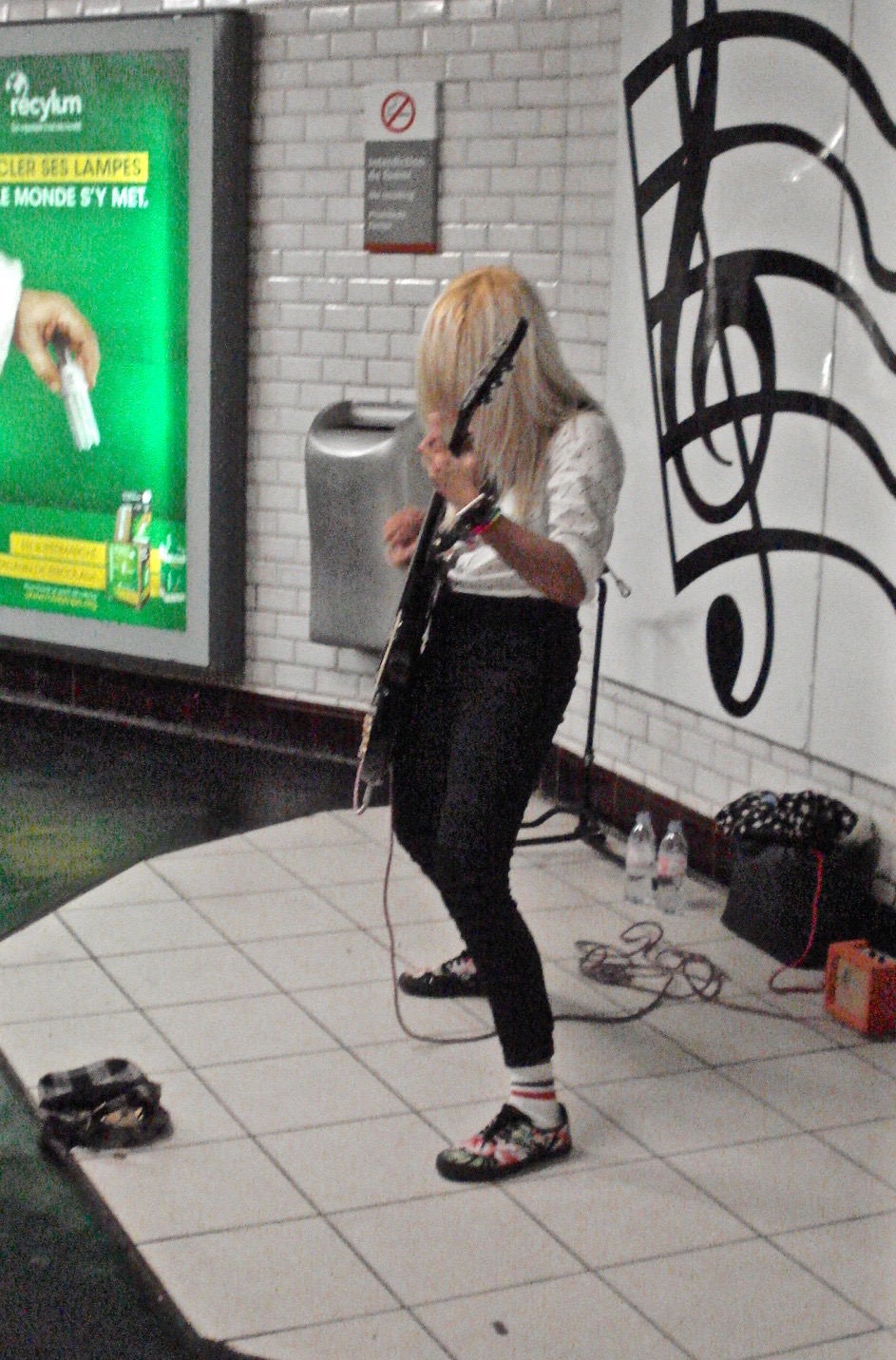
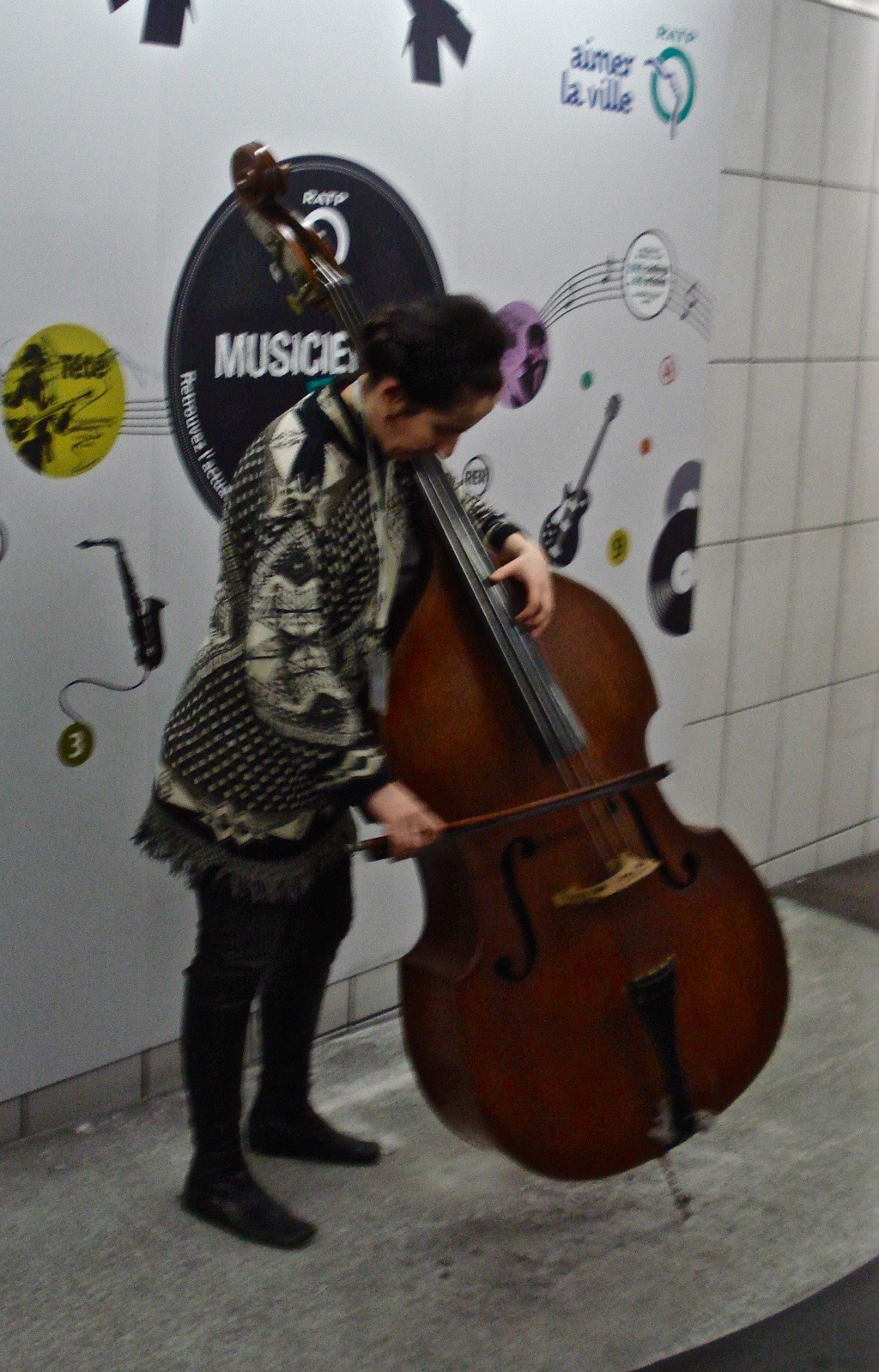
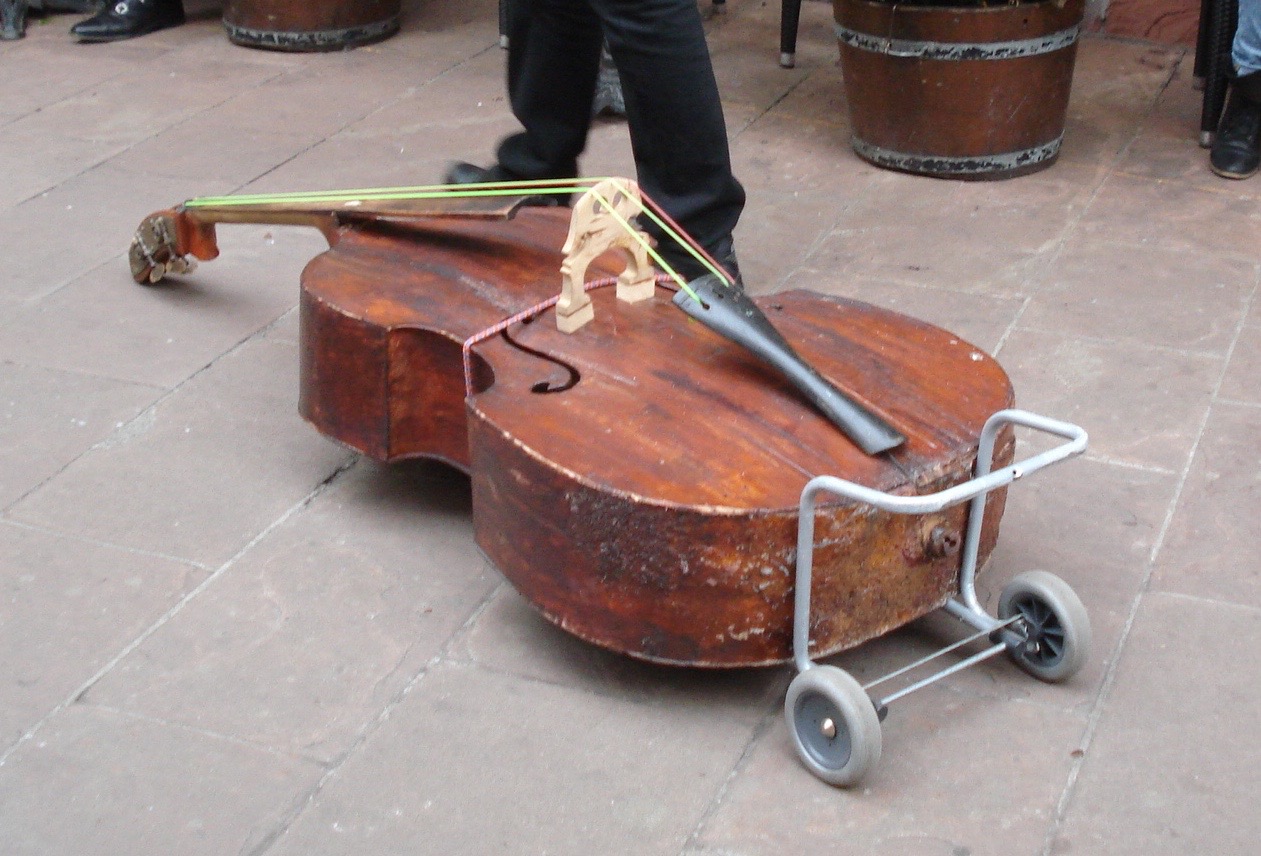
I love Europe. I love France. I love Paris. I appreciate the opportunity we had to make this trip. When we were friendly, people were friendly in return. The weather was beautiful.
And so now I end with the only refrain I still know from a song I heard a long time ago—my love song to Paris:
“The Seine, the Seine, when will I again
Meet her there, greet her there,
On the moonlit banks of the Seine.”

